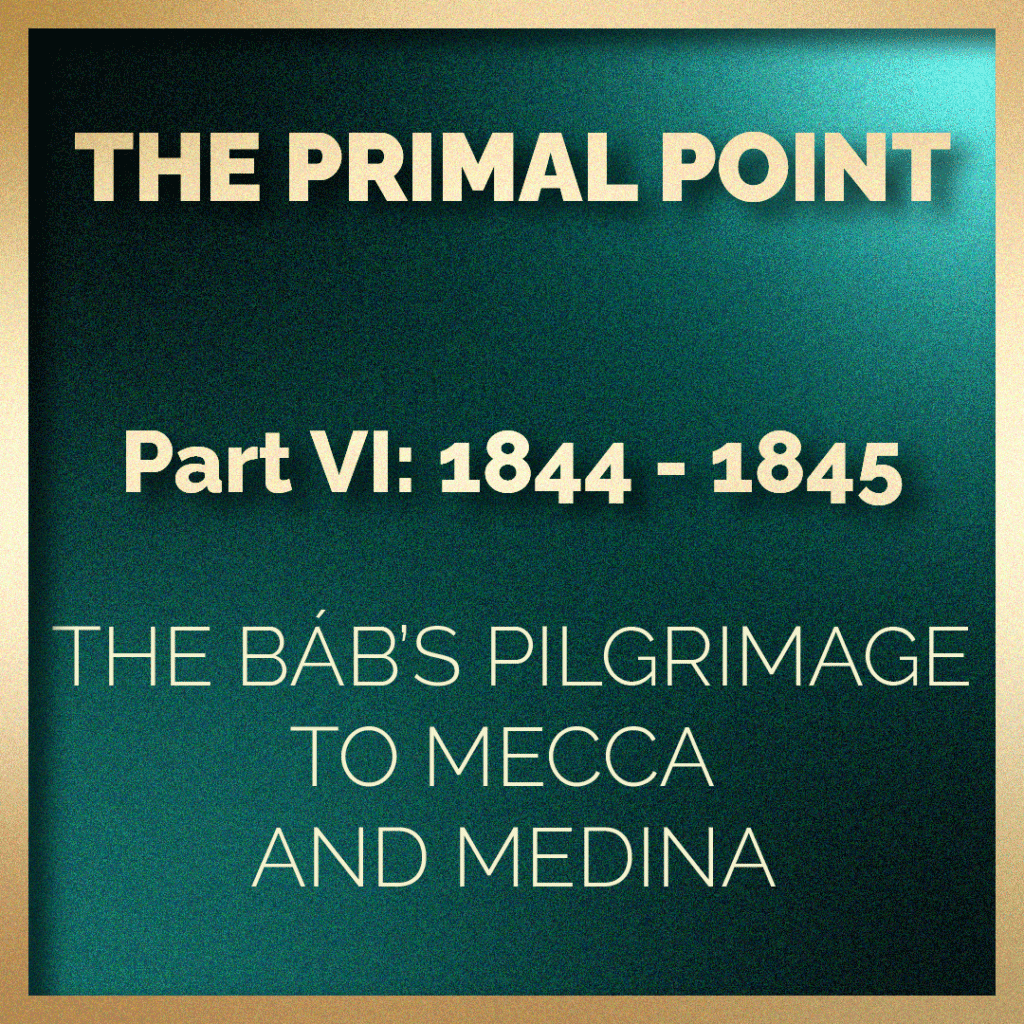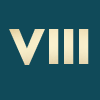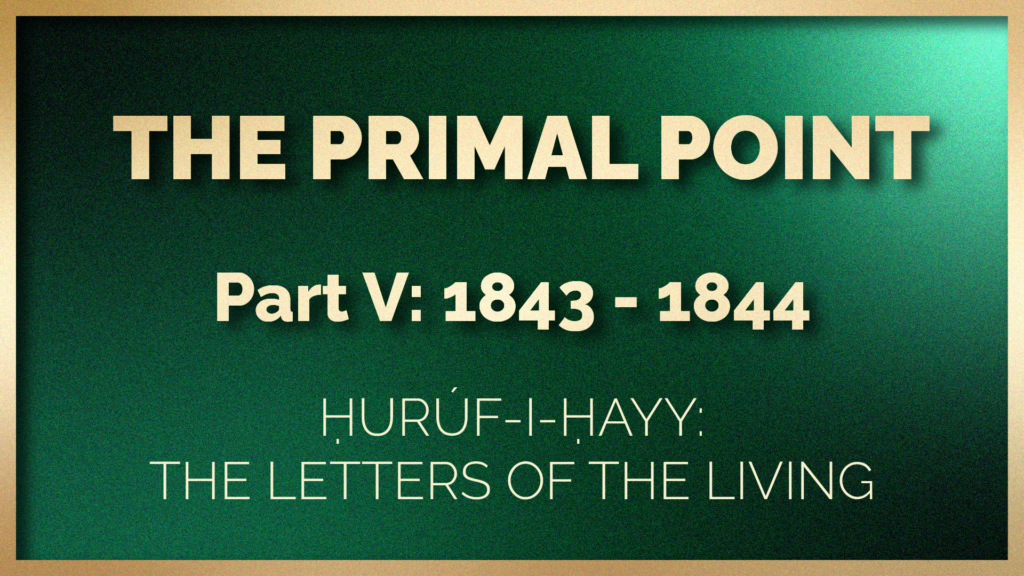
Written and illustrated by Violetta Zein
This part covers the life of the Báb from the age of 24 in 1843 to the age of 25 in 1844, and events in the lives of the 18 Letters of the Living from their birth to the death of the last Letter of the Living, Mullá Báqir-i-Tabrízí, in 1881.
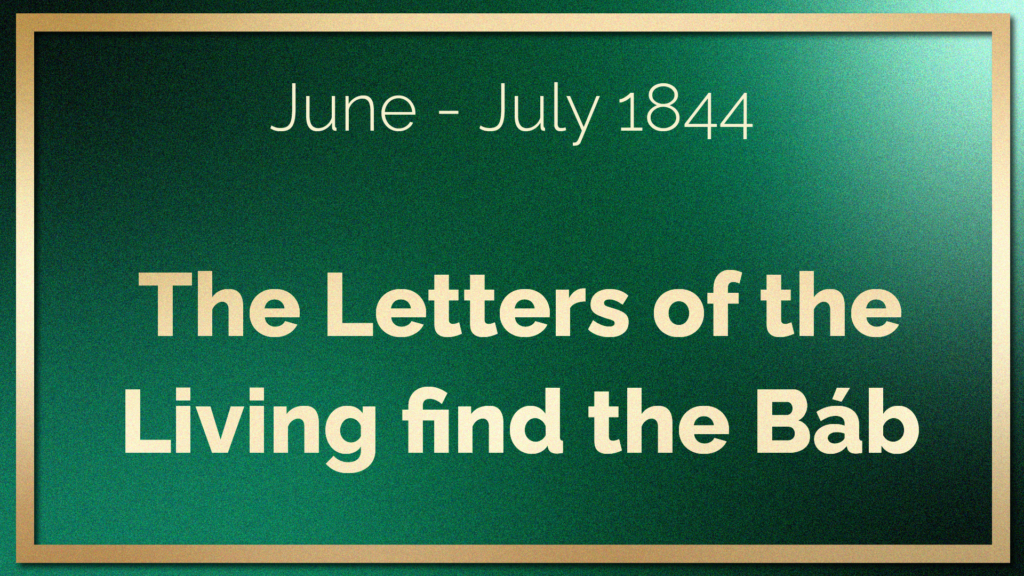
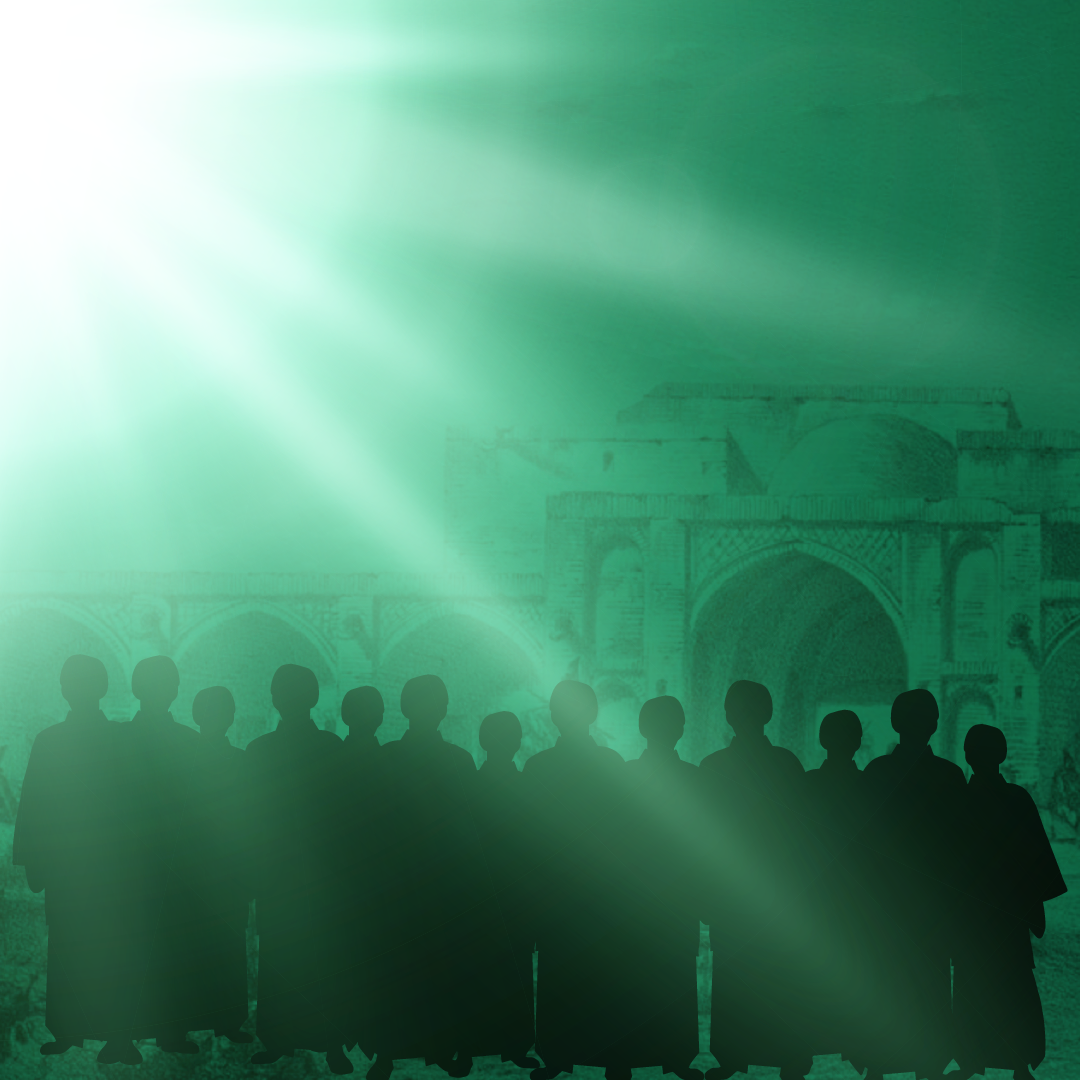
“Thirteen”: An artistic rendition of the arrival of Mullá ‘Alíy-i-Bastamí and his 12 companions in Shíráz, drawn by the dawning light of divine Revelation. © Violetta Zein
After Mullá Ḥusayn had recognized the Báb and become the first Letter of the Living, the next 13 disciples of the Báb arrived in Shíráz together, just as He had predicted, sometime in late June 1844.
Mullá ‘Alíy-i-Bastamí was among them and a few days after his arrival, he confronted Mullá Ḥusayn:
“How is it that we now see you teaching the people and conducting their prayers and devotions with the utmost tranquillity? Those evidences of agitation and expectancy seem to have vanished from your countenance. Tell us, we beseech you, the reason, that we too may be delivered from our present state of suspense and doubt.”
Mullá Ḥusayn could not reveal the reason for his newfound peace of mind and bliss, but as he reassured him, Mullá ‘Alíy-i-Bastamí realized what had happened, and begged him to disclose the truth to him. Mullá Ḥusayn told him to trust in God, and God would appease the tumult in his heart.
Utterly enkindled after his conversation with Mullá Ḥusayn, Mullá ‘Alíy-i-Bastamí shared it with his 12 companions, and all 13 of them secluded themselves in their rooms, aflame and on fire, and beseeched God through prayer and fasting to burn the veils away and let them discover the Promised One.
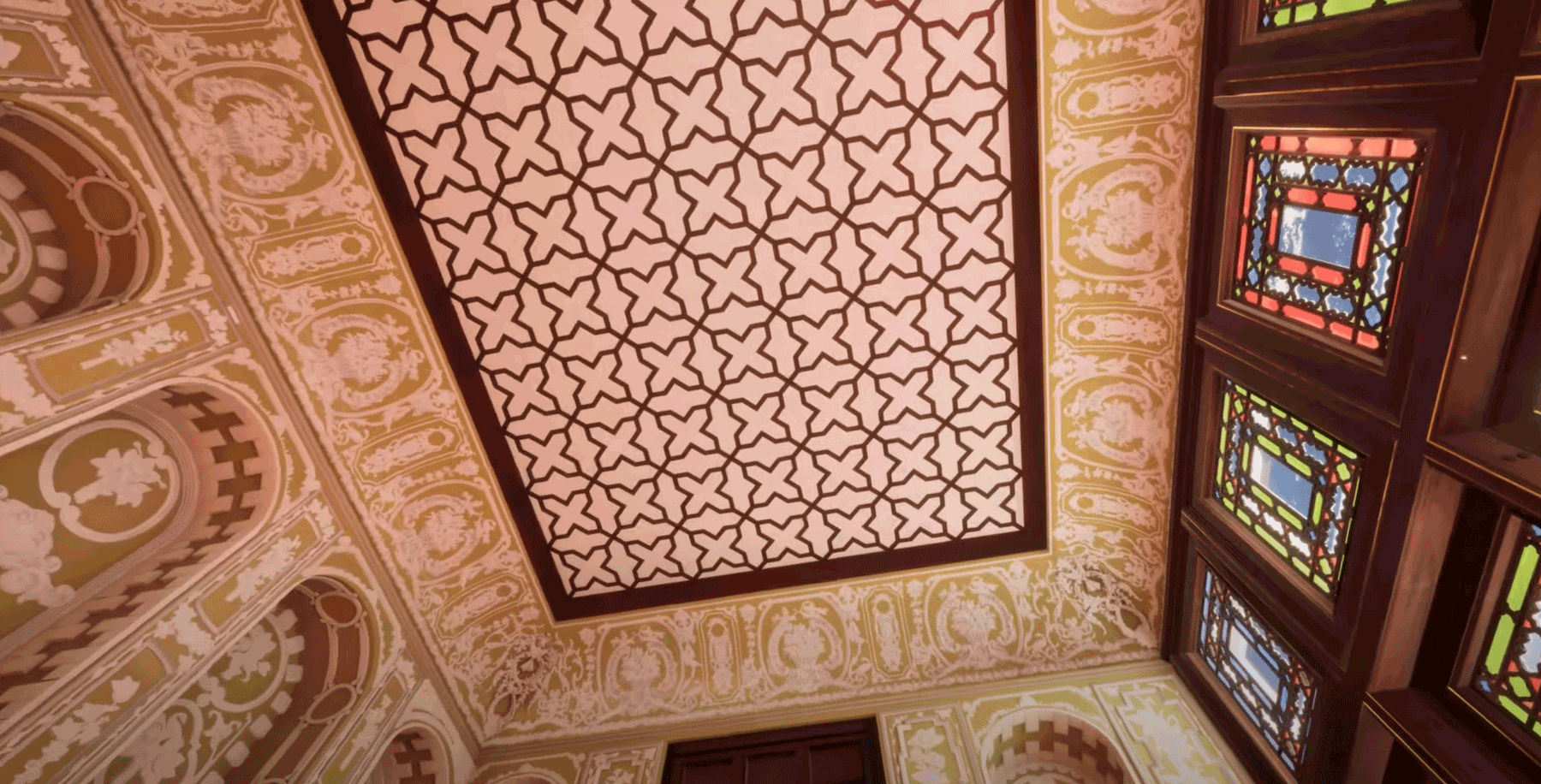
Stunning detail of the ceiling of the upper chamber of the Báb’s house, where Mullá ‘Alíy-i-Bastamí experiences a similar transcendental experience as Mullá Ḥusayn, a few weeks prior. Still image from “The House of the Báb: The Declaration Chamber” youtube video of the recreation of this room by Oscar Gomez.
On the third night of his seclusion, while he was wrapt in prayer, Mullá ‘Alíy-i-Bastamí had a vision. A light appeared before his eyes and began moving. He followed the light until he met the Báb. When he awoke, in the middle of the night, he ran out of his joy, mad with joy and happiness and threw himself into Mullá Ḥusayn’s arms, saying:
“Praise be to God who hath guided us hither! We had not been guided had not God guided us!”
That very morning at dawn, Mullá Ḥusayn accompanied Mullá ‘Alíy-i-Bastamí to the house of the Báb. They were greeted by Ḥájí Mubárak, who immediately recognized them and immediately told them that the Báb had summoned him to His presence at dawn and asked him to wait at the door of the house:
“Two guests are to arrive early this morning. Extend to them in My name a warm welcome. Say to them from Me: ‘Enter therein in the name of God.’”
Mullá ‘Alíy-i-Bastamí’s first meeting with the Báb was almost exactly similar in all ways to Mullá Ḥusayn’s with one major difference: he did not, as Mullá Ḥusayn had done, critically scrutinize the Báb’s proofs and testimonies. There was no back and forth argumentation in this meeting, nothing but the spirit of adoration and intimate, ardent fellowship.
It was as if the entire upper chamber of the Báb’s house had been given life by His divine utterance, and it seemed to Mullá ‘Alíy-i-Bastamí as if everything in the room vibrated with the testimony of the Báb.
Mullá ‘Alíy-i-Bastamí was the second person to accept the message of the Báb, but was elevated to the rank of Fourth Letter of the Living, after Mullá Ḥusayn’s brother and nephew, respectively the Second and Third Letters of the Living.
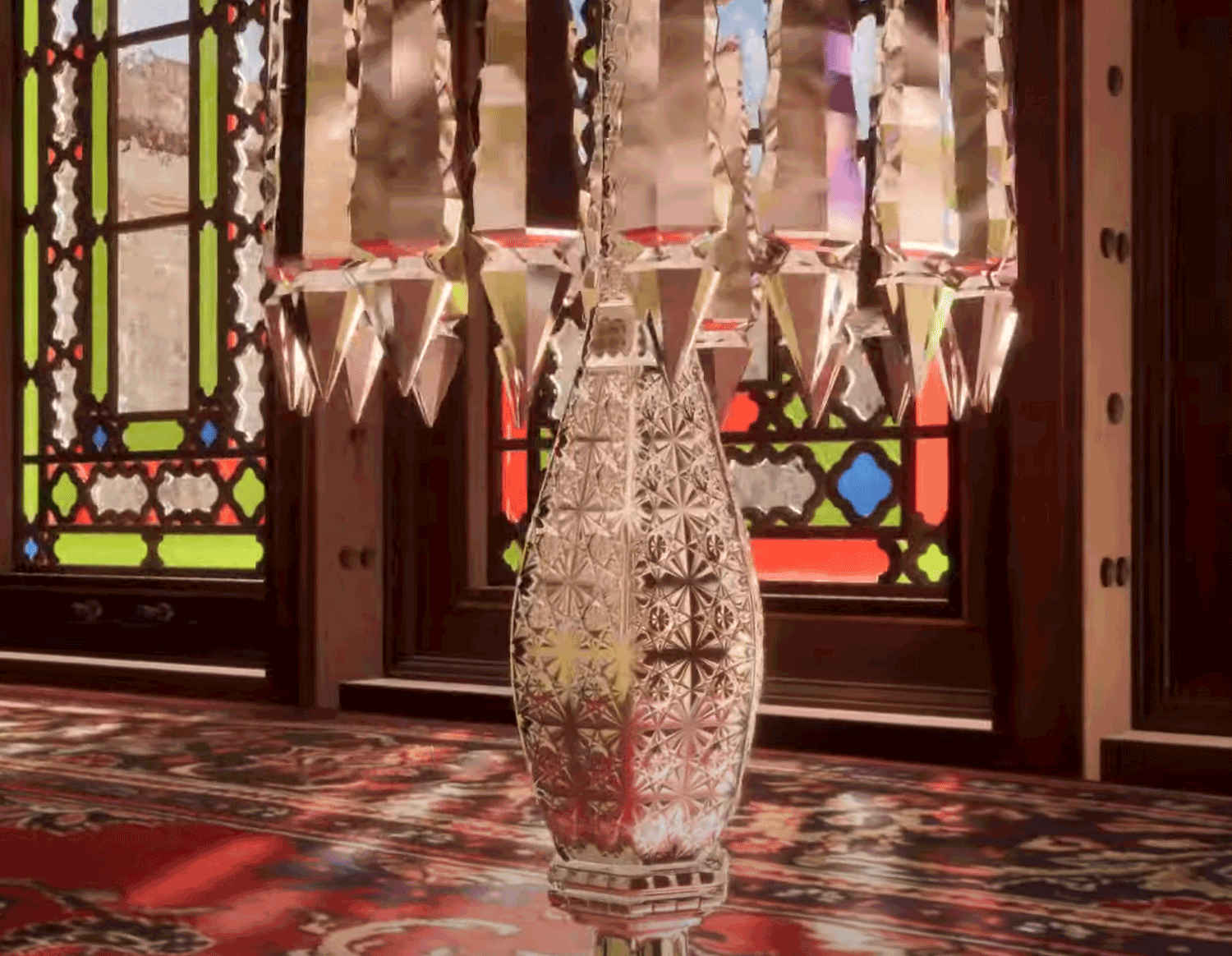
Detail of the lamp on the carpet of the upper chamber of the ‘Báb’s house where the 12 men would have attained His presence after their arrival in Shíráz, at the conclusion of their search. Still image from “The House of the Báb: The Declaration Chamber” youtube video of the recreation of this room by Oscar Gomez.
Forty days after the Declaration, starting in early July 1844, the remaining 17 Letters of the Living were enrolled under the banner of the Faith. It was during these 40 days that the Báb completed the Revelation of the Qayyúmu'l-Asmá'.
Some of His disciples recognized the Báb spontaneously, others communicated with Him in their dreams while asleep, and still others found Him through fasting or payers and others through visions.
The Sixteenth Letter of the Living was Mírzá Muḥammad-‘Alíy-i-Qazvíní, Ṭáhirih’s brother-in-law. True to his word, he conveyed to the Báb the sealed letter and spoken poem entrusted to him by Ṭáhirih, and in reply, the Báb made her the Seventeenth Letter of the Living, and only woman to hold this everlasting honor.
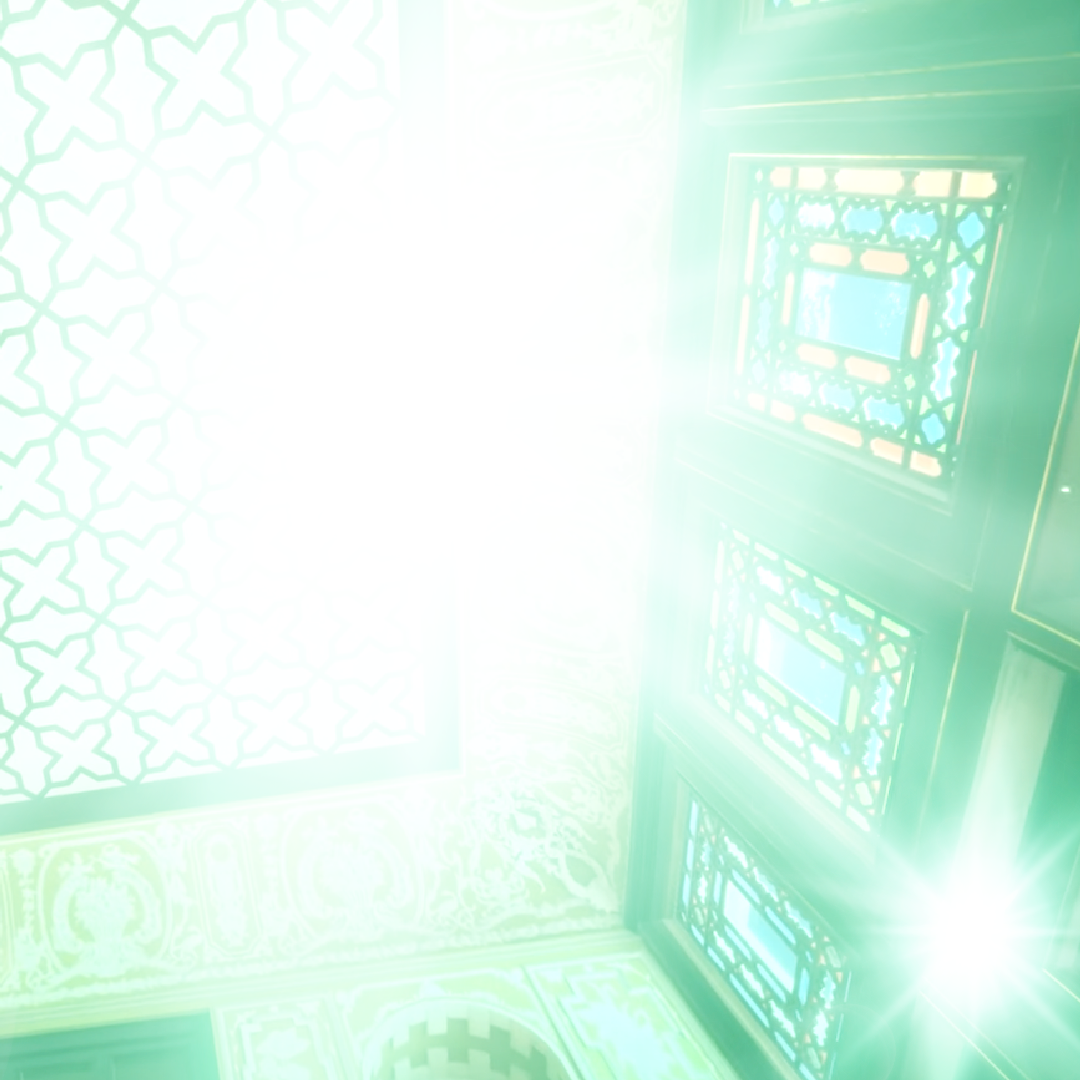
“Communion”: An abstract interpretation of the spiritual communion between the Báb in Shíráz and Quddús, making his way to the Promised One. © Violetta Zein
One night, as He was speaking to Mullá Ḥusayn, the Báb informed him their number was almost complete:
“Seventeen Letters have thus far enlisted under the standard of the Faith of God. There remains one more to complete the number. These Letters of the Living shall arise to proclaim My Cause and to establish My Faith. To-morrow night the remaining Letter will arrive and will complete the number of My chosen disciples.”
The next evening, as the Báb was returning home with Mullá Ḥusayn walking behind him, a disheveled youth, still in stained travel clothing came up to Mullá Ḥusayn and embraced him, asking him if he had attained his goal. When Mullá Ḥusayn tried to calm him down, the youth would have none of it.
The incredibly quiet and modest Shaykhí youth, just 22 years old, was Muḥammad ‘Alí, a descendent of the Imám Ḥasan, born in Barfurúsh. He would later be known as Quddús, and he had already recognized the Báb as the Promised One by the way He walked. He turned his eyes to the Báb and asked Mullá Ḥusayn:
“Why seek you to hide Him from me? I can recognise Him by His gait. I confidently testify that none besides Him, whether in the East or in the West, can claim to be the Truth. None other can manifest the power and majesty that radiate from His holy person.”
Mullá Ḥusayn was astonished. He walked over to the Báb and informed Him of what had happened, but the Báb was not surprised, stating
“Marvel not at his strange behaviour. We have in the world of the spirit been communing with that youth. We know him already. We indeed awaited his coming. Go to him and summon him forthwith to Our presence.”
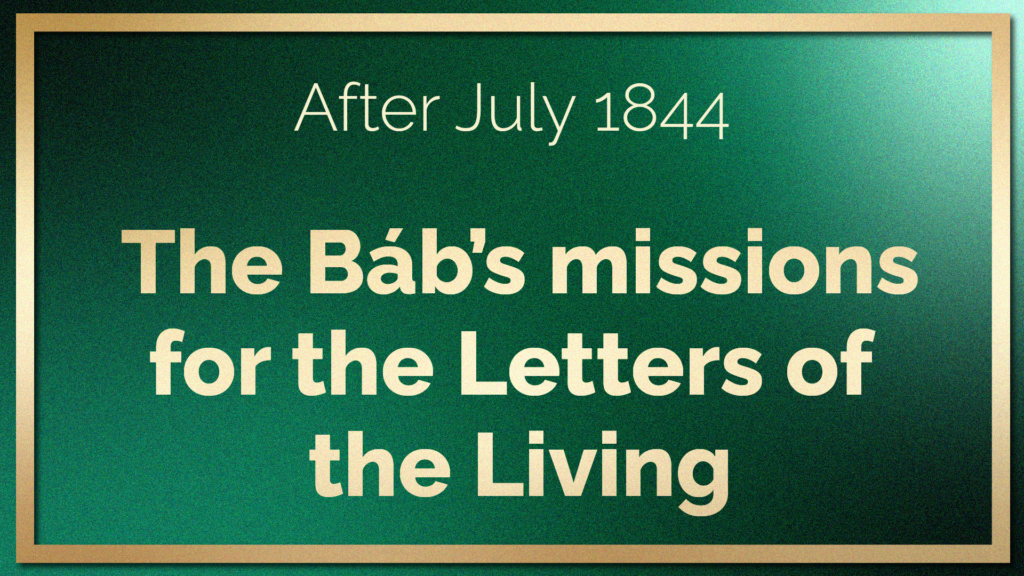
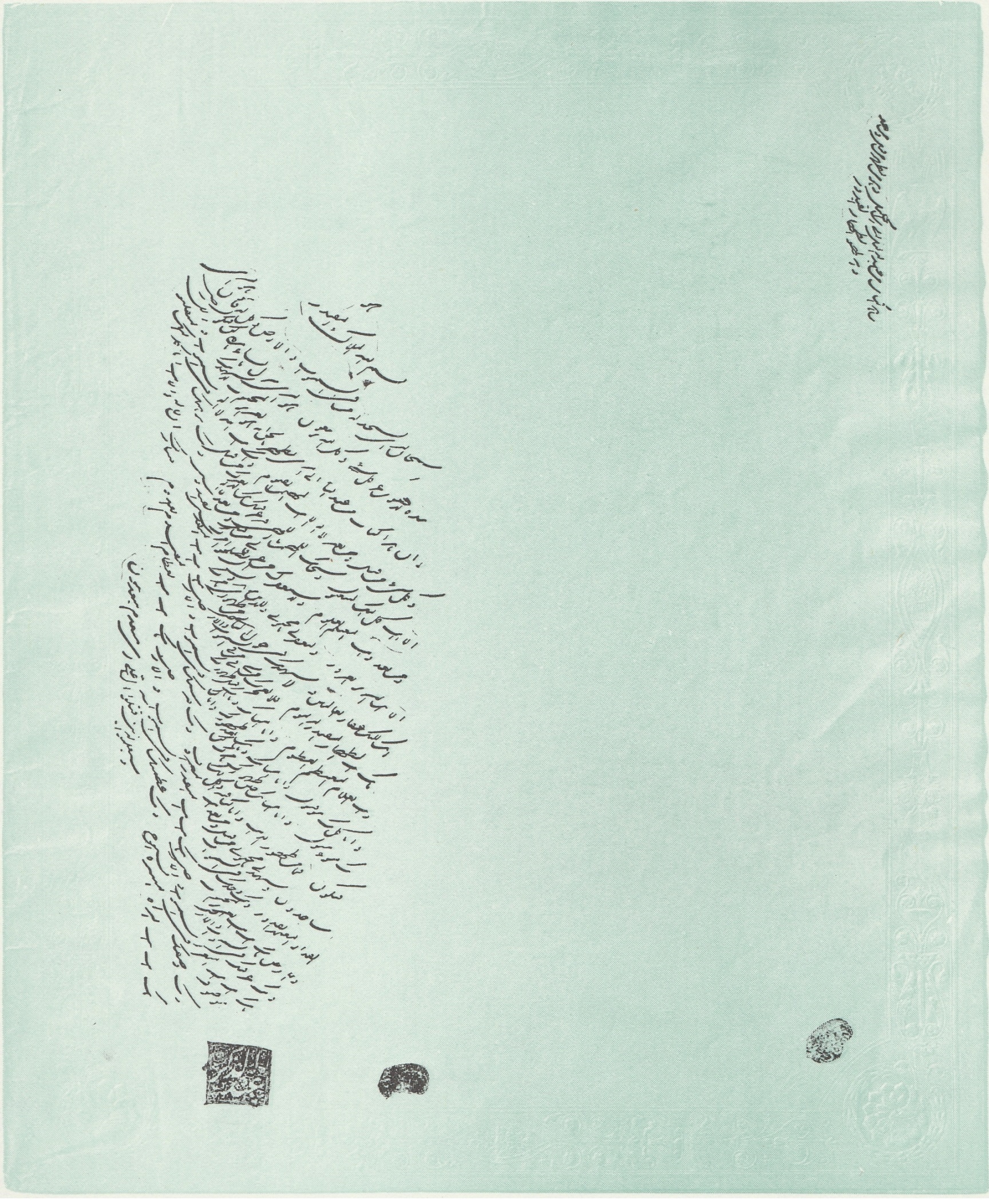
This is not the Tablet in the story below. That Tablet has been lost, this is one of several Tablets which the Báb revealed for Bahá'u'lláh, addressing Him as “Him Whom God shall make Manifest”. This particular Tablet is Partial Inventory ID: BB00285. Source: Facsimile of the Báb's autograph Tablets addressed to the Letters of the Living and to Bahá'u'lláh, Nabil, The Dawn-Breakers, page XXI.
Mullá Ḥusayn was certain that he would be chosen as the Báb’s companion for His pilgrimage to Mecca and Medina, but the Báb had something more important in mind for the First Letter of the Living.
As soon as the Báb had decided to leave for pilgrimage, He summoned Mullá Ḥusayn and entrusted him with a sensitive and confidential mission, much more specific and much more important than those of the other Letters of the Living.
Although the Báb did not tell Mullá Ḥusayn this, his mission was to find Bahá'u'lláh in Ṭihrán and deliver Him a scroll, calling Him to recognize the Báb.
The Báb spoke to Mullá Ḥusayn in glowing, marvelous allusions, and told him that in Ṭihrán, a Mystery was enshrined, a Mystery that would, He affirmed, transcend the light shed by His own Revelation.
In a long address to Mullá Ḥusayn, the Báb gave him very specific instructions on how to find Bahá'u'lláh in Ṭihrán, including through which towns and cities he should travel, and where he should go after this important mission:
“The days of our companionship are approaching their end. My Covenant with you is now accomplished. Gird up the loins of endeavour, and arise to diffuse My Cause. Be not dismayed at the sight of the degeneracy and perversity of this generation, for the Lord of the Covenant shall assuredly assist you. Verily, He shall surround you with His loving protection, and shall lead you from victory to victory…Those whom you find receptive to your call, share with them the epistles and tablets We have revealed for you, that, perchance, these wondrous words may cause them to turn away from the slough of heedlessness, and soar into the realm of the Divine presence. In this pilgrimage upon which We are soon to embark, We have chosen Quddús as Our companion. We have left you behind to face the onslaught of a fierce and relentless enemy. Rest assured, however, that a bounty unspeakably glorious shall be conferred upon you. Follow the course of your journey towards the north, and visit on your way Iṣfahán, Káshán, Qum, and Tihrán. Beseech almighty Providence that He may graciously enable you to attain, in that capital, the seat of true sovereignty, and to enter the mansion of the Beloved. A secret lies hidden in that city. When made manifest, it shall turn the earth into paradise. My hope is that you may partake of its grace and recognise its splendour. From Tihrán proceed to Khurásán, and there proclaim anew the Call. From thence return to Najaf and Karbilá, and there await the summons of your Lord. Be assured that the high mission for which you have been created will, in its entirety, be accomplished by you. Until you have consummated your work, if all the darts of an unbelieving world be directed against you, they will be powerless to hurt a single hair of your head. All things are imprisoned within His mighty grasp. He, verily, is the Almighty, the All-Subduing.”
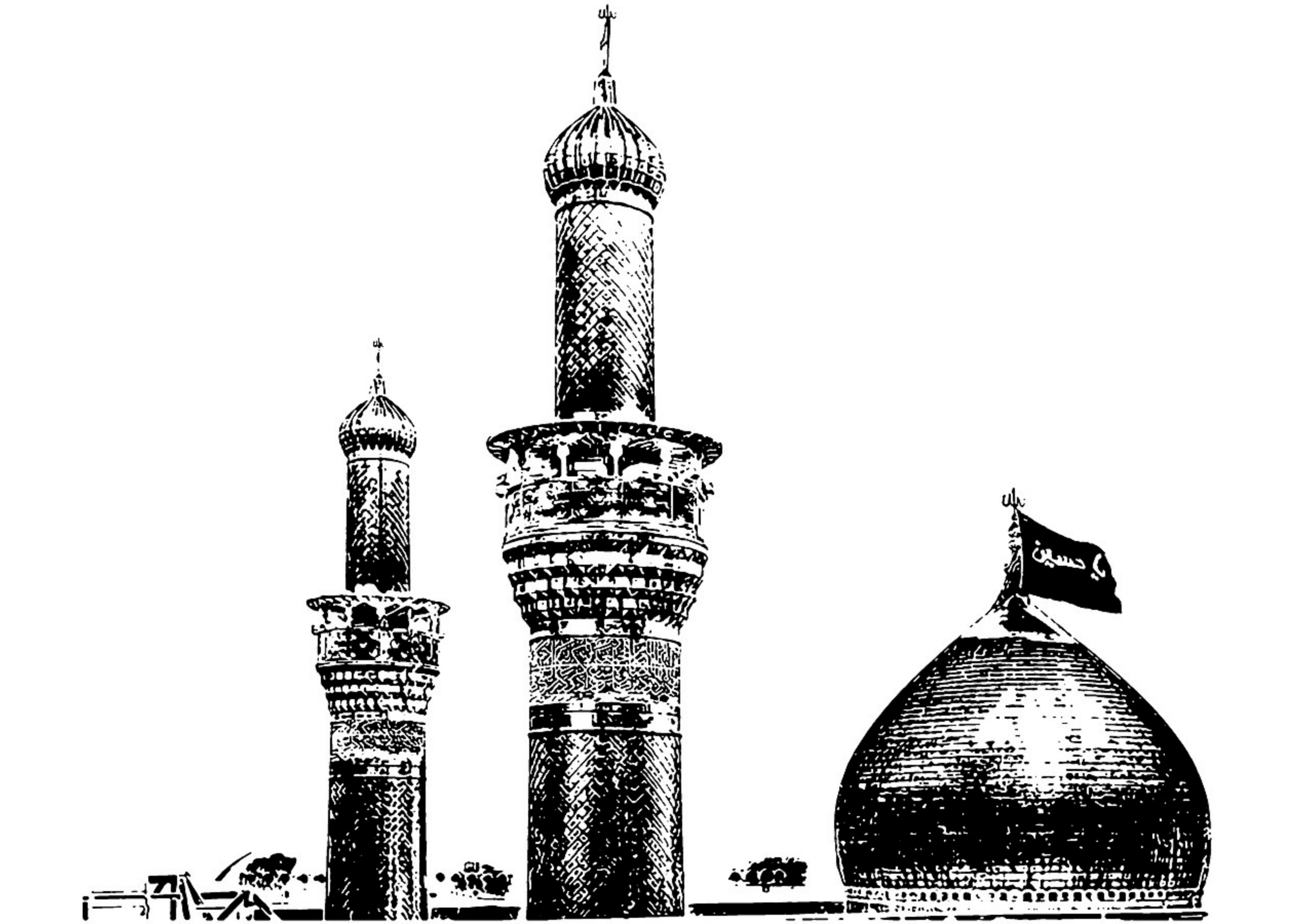
Line drawing of the Shrine of Imám Ḥusayn, in Karbilá. Source: Wikimedia Commons.
The Báb then summoned Mullá ‘Alíy-i-Bastamí, the Fourth Letter of the Living, and sent him to Najáf and Karbilá in 'Iráq to proclaim His message among the Shaykhís. In His inspiring farewell address, the Báb alluded to severe trials he would face:
“Your faith must be immovable as the rock, must weather every storm and survive every calamity. Suffer not the denunciations of the foolish and the calumnies of the clergy to afflict you, or to turn you from your purpose. For you are called to partake of the celestial banquet prepared for you in the immortal Realm. You are the first to leave the House of God, and to suffer for His sake. If you be slain in His path, remember that great will be your reward, and goodly the gift which will be bestowed upon you.”
Mullá ‘Alíy-i-Bastamí, set on fire by the words of the Báb, left immediately to accomplish his mission.
He was the first to proclaim the Báb’s message in Najaf and Karbilá, the first to bring the Qayyúmu'l-Asmá' to 'Iráq, and he claimed the everlasting honor of being the first martyr of the Bábí Dispensation.
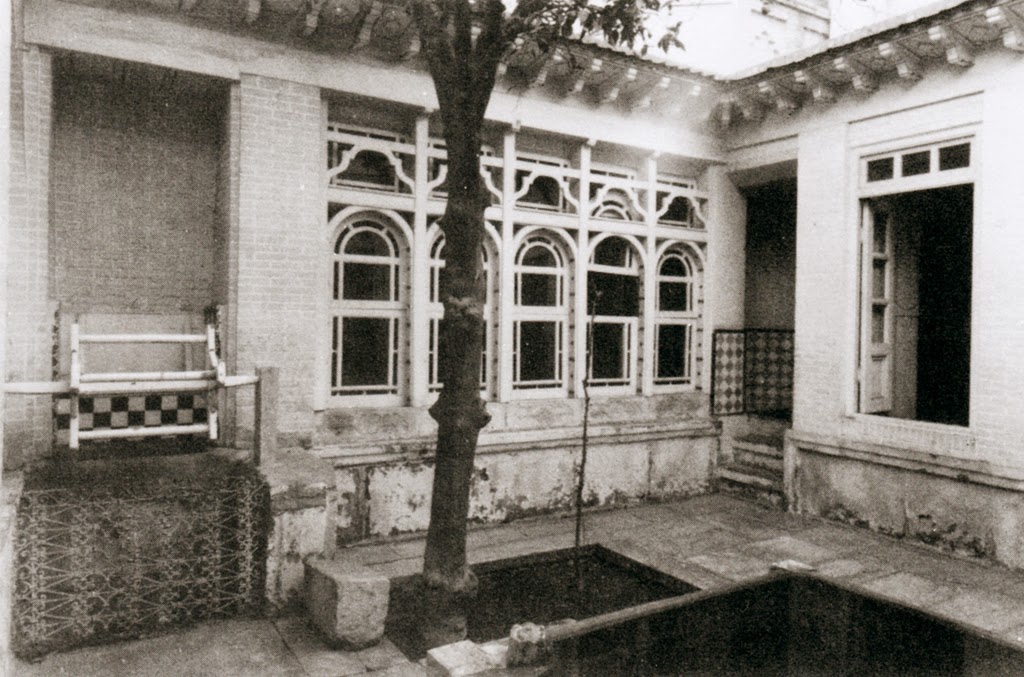
Courtyard of the House of the Báb in Shíráz, showing the orange tree planted by the Báb, a reflecting pool and, on the left, a well. The 16 Letters of the Living present in Shíráz to recognize the Báb and receive His instructions would have walked through this courtyard. Source: Bahá'í Points of Interest.
After the Báb had informed Mullá Ḥusayn of the nature of His mission, after He had told Quddús he was to accompany Him on pilgrimage and after He had sent Mullá ‘Alíy-i-Bastamí on his mission, the Báb summoned together the remaining 14 Letters of the Living in Shíráz into His presence.
In this gathering, the Báb addressed His stirring parting words to the Letters of the Living and gave them each a specific task. He dispersed them all, assigning some to their native provinces. He asked them to be cautious and moderate, He unveiled to them the loftiness of the rank they had been elevated to, and spurred them to action with a stirring, rousing farewell address recalling the Disciples of Jesus and assuring them of ultimate victory, if they did God’s bidding.
Collectively, they were mandated to raise the call that the Gate of the Promised One had been opened, but instructed them, at this time, not to make reference to His name and person.
The Báb also asked each Letter of the Living to record separately the name of every single person who embraced the Faith and send the lists to Him in sealed letters addressed to His uncle Ḥájí Mírzá Siyyid ‘Alí. He would then classify all the lists He received in 18 sets of 19 names each, and mention all the believers in the Tablet of God.
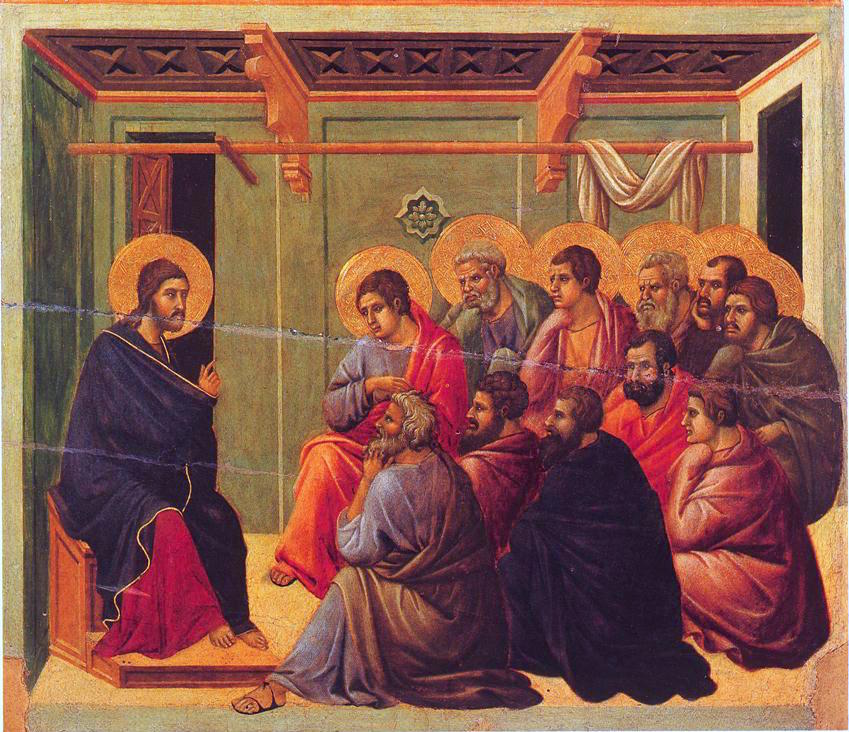
A double homage to this story about the Báb’s farewell address to the Letters of the Living: one because the Báb mentions the Disciples of Jesus Christ in His address, and two, because it is a depiction of a Manifestation of God giving a farewell address to His first Disciples, an image of the painting Mestà by Duccio, painted between 1308 and 1311. In this painting, Jesus Christ is giving the Farewell Discourse (John 14–17) to his disciples, after the Last supper. Source: Wikimedia Commons.
After giving them all their instructions, the Báb addressed to them these stirring parting words:
“O My beloved friends! You are the bearers of the name of God in this Day. You have been chosen as the repositories of His mystery. It behoves each one of you to manifest the attributes of God, and to exemplify by your deeds and words the signs of His righteousness, His power and glory. The very members of your body must bear witness to the loftiness of your purpose, the integrity of your life, the reality of your faith, and the exalted character of your devotion.
For verily I say, this is the Day spoken of by God in His Book: ‘On that day will We set a seal upon their mouths yet shall their hands speak unto Us, and their feet shall bear witness to that which they shall have done.’ Ponder the words of Jesus addressed to His disciples, as He sent them forth to propagate the Cause of God. In words such as these, He bade them arise and fulfil their mission: ‘Ye are even as the fire which in the darkness of the night has been kindled upon the mountain-top. Let your light shine before the eyes of men.
Such must be the purity of your character and the degree of your renunciation, that the people of the earth may through you recognise and be drawn closer to the heavenly Father who is the Source of purity and grace. For none has seen the Father who is in heaven. You who are His spiritual children must by your deeds exemplify His virtues, and witness to His glory.
You are the salt of the earth, but if the salt have lost its savour, wherewith shall it be salted? Such must be the degree of your detachment, that into whatever city you enter to proclaim and teach the Cause of God, you should in no wise expect either meat or reward from its people. Nay, when you depart out of that city, you should shake the dust from off your feet. As you have entered it pure and undefiled, so must you depart from that city.
For verily I say, the heavenly Father is ever with you and keeps watch over you. If you be faithful to Him, He will assuredly deliver into your hands all the treasures of the earth, and will exalt you above all the rulers and kings of the world.’
O My Letters! Verily I say, immensely exalted is this Day above the days of the Apostles of old. Nay, immeasurable is the difference! You are the witnesses of the Dawn of the promised Day of God. You are the partakers of the mystic chalice of His Revelation. Gird up the loins of endeavour, and be mindful of the words of God as revealed in His Book: ‘Lo, the Lord thy God is come, and with Him is the company of His angels arrayed before Him!’
Purge your hearts of worldly desires, and let angelic virtues be your adorning. Strive that by your deeds you may bear witness to the truth of these words of God, and beware lest, by ‘turning back,’ He may ‘change you for another people,’ who ‘shall not be your like,’ and who shall take from you the Kingdom of God.
The days when idle worship was deemed sufficient are ended. The time is come when naught but the purest motive, supported by deeds of stainless purity, can ascend to the throne of the Most High and be acceptable unto Him. ‘The good word riseth up unto Him, and the righteous deed will cause it to be exalted before Him.’ You are the lowly, of whom God has thus spoken in His Book: “And We desire to show favour to those who were brought low in the land, and to make them spiritual leaders among men, and to make them Our heirs.’
You have been called to this station; you will attain to it, only if you arise to trample beneath your feet every earthly desire, and endeavour to become those ‘honoured servants of His who speak not till He hath spoken, and who do His bidding.’
You are the first Letters that have been generated from the Primal Point, the first Springs that have welled out from the Source of this Revelation. Beseech the Lord your God to grant that no earthly entanglements, no worldly affections, no ephemeral pursuits, may tarnish the purity, or embitter the sweetness, of that grace which flows through you.
I am preparing you for the advent of a mighty Day. Exert your utmost endeavour that, in the world to come, I, who am now instructing you, may, before the mercy-seat of God, rejoice in your deeds and glory in your achievements. The secret of the Day that is to come is now concealed. It can neither be divulged nor estimated. The newly born babe of that Day excels the wisest and most venerable men of this time, and the lowliest and most unlearned of that period shall surpass in understanding the most erudite and accomplished divines of this age.
Scatter throughout the length and breadth of this land, and, with steadfast feet and sanctified hearts, prepare the way for His coming. Heed not your weaknesses and frailty; fix your gaze upon the invincible power of the Lord, your God, the Almighty.
Has He not, in past days, caused Abraham, in spite of His seeming helplessness, to triumph over the forces of Nimrod? Has He not enabled Moses, whose staff was His only companion, to vanquish Pharaoh and his hosts? Has He not established the ascendancy of Jesus, poor and lowly as He was in the eyes of men, over the combined forces of the Jewish people? Has He not subjected the barbarous and militant tribes of Arabia to the holy and transforming discipline of Muhammad, His Prophet? Arise in His name, put your trust wholly in Him, and be assured of ultimate victory.”
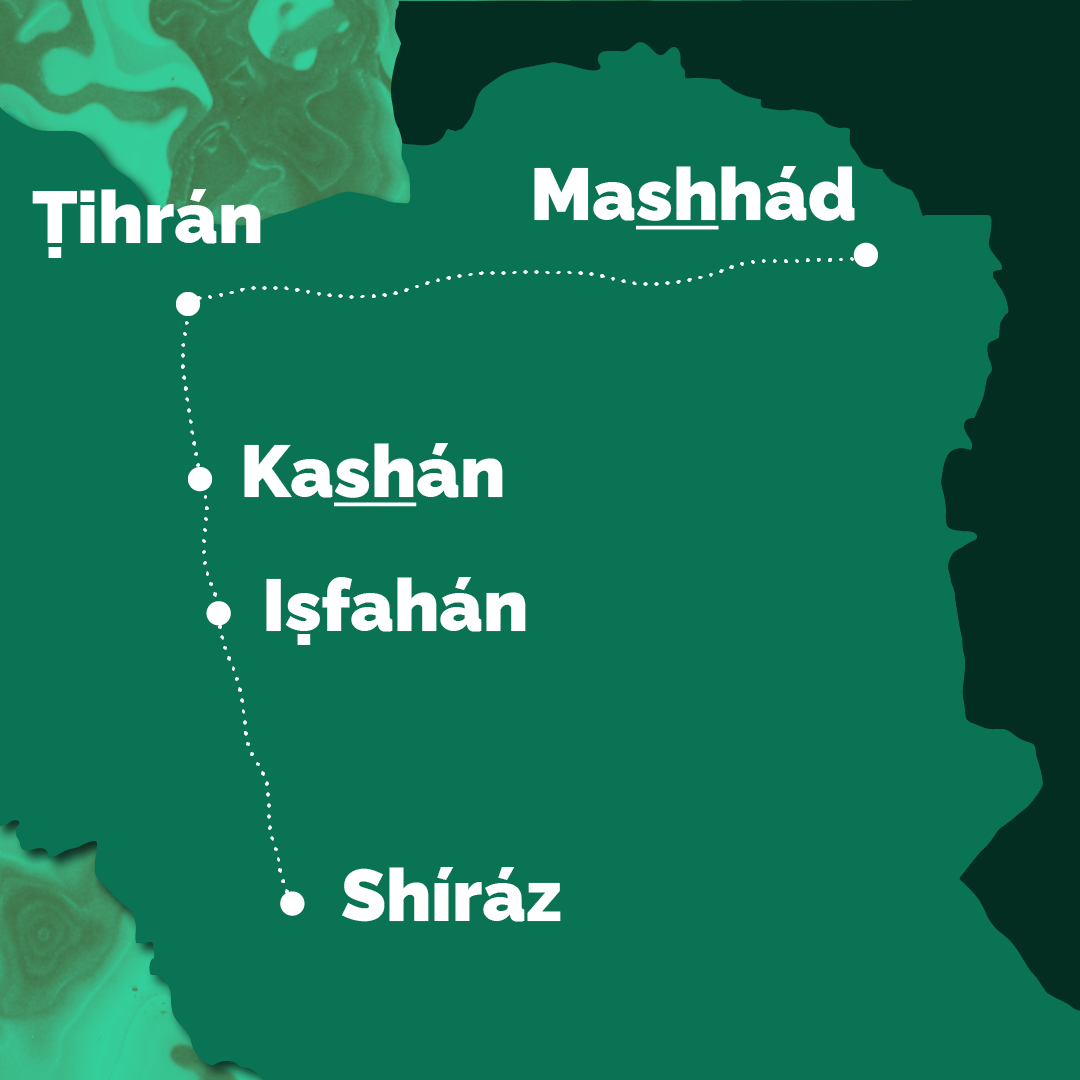
A stylized map of the journey of Mullá Ḥusayn, planned for him by the Báb. Route is symbolic, and the map ends at Mashhád in Khurásán, because Mullá Ḥusayn never went all the way to 'Iráq, but walked from Mashhád to Ádhirbáyján to see the Báb. © Violetta Zein
Mullá Ḥusayn left after Mullá ‘Alíy-i-Bastamí and the 14 remaining Letters of the Living had scattered from Shíráz to fulfill their own missions, and the Báb addressed him one last time before leaving for Búshihr, with final instructions, and informing Mullá Ḥusayn of His plan:
“Grieve not that you have not been chosen to accompany Me on My pilgrimage to Ḥijáz. I shall, instead, direct your steps to that city which enshrines a Mystery of such transcendent holiness as neither Ḥijáz nor Shíráz can hope to rival. My hope is that you may, by the aid of God, be enabled to remove the veils from the eyes of the wayward and to cleanse the minds of the malevolent. Visit, on your way, Iṣfahán, Káshán, Ṭihrán, and Khurásán. Proceed thence to ‘Iráq, and there await the summons of your Lord, who will keep watch over you and will direct you to whatsoever is His will and desire. As to Myself, I shall, accompanied by Quddús and My Ethiopian servant, proceed on My pilgrimage to Ḥijáz. I shall join the company of the pilgrims of Fárs, who will shortly be sailing for that land. I shall visit Mecca and Medina, and there fulfil the mission with which God has entrusted Me. God willing, I shall return hither by the way of Kúfih, in which place I hope to meet you. If it be decreed otherwise, I shall ask you to join Me in Shíráz. The hosts of the invisible Kingdom, be assured, will sustain and reinforce your efforts. The essence of power is now dwelling in you, and the company of His chosen angels revolves around you. His almighty arms will surround you, and His unfailing Spirit will ever continue to guide your steps. He that loves you, loves God; and whoever opposes you, has opposed God. Whoso befriends you, him will God befriend; and whoso rejects you, him will God reject.”
Mullá Ḥusayn received additional instructions before his departure. The Báb asked him to report on the progress of his activities in Iṣfahán, Ṭihrán, and Khurásán, and to enclose lists of those who accepted or opposed the Faith.
The Báb told Mullá Ḥusayn he would not leave for His pilgrimage to Ḥijáz (Mecca and Medina) until He received word from him.
The Báb was waiting to hear that Bahá'u'lláh had embraced the Bábí Faith.
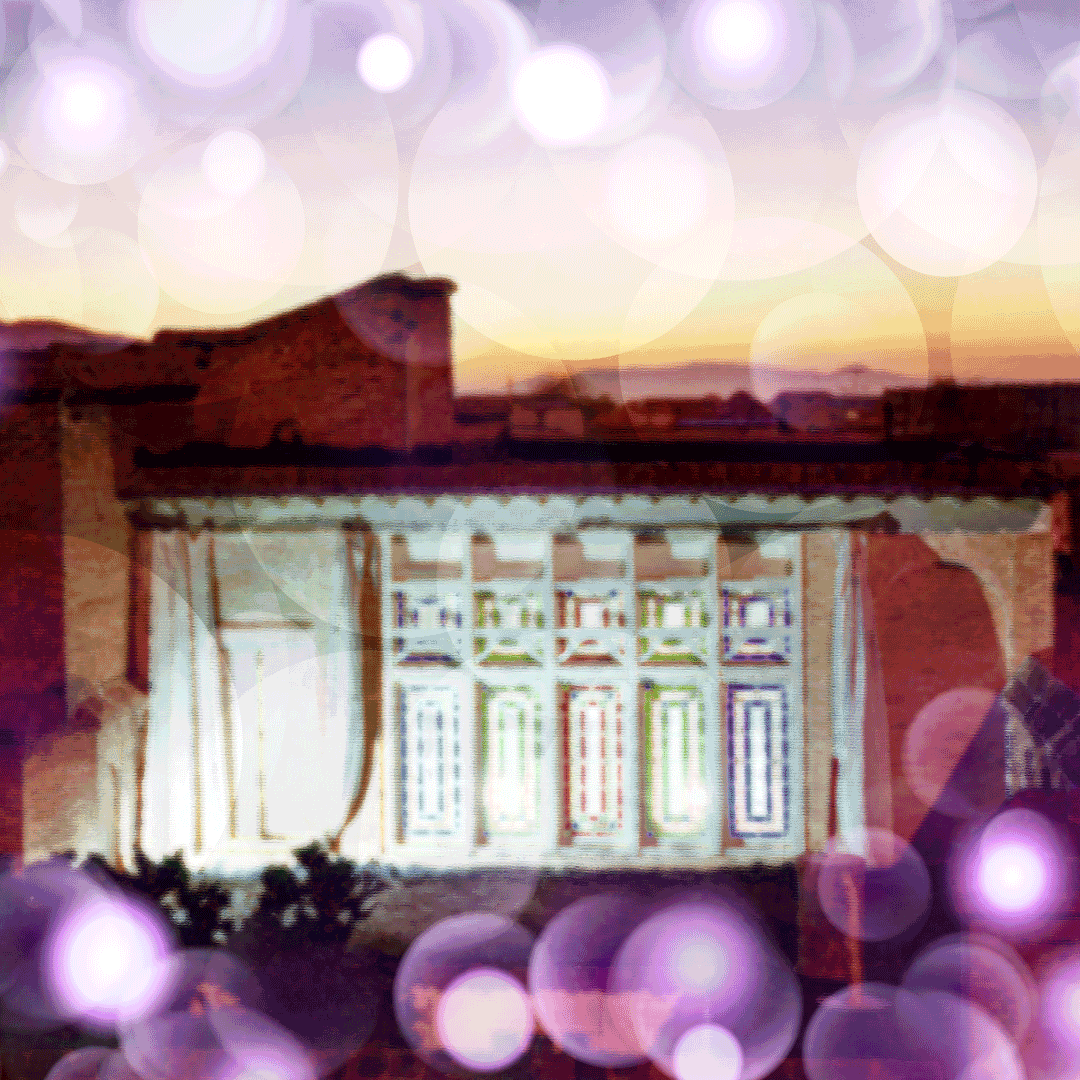
“Intense activity”: An artistic interpretation of the spiritual effervescence around the house of the Báb in the months following His Declaration. © Violetta Zein
After the Declaration of the Báb, His household saw a period of intense activity.
Seekers who wanted to discuss their questions with the One who claimed to be the Qá’im thronged His home, and were graciously welcomed as guests by Khadíjih Bagum. They would stay long hours, speaking with the Báb, finding spiritual enlightenment, and would return, again and again, until they were confirmed in their Faith.
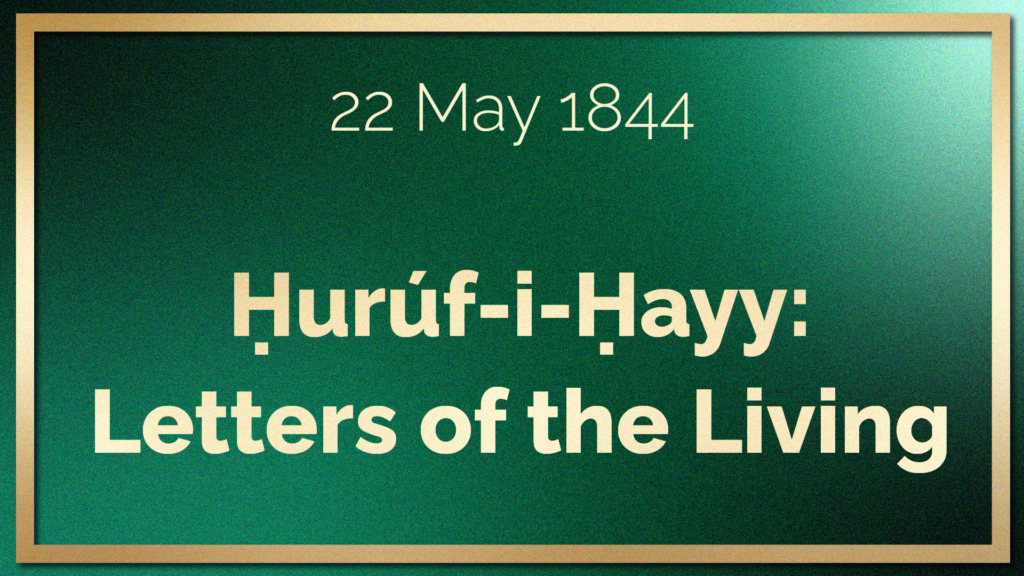
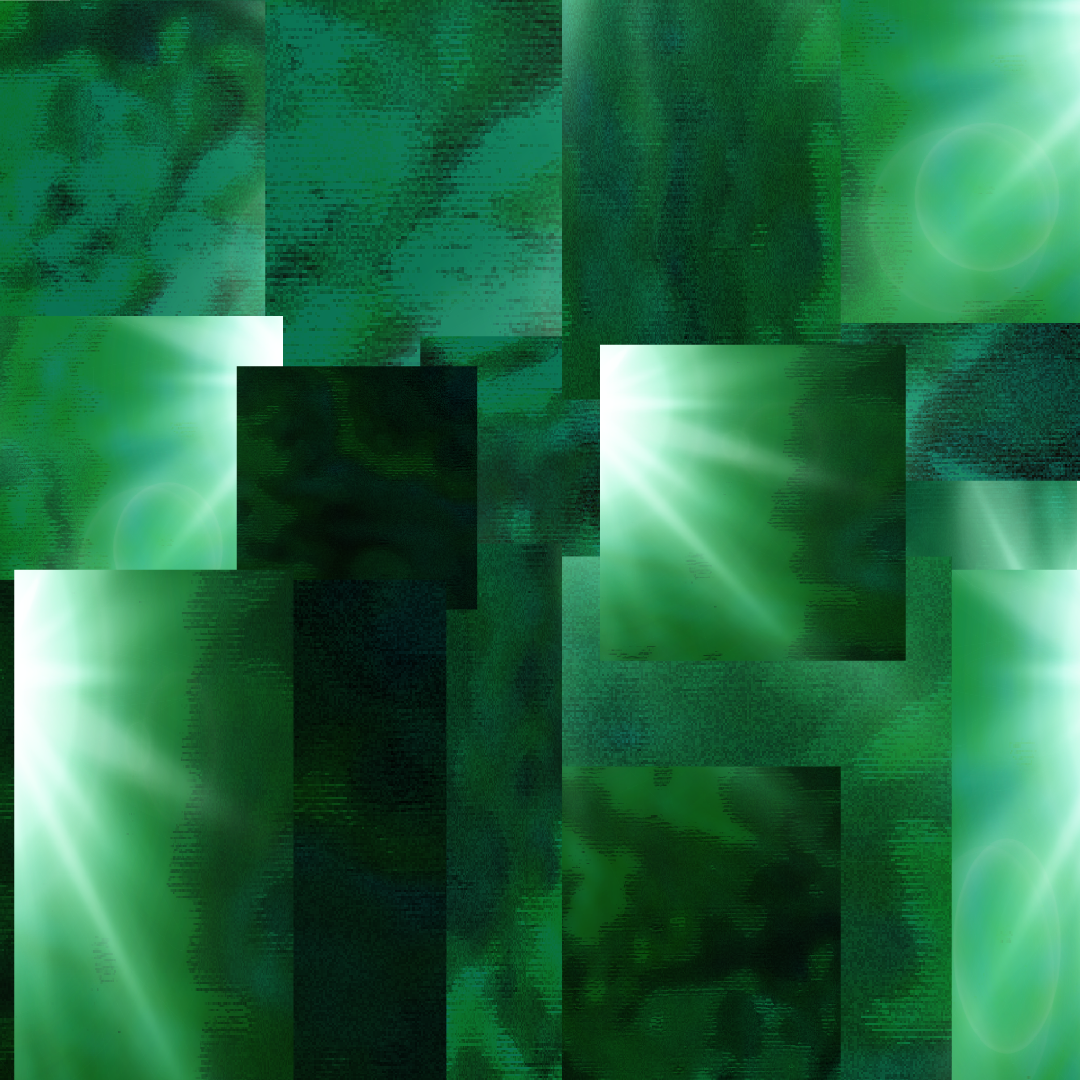
“Eighteen Letters I” Part 1 of 4 abstract compositions of 18 digitally altered segments of the 1911 painting “The Four and Twenty Elders” by Henry John Stock which illustrates the last story of this section. © Violetta Zein
This chronology will be focused exclusively on the Person of the Báb from 1844 to 1850.
We will be following the Báb everywhere that He is brought, and experience the events from His perspectives, through Tablets to and from Him, instructions He gives, and the Holy Writings He reveals during this period.
This chronology will not follow the individual fates of the Letters of the Living or describe in detail the uprisings of Mázindarán, Nayríz and Zanján.
This part is a collective homage to all the Letters of the Living, their rank and station, their theological importance and summarized biographies of lives of the Báb’s first 18 disciples.
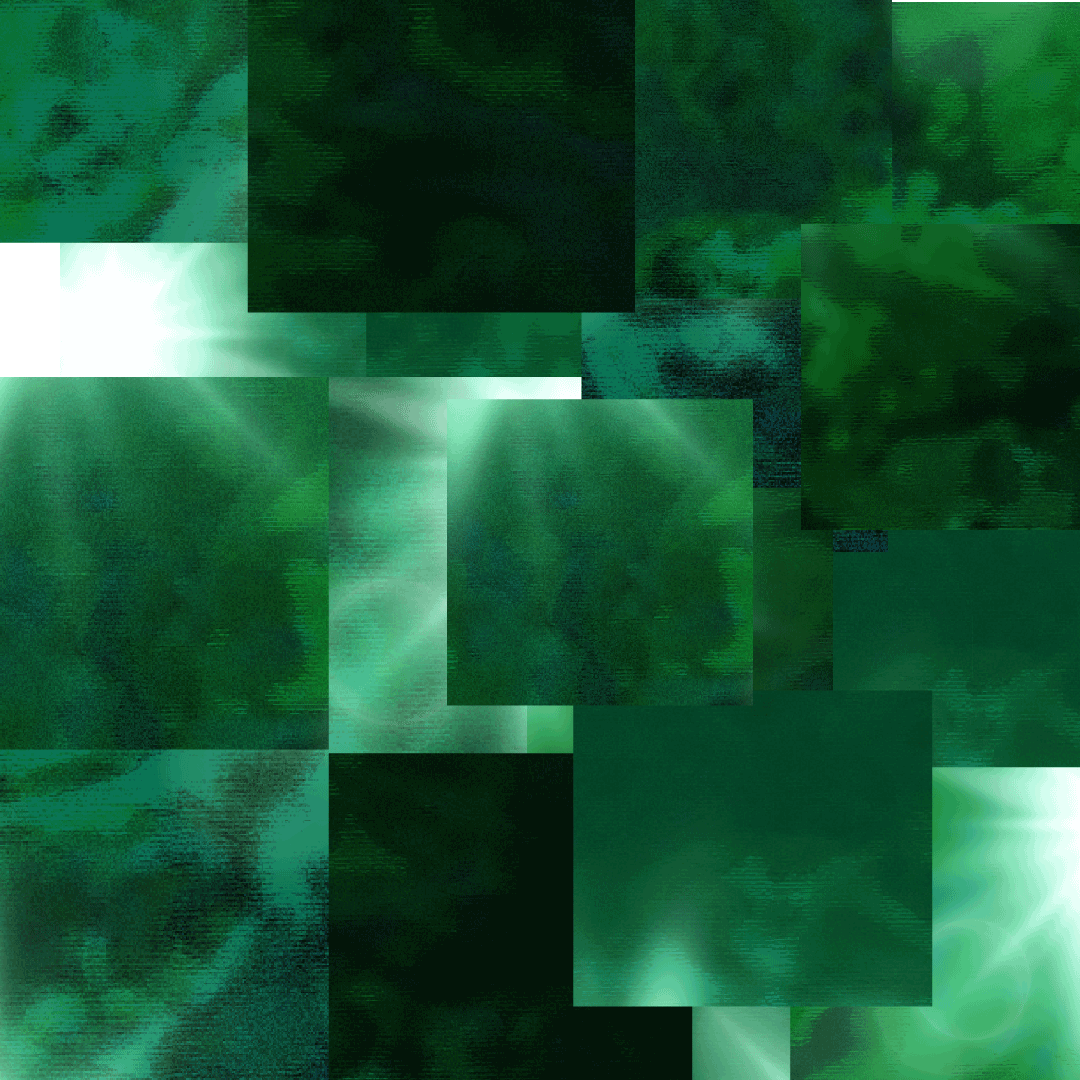
“Eighteen Letters II” Part 2 of 4 abstract compositions of 18 digitally altered segments of the 1911 painting “The Four and Twenty Elders” by Henry John Stock which illustrates the last story of this section. © Violetta Zein
According to the Báb in the Persian Bayán (Vaḥíd I, Báb 2), the Letters of the Living form a word, the name of the Living One.
He further explains that the Letters of the Living are the nearest ones to God, who, by their actions guide the believers.
The Báb also states that through the Letters of the Living, God initiated the creation of the Bayán, and that, in a mystical sense, they represent the lights of faithfulness that have always and will always prostrate themselves in front of the celestial throne:
“All of these formed the name of the Living One, for these are the names that are the nearest to God; the others are guided by their clear and significant actions, for God began the creation of the Bayán through them, and it is to them that the creation of the Bayán will again return. They are the lights which in the past have eternally prostrated themselves and will prostrate themselves eternally in the future, before the celestial throne.”
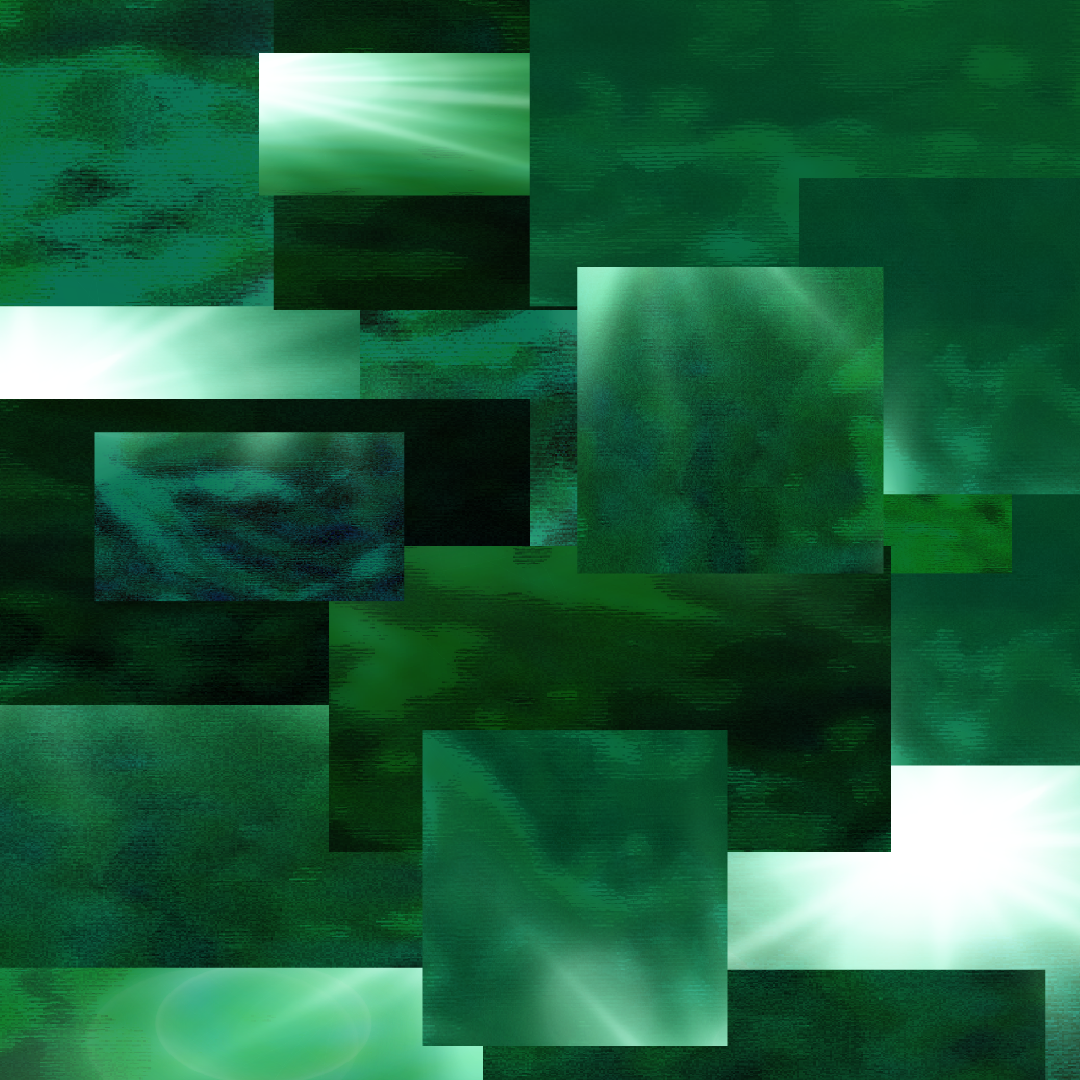
“Eighteen Letters III” Part 3 of 4 abstract compositions of 18 digitally altered segments of the 1911 painting “The Four and Twenty Elders” by Henry John Stock which illustrates the last story of this section. © Violetta Zein
The Letters of the Living were individuals from a wide variety of backgrounds. They hailed from every corner of Persia—from South and Northwestern Khurásán Shíráz, Yazd, Qazvín, Ádhirbáyján, and Mázindarán, and included one Indian from Lucknow.
They were of different socio-economic backgrounds, different educational and theological backgrounds, vastly different leadership capabilities, and they had different degrees of commitment to the Báb and the Bábí Faith.
The majority of the Letters of the Living remained active Bábís except for a small handful who chose not to stay at the forefront of the Bábí Faith, and most of them fell as martyrs during and in the two years following the ministry of the Báb.
There are many references to the Letters of the Living in the Writings of the Báb, in the Persian Bayán, the Arabic Bayán and the Seven Proofs.
The Báb also revealed a Tablet for each of the Letters of the Living, only four of which have been authoritatively or provisionally translated.
In addition to this, the Báb also revealed many prayers and Tablets for them in answers to questions they had asked Him, and He revealed several Tablets of Visitation in their honor, to be recited at their grave sites.
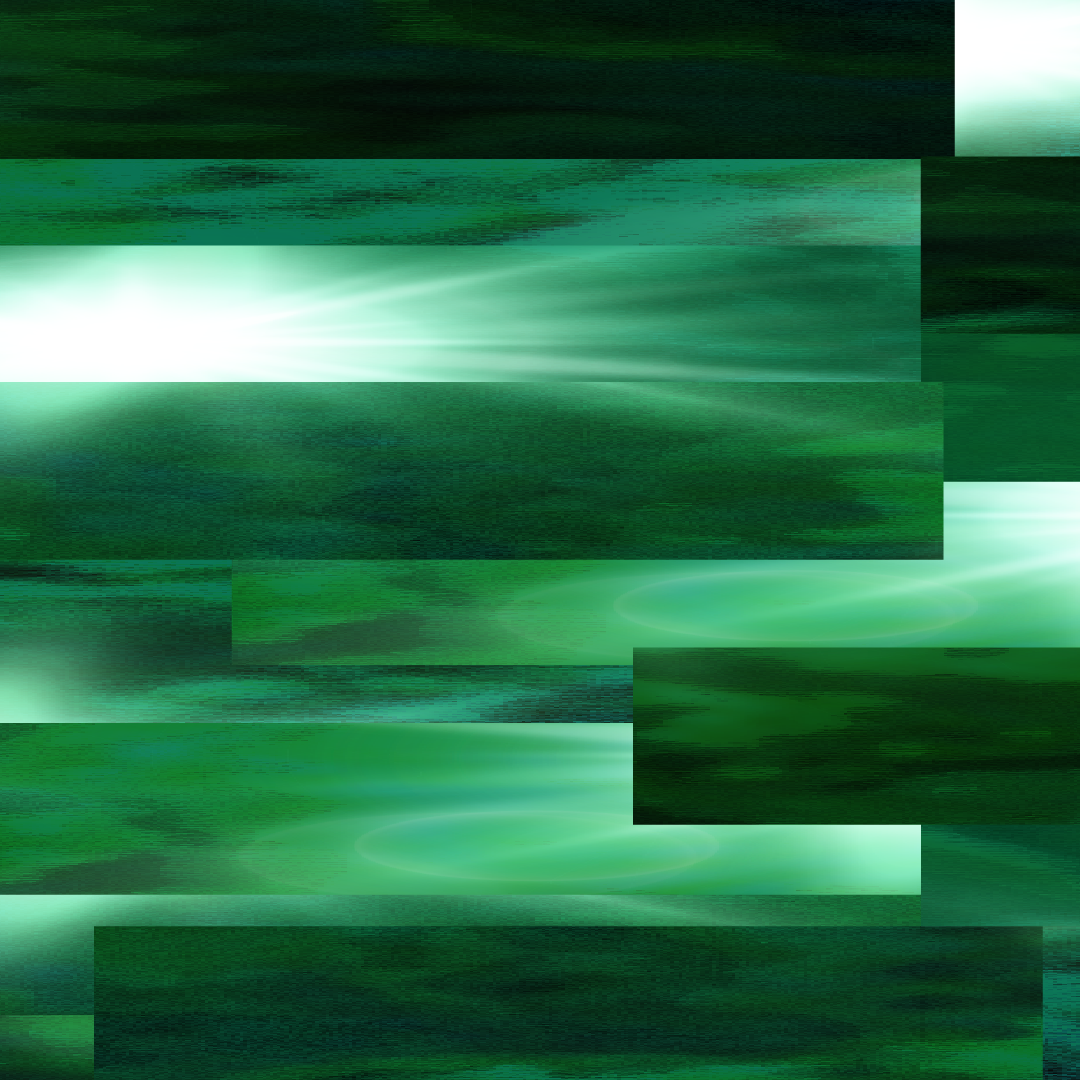
“Eighteen Letters IV” Part 4 of 4 abstract compositions of 18 digitally altered segments of the 1911 painting “The Four and Twenty Elders” by Henry John Stock which illustrates the last story of this section. © Violetta Zein
The Báb used two main terms to refer to His first disciples.
He called them sábiqún (plural) or sábiqín (singular), meaning “Forerunners/Forerunner) and He also referred to them by their most well-known appellation, Letters of the Living, in Arabic Ḥurúf-i-Ḥayy.
The term Ḥurúf-i-Ḥayy is composed of two words: Ḥurúf (plural) Ḥarf (singular), meaning “Letters/Letter” and Ḥayy, meaning “the living.” Both Islamic and Bábí scriptures also use Ḥayy as one of the names of God.
This is a term inaugurated by the Báb and which is not found anywhere else in Islamic scripture, the Qur’án or the Ḥadíth, Islamic traditions.
The Báb used the mystical term Nuqtih (“Point”) to refer to Manifestations of God, a term which is mean to signify the Primal Will of God, from which everything originates. The Báb refers to Himself as “the Point of the Bayán,” and Nuqtiy-i-Úlá (“the Primal Point”), and to the Prophet Muḥammad as “the point of the Qur’án.”
The point is also the first mark that is made when a pen touches paper. The very next step after a point is the letter, from which words, and later books are written from these words. The letter is the next increment after a point, and so after the “Point of the Bayán,” the Báb’s first disciples were called the “Letter of the Living.”
In this sense, the Letters of the Living had the primary role in inaugurating the Dispensation of the Báb, containing within their title the symbolic components (letters) for revealing new Holy Writings, which would bring about a new civilization.
In the Bayán, the Báb states that the Letters of the Living are the return of 18 figures from Islamic history: the prophet Muḥammad, His son-in-law ‘Alí, His daughter Fáṭimih, eleven of the members of the Holy Family of Muḥammad, and four angels responsible for creation, sustenance, death, and existence.
The Báb also states that the Manifestation of God is the mirror of God and that the Letters of the Living are the mirrors of that mirror, therefore reflecting the reflection of God. As the return of the essences and attributes of the Holy Family of Islám, they are the inhabitants of Paradise.
The Letters of the Living were intermediaries through which the Manifestation of God is recognized and accepted, but the Báb gave them no authority to interpret, and no official function amongst the Bábí community. Their designation is essentially spiritual, having been the first to recognize the Báb.
The Báb and the 18 Letters of the Living, together totaling 19, comprise the first Vaḥíd of the Bábí religion. Vaḥíd is a term meaning “unity.” The numerical value of its Arabic letters is 19 itself, a significant number in both the Bábí and Bahá'í Faiths.
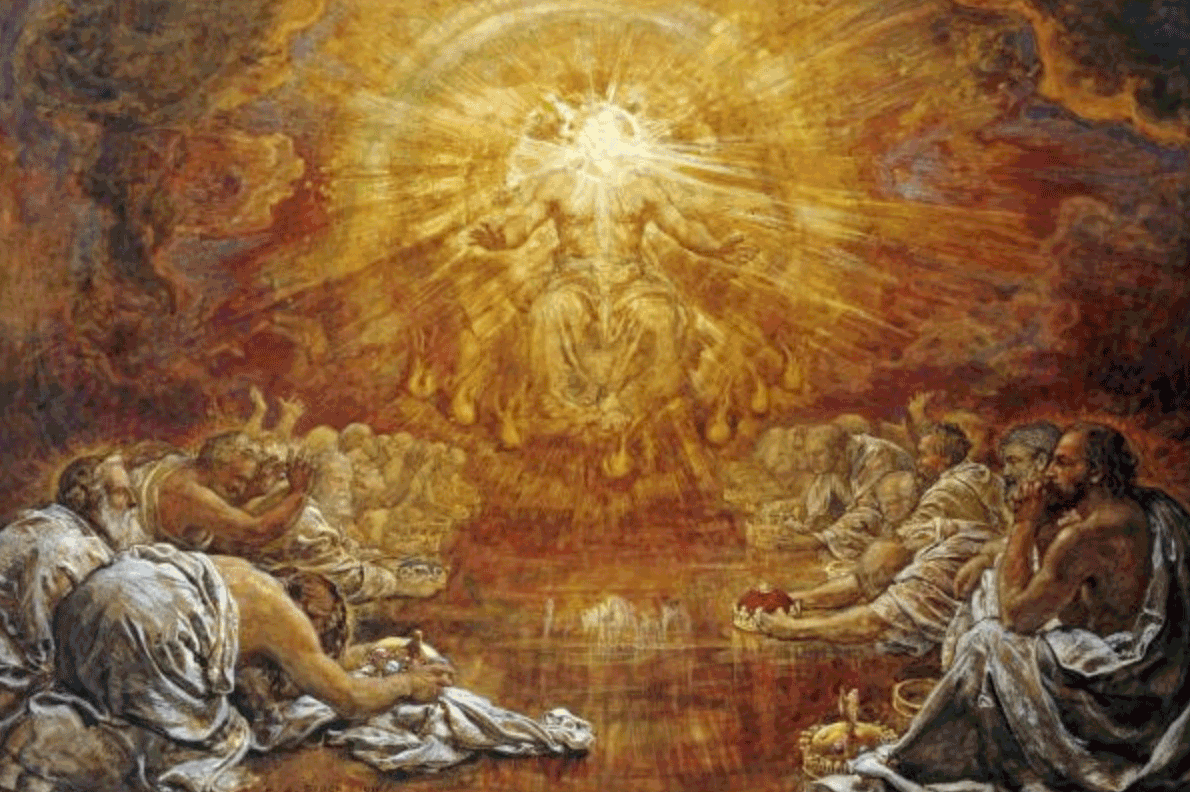
A 1911 painting by Henry John Stock, The Four and Twenty Elders, mentioned among the prophecies below as references to the Letters of the Living. Source: Wikimedia Commons.
In God Passes By, Shoghi Effendi introduces the Letters of the Living by citing both the Báb’s Writings referring to them, but also Biblical prophecies about their appearance in an arresting sentence:
“These “first Letters generated from the Primal Point,” this “company of angels arrayed before God on the Day of His coming,” these “Repositories of His Mystery,” these “Springs that have welled out from the Source of His Revelation,” these first companions who, in the words of the Persian Bayán, “enjoy nearest access to God,” these “Luminaries that have, from everlasting, bowed down, and will everlastingly continue to bow down, before the Celestial Throne,” and lastly these “elders” mentioned in the Book of Revelation as “sitting before God on their seats,” “clothed in white raiment” and wearing on their heads “crowns of gold.””
It is interesting to note that Ṭáhirih in her childhood was given the title Zarrín-Táj, which means “Crown of Gold.”
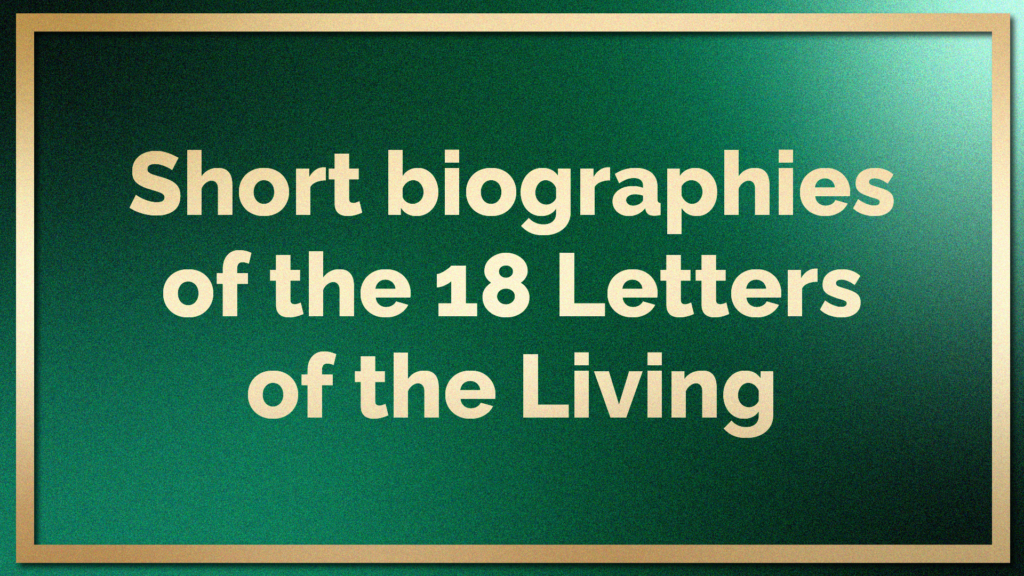
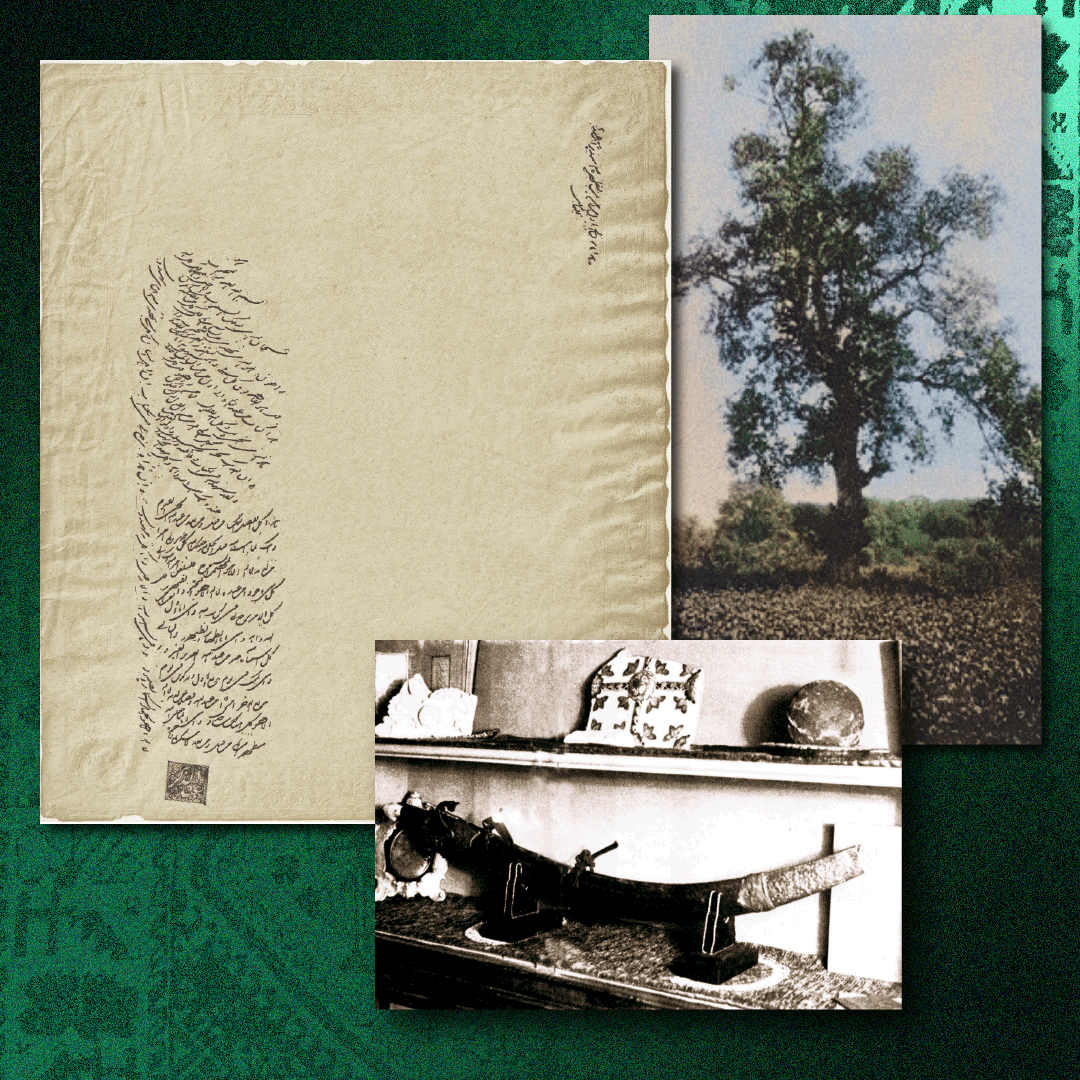
Tablet from the Báb to the First Letter of the Living (Partial Inventory ID: BB00447) Source: Facsimile of the Báb's autograph Tablets addressed to the Letters of the Living and to Bahá'u'lláh, Nabil, The Dawn-Breakers, page XXI; Sword of Mullá Ḥusayn, source: Bahá'í Sacred Relics; Tree from which Mullá Ḥusayn was shot, source: Nabil, The Dawn-Breakers, page 49, colorized for this chronology by Violetta Zein.
CHILDHOOD AND STUDIES
Mullá Ḥusayn, also known by the honorific Jináb-i Bábu'l-Báb ("Gate of the Gate"), was the first person to profess belief in the Báb as the Promised Qá’im of Islám.
He was born in 1813 near Bushrú’í in the South Khurásán province into a wealthy and established family. His father was a dyer and his mother was a poet, well-known for her piety and knowledge and he had four siblings
He studied Islámic theology and jurisprudence and became a mujtahid at the age of 21 in 1834, and subsequently became a Shaykhí, a follower of Siyyid Káẓim. His whole family moved to Karbilá when he relocated there to be closer to his teacher.
SHAYKHÍ
From 1835 to 1843, Mullá Ḥusayn studied under Siyyid Káẓim and often traveled at his teacher’s request to Persia to debate publicly with the orthodox Shí’ah clerics and gain more support for the Shaykhí movement. He was on one of these proclamation journeys in 1843 when Siyyid Káẓim passed away.
BÁBÍ
The events upon Mullá Ḥusayn’s return to Karbilá, his subsequent departure in search for the Báb, his conversion on the night of 23 May 1844, and the mission the Báb entrusted him with—finding Bahá'u'lláh in Ṭihrán—were covered in Part IV, so we will be focusing in this short biography on the rest of Mullá Ḥusayn’s life, after he became a Letter of the Living.
TEACHING AND PROCLAMATION
As a Letter of the Living and a former well-respected mujtahid, Mullá Ḥusayn was a leader and exemplary proclaimer of the Cause. His many travels and public debates were instrumental in the rapid spread of the Bábí Faith throughout Persia.
In teaching so much and so widely, Mullá Ḥusayn came into contact with many prominent clerics and government officials, including Muḥammad Sháh. During a stay in Iṣfahán, Mullá Ḥusayn spoke in the pulpits of all the mosques of the city and publicly announced that the Báb was the Twelfth Imám, the Qá’im, the Promised One of Islám. He displayed the Writings of the Báb and read from them, emphasizing their eloquence and the youth of the Báb.
Mullá Ḥusayn left Iṣfahán and traveled to Kashán and Qum, then to Ṭihrán, where he was guided to find Bahá'u'lláh. After Bahá'u'lláh’s conversion, Mullá Ḥusayn traveled to Mashhád in Khurásán, and sent a message to the Báb—which will be addressed in Part VI.
MASHHÁD
By the spring of 1845, Mullá Ḥusayn was in Shíráz, but opposition was so violent, the Báb instructed him to return to Mashhád, where he continued proclaiming the Bábí Faith for three years. When Mullá Ḥusayn heard the Báb had been imprisoned in Máh-Kú, he walked all the way from Mashhád, close to 1,400 kilometers (850 miles). He met the Báb, spent Naw-Rúz 1848 with Him, and returned to Mashhád.
THE BLACK STANDARD
After the conference of Badasht, close to 200 Bábís gathered around Mullá Ḥusayn in Mashhád. Mullá Ḥusayn received a message from the Báb with His green turban, and a new name, Siyyid ‘Alí. The Báb had instructed Mullá Ḥusayn to rescue Quddús and march under the Black Standard, an important element of Shí’ah prophecy regarding the coming of the Promised One.
THE FORT OF SHAYKH ṬABARSÍ
Mullá Ḥusayn and his companions were pushed out of the town of Barfúrúsh, and they took refuge in the fort of Shaykh Ṭabarsí and the Mázindarán uprising, essentially the Bábís defending themselves, took place over the course of 7 months from 10 October 1848 to 10 May 1849. Bahá'u'lláh visited the fort of Shaykh Ṭabarsí in September 1848, before the fighting began, and Mullá Ḥusayn recognized His station but did not speak of it.
Mullá Ḥusayn was a force to be reckoned with on the battlefield. With a single blow of his sword, he sliced through a tree, a soldier and his musket. When the fort of Shaykh Ṭabarsí was besieged by 12,000 soldiers, the Bábís took them by surprise and pushed them back. There were several battles and talks for the months that followed
MARTYRDOM
On 2 February 1849, donning the Báb’s green turban, Mullá Ḥusayn led an attack, but his horse lost its footing when he got tangled up in rope, and Mullá Ḥusayn was shot through the chest by Abbás-Qulí Khán, the Governor of Amúl, a nearby town. Mullá Ḥusayn survived long enough to be brought back to Shaykh Ṭabarsí, and his last words to Quddús were:
"May my life be a ransom for you. Are you well pleased with me?"
Quddús buried Mullá Ḥusayn, using one of his own shirts and laid his martyred body to rest in a grave to the south of the shrine of Shaykh Ṭabarsí.
STATION
In the Kitáb-i-Íqán, Bahá'u'lláh speaks to the station of Mullá Ḥusayn:
“Among them was Mullá Ḥusayn, who became the recipient of the effulgent glory of the Sun of divine Revelation. But for him, God would not have been established upon the seat of His mercy, nor ascended the throne of eternal glory.”
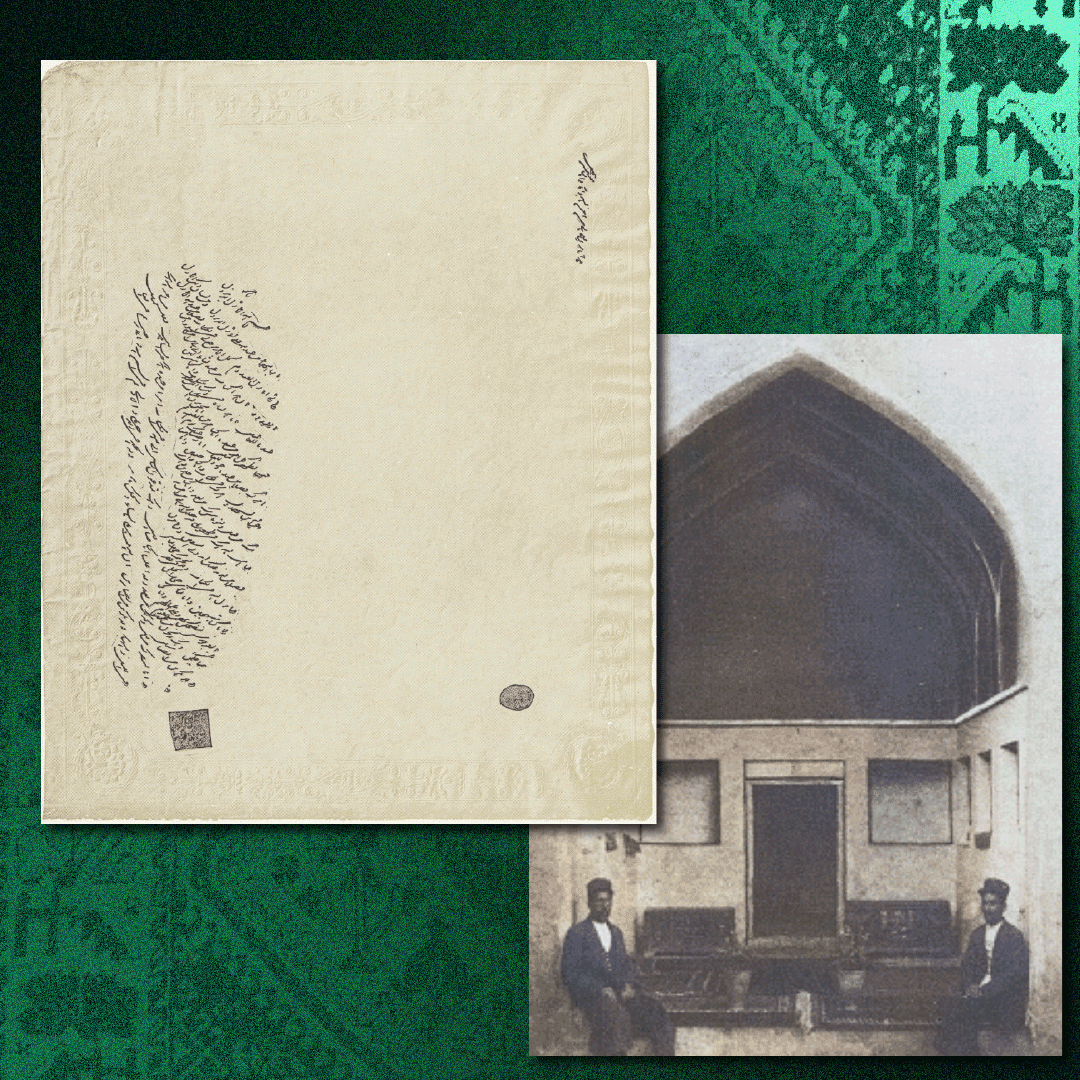
Tablet from the Báb to the Second Letter of the Living (Partial Inventory ID: BB00472) Source: Facsimile of the Báb's autograph Tablets addressed to the Letters of the Living and to Bahá'u'lláh, Nabil, The Dawn-Breakers, page XXI; Photograph of Mullá Ḥusayn’s home in Bushrú’í, source: Nabil, The Dawn-Breakers, page 49, colorized for this chronology by Violetta Zein.
Mírzá Muḥammad-Ḥasan-i-Bushrú’í was Mullá Ḥusayn’s younger brother and traveled with Him to Shíráz from Karbilá.
He was severely wounded and subsequently killed at Shaykh Ṭabarsí in 1849.
Necati Alkan has provisionally translated the Tablet from the Báb to the Second Letter of the Living which reads, in part:
“We have sent down the Book for him who believeth in Thy Cause, as a bounty from Our part and a grace unto the worlds. We are pleased with thee on the Day of Resurrection and with those who bear witness unto Thy Cause in the Book. We verily are the Pleased. We have in truth believed in thee aforetime that We may believe in thee in the future. We verily are of those who prostrate [before God]. And when thou hast believed in God, thy Lord, when He manifested Himself, He made thee the Second Believer in Himself as a token of His grace. Verily, He is the Protector of those who fear God.”
The full provisional translation is available here.
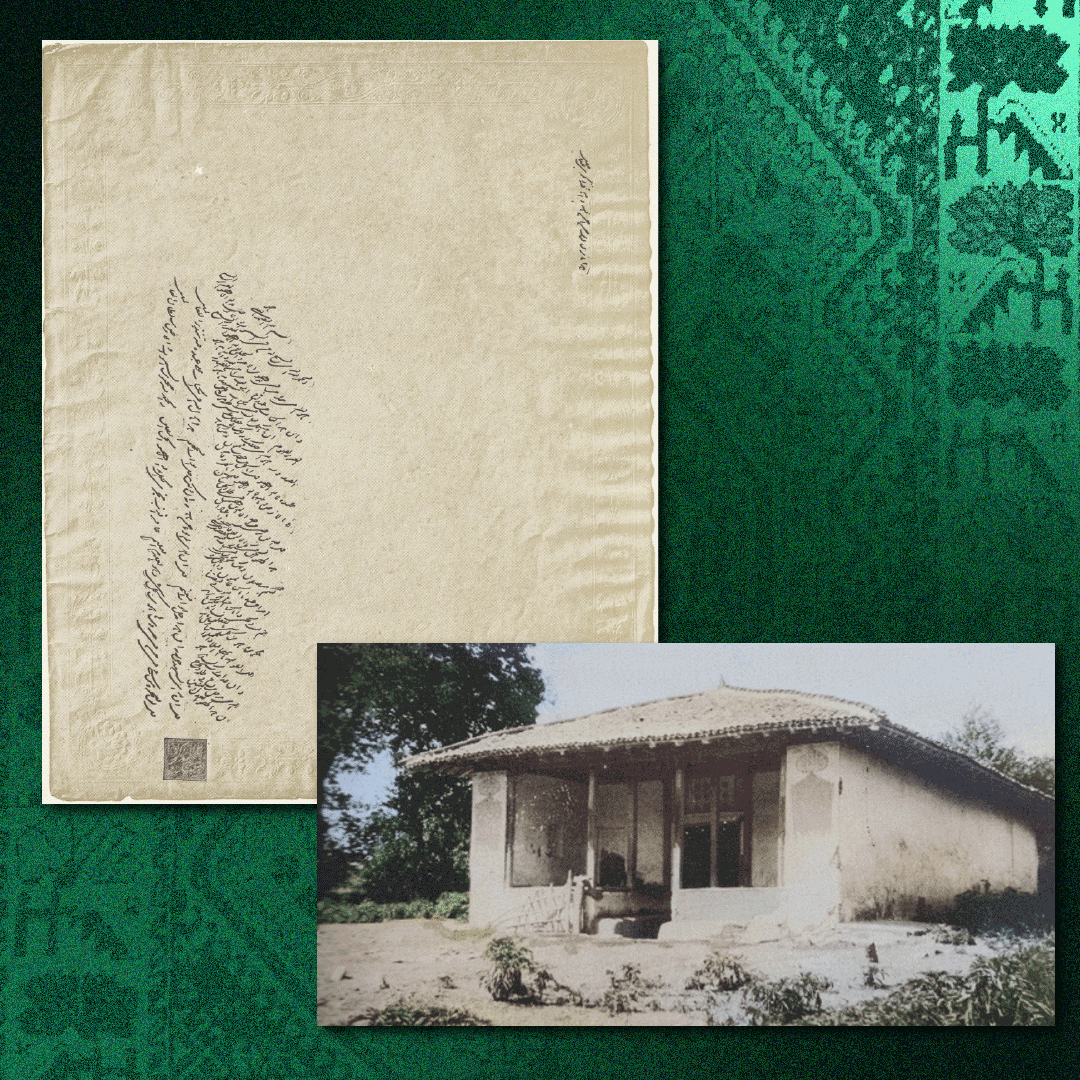
Tablet from the Báb to the Third Letter of the Living (Partial Inventory ID: BB00459) Source: Facsimile of the Báb's autograph Tablets addressed to the Letters of the Living and to Bahá'u'lláh, Nabil, The Dawn-Breakers, page XXI; Photograph of the shrine of Shaykh Ṭabarsí where Muḥammad-Báqir was martyred, source: Nabil, The Dawn-Breakers, page 343, colorized for this chronology by Violetta Zein.
Mírzá Muhammad Báqir-i-Bushrú’í was the nephew of Mullá Ḥusayn. He was also killed in Shaykh Ṭabarsí in the Spring of 1849.
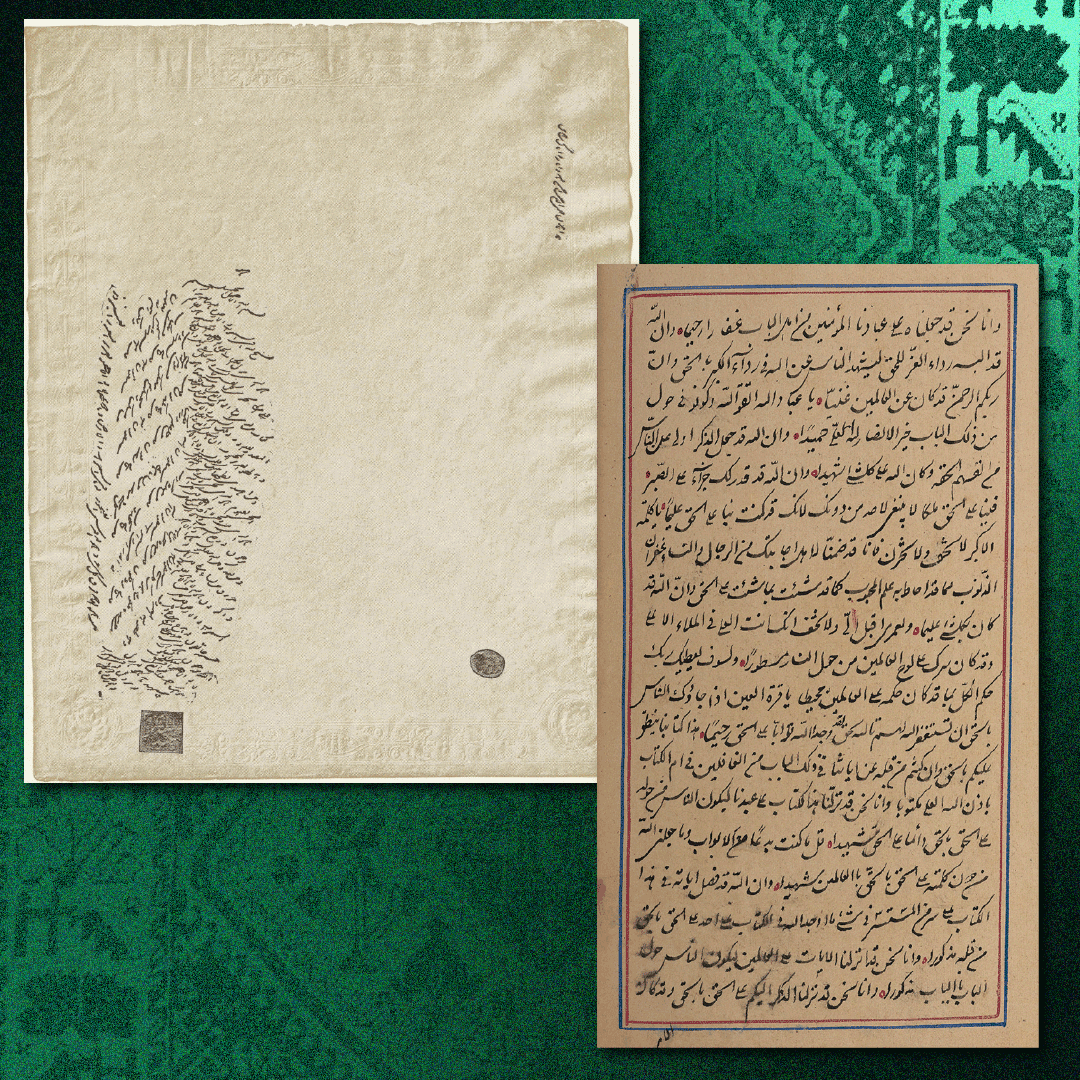
Tablet from the Báb to the Fourth Letter of the Living (Partial Inventory ID: BB00440) Source: Facsimile of the Báb's autograph Tablets addressed to the Letters of the Living and to Bahá'u'lláh, Nabil, The Dawn-Breakers, page XXI; One page from the Qayyúmu'l-Asmá', which Mullá ‘Alíy-i-Bastamí brought to Karbilá. Source: The British Library.
CHILDHOOD AND EARLY LIFE
Mullá ‘Alíy-i-Basṭamí was born in the farming village of Bastám in northwestern Khurásán. He began his religious studies in Bastám, then moved to Mashhád, where he became a Shaykhí. He soon moved to Karbilá and studied directly under Siyyid Káẓim.
WITH SIYYID KÁẒIM IN KARBILÁ
Mullá ‘Alíy-i-Bastamí was highly respected as an Islámic scholar and had the reputation among Shaykhís as having the most knowledge out of any of Siyyid Káẓim’s students.
In early 1840, Mullá ‘Alíy-i-Bastamí returned to his hometown of Bastám for two years. By 1843, he was back in Karbilá, and accompanied Siyyid Káẓim on his last pilgrimage to Najaf. He heard Siyyid Káẓim’s repeated final admonitions to disperse in search of the Promised One and followed Mullá Ḥusayn to Shíráz in May 1844, with 12 Shaykhí companions.
MULLÁ ‘ALÍY-I-BASTAMÍ’S MISSION
The story of Mullá ‘Alíy-i-Bastamí’s conversion was already covered earlier in this section, so we will pick up the story of his life with the mission the Báb entrusted him with.
One important fact to remember, with regards to Mullá ‘Alíy-i-Bastamí, is that although He became the Fourth Letter of the Living, the Báb emphasized that he was the second person to find Him after Mullá Ḥusayn. Mullá ‘Alíy-i-Bastamí testified that he read just one verse from the Báb before he embraced His Cause. The Báb later gave Mullá ‘Alíy-i-Bastamí the title of “the second to believe.”
After he became a Letter of the Living, the Báb asked Mullá ‘Alíy-i-Bastamí to travel to 'Iráq and deliver His message to Shaykh Muḥammad Ḥasan Najafí, a prominent mujtahid. The Báb warned Mullá ‘Alíy-i-Bastamí that he would need immovable faith, as he would endure persecutions in this mission. Mullá ‘Alíy-i-Bastamí left Shíráz with a copy of the Qayyúmu'l-Asmá', and he would be the first Bábí to bring the message to that country.
JOURNEY TO 'IRÁQ
As Mullá ‘Alíy-i-Bastamí was leaving Shíráz, a youth named ‘Abdu’l-Vahháb insisted on accompanying him to 'Iráq. When ‘Abdu’l-Vahháb’s father found out his son had left the city, he pursued them and beat Mullá ‘Alíy-i-Bastamí with a club, forcing his son to return with him to Shíráz.
Although he was injured, Mullá ‘Alíy-i-Bastamí continued his journey through Búshihr, where he informed the Báb’s uncle, Ḥájí Mírzá Siyyid Muḥammad of the Báb’s claim.
MULLÁ ‘ALÍY-I-BASTAMÍ’S PROCLAMATION IN 'IRÁQ
Mullá ‘Alíy-i-Bastamí arrived in Najaf around August/September 1844. He obtained a public audience with Shaykh Muḥammad Ḥasan Najafí and openly proclaimed the Báb’s message without revealing His identity, which angered all those present.
From there, Mullá ‘Alíy-i-Bastamí traveled to Karbilá and brought he Báb’s message to the Shaykhís, which included Ṭáhirih, who was one of the few who immediately embraced the Cause and immersed herself in the reading of the Qayyúmu'l-Asmá'.
IMPRISONMENT
As a result of his proclamation efforts, Mullá ‘Alíy-i-Bastamí was decreed a heretic and an infidenl and he was arrested and taken to Baghdád to stand trial. During his imprisonment of several months, he received visitors and continued teaching the Faith, obtaining some declarations as a result.
In early 1845, the Governor of Baghdád convened a panel of Sunní and Shí’ah clerics for his trial. The Sunnís favored Mullá ‘Alíy-i-Bastamí’s execution, while the Shí’ah felt he should be imprisoned or banished. During the course of the trial, Ḥájí Mírzá Áqásí requested his extradition to Persia, but the Governor refused on the grounds that the case was under the jurisdiction of the Ottoman government.
Diplomatic tensions between Persia and the Ottoman Empire arose as a result of the trial and Mullá ‘Alíy-i-Bastamí was first transferred away from the border with Persia, to a city called Bolu in northern Turkey, and later transferred to Istanbul.
FORCED LABOR AND MARTYRDOM
In Istanbul, Mullá ‘Alíy-i-Bastamí was questioned again, and he reaffirmed his Faith in the Báb and his claims. Fearing that he would continue proclaiming his beliefs, the Ottoman authorities sentenced Mullá ‘Alíy-i-Bastamí to hard labor on the naval dockyards in Istanbul.
The government of Persia petitioned the Ottoman authorities for two years to extradite Mullá ‘Alíy-i-Bastamí. Finally, in December 1846, the Ottoman government agreed to send him back to Persia and issued orders for his transfer.
Mullá ‘Alíy-i-Bastamí, however, had passed away while undertaking forced labor.
He holds the honor of being the first martyr of the Bábí Dispensation.
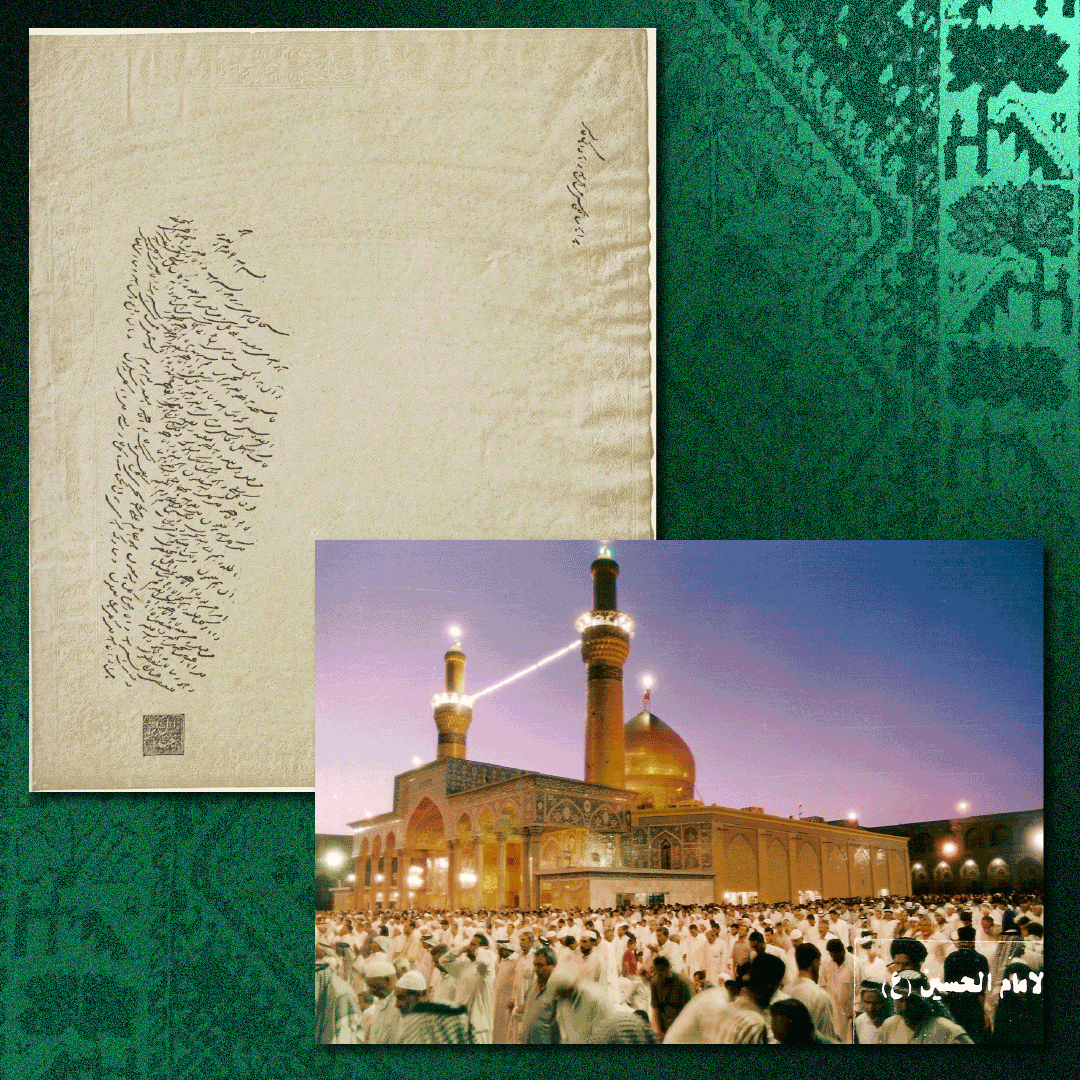
Tablet from the Báb to the Fifth Letter of the Living (Partial Inventory ID: BB00448) Source: Facsimile of the Báb's autograph Tablets addressed to the Letters of the Living and to Bahá'u'lláh, Nabil, The Dawn-Breakers, page XXI; Modern view of Karbilá, where Mullá Khudá-Bakhsh-i-Quchání returned from Wikimedia Commons.
Mullá Khudá-Bakhsh-i-Quchání (later named Mullá ‘Alí Rází) was born in Qúchán, Ádhirbáyján, and was a follower of Siyyid Káẓim.
He traveled to Shíráz with Mullá ‘Alíy-i-Bastamí and was guided to find the Báb through prayer and meditation in early July 1844.
It was Mullá Ḥusayn who took Mullá Khudá-Bakhsh-i-Quchání to his private audience with the Báb, during which he was appointed to the station of Letter of the Living.
When the Báb instructed the Letters of the Living to disperse in late July 1844, he returned to 'Iráq but soon stopped being an active Bábí and fell into obscurity.
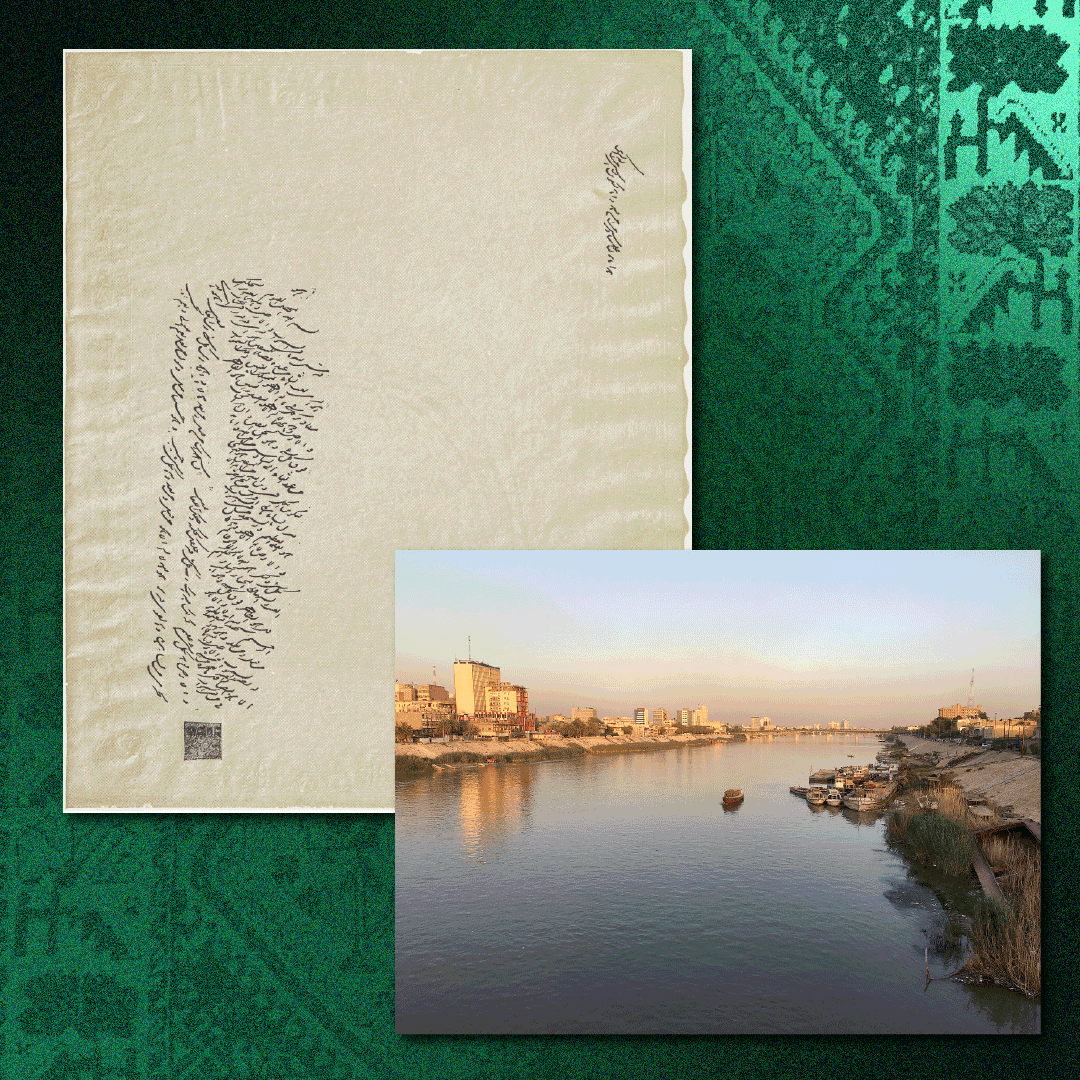
Tablet from the Báb to the Sixth Letter of the Living (Partial Inventory ID: BB00469) Source: Facsimile of the Báb's autograph Tablets addressed to the Letters of the Living and to Bahá'u'lláh, Nabil, The Dawn-Breakers, page XXI; Modern view of Baghdád where Mullá Ḥasan-i-Bajistání was active visited Bahá'u'lláh from Wikimedia Commons.
Mullá Ḥasan-i-Bajistání was one of Mullá ‘Alíy-i-Bastamí’s companions, and was accompanied by Mullá Ḥusayn to his audience with the Báb, who appointed him a Letter of the Living.
When the Báb dispersed the Letters of the Living from Shíráz in July 1844, Mullá Ḥasan-i-Bajistání left the city. Four years later, in 1848, he rallied under the Black Standard with Mullá Ḥusayn but left the company before the Mázindarán upheaval and the siege of the fort of Shaykh Ṭabarsí.
Mullá Ḥasan-i-Bajistání was one of the few Letters of the Living left alive after the martyrdom of the Báb in 1850, and he settled in the province of Khurásán.
At some point between 1853 and 1863, Mullá Ḥasan-i-Bajistání visited Bahá'u'lláh in Baghdád and confided in Him that he had lost his faith in the Báb. He had read Tablets the Báb had revealed extolling the station of the Letters of the Living and felt he did not meet that standard, and that had shaken his faith.
Bahá'u'lláh explained to him that the Báb’s Writings on the station of the Letters of the Living were specifically directed at Mullá Ḥusayn, and that the other Letters of the Living possessed the same qualities but to a lesser extent.
Despite meeting Bahá'u'lláh, Mullá Ḥasan-i-Bajistání never returned to the Bábí community as an active member.
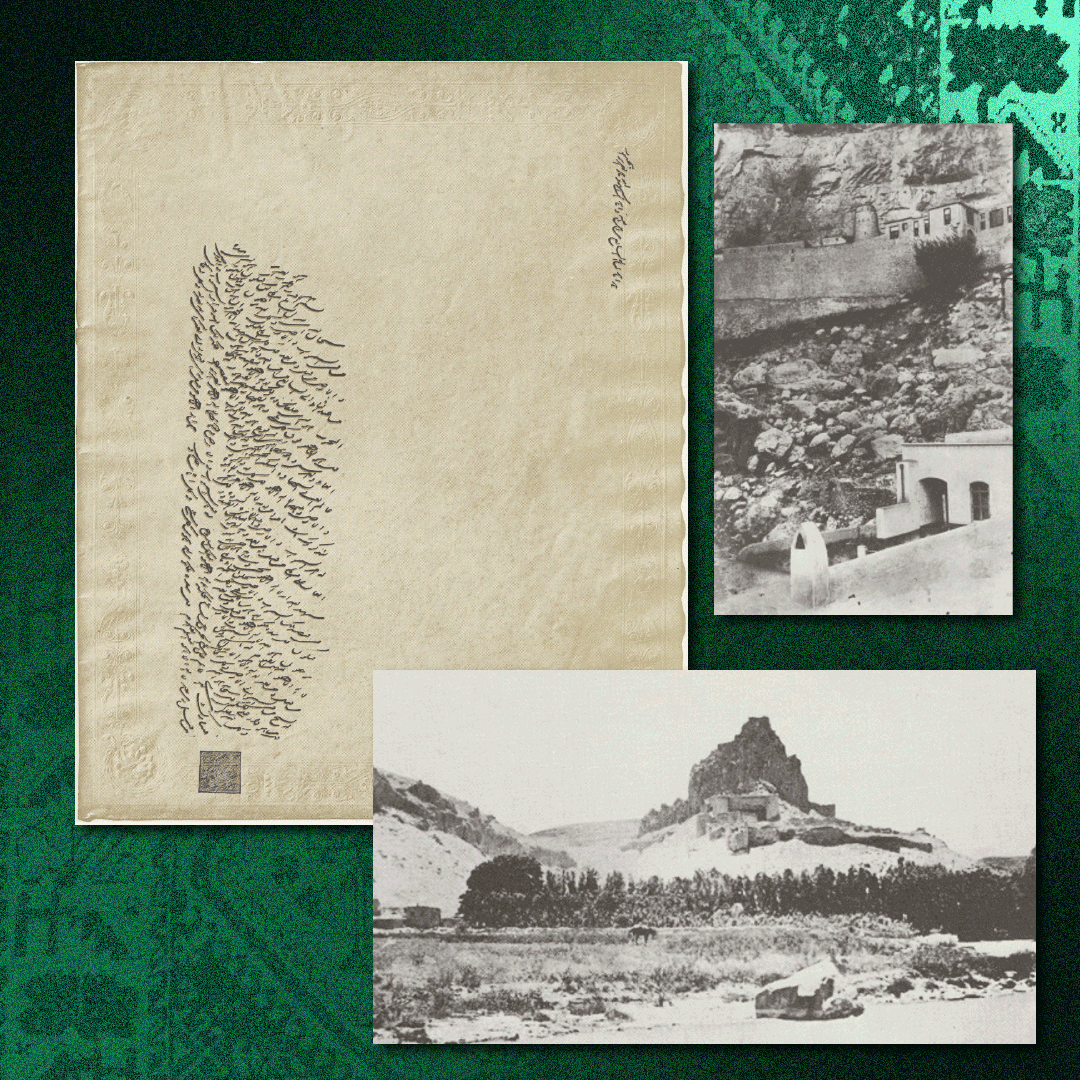
Tablet from the Báb to the Seventh Letter of the Living (Partial Inventory ID: BB00420) Source: Facsimile of the Báb's autograph Tablets addressed to the Letters of the Living and to Bahá'u'lláh, Nabil, The Dawn-Breakers, page XXI; Views of Máh-Kú and Chihríq where Siyyid Ḥusayn-i-Yazdí, the Báb’s amanuensis served Him until the end from Nabil, The Dawn-Breakers, pages 243 and 301.
BEFORE THE BÁB’S IMPRISONMENT
Siyyid Ḥusayn-i-Yazdí, also known by his title Azíz, was born in Yazd in a Shaykhí family. He dispersed along with the other Letters of the Living, and returned to Shíráz sometime before September 1846. Shortly after he arrived, the Báb instructed him to move to Iṣfahán, where the Báb joined him later that month.
Around March 1847, not long before He was due to leave Iṣfahán on His journey towards Ṭihrán to meet with the Sháh—a meeting which would never happen—the Báb instructed Siyyid Ḥusayn-i-Yazdí to travel ahead to Kashán.
The Báb spent three days in Kashán, and Siyyid Ḥusayn-i-Yazdí served as His amanuensis, taking dictation of a prayer for the Báb’s host, Ḥájí Mírzá Jání.
Siyyid Ḥusayn-i-Yazdí and his brother Siyyid Ḥasan spent 18 days in the Báb’s company in Kulayn and when the orders came from the Sháh and Ḥájí Mírzá Áqásí to exile Him to Ádhirbáyján, the Báb was only allowed one companion and one attendant. He chose the two brothers, Siyyid Ḥusayn-i-Yazdí and Siyyid Ḥasan.
IN MÁH-KÚ AND CHIHRÍQ
Siyyid Ḥusayn and Siyyid Ḥasan were the only two Bábís allowed to see the Báb when they finally arrived in Máh-Kú, before the restrictions were relaxed, sometime later. In April 1848, the Báb was transferred to Chihríq and Siyyid Ḥusayn continued to act as His amanuensis but also as His attendant.
Ḥájí Mírzá Áqásí was extremely concerned by how much the Báb’s influence had grown during His incarceration in Máh-Kú, so the initial conditions of confinement in Chihríq were extreme. Siyyid Ḥusayn became the Báb’s only point of contact with the Bábís in the surrounding area.
After the Báb heard about the massacre of 8 Letters of the Living and the martyrdom of Mullá Ḥusayn at Shaykh Ṭabarsí, he put a stop to Revelation for 5 months. He refused to meet with Siyyid Ḥusayn during this time, but communicated with him from His cell. The Báb forbade Siyyid Ḥusayn to take notes on their conversations.
IN TABRÍZ
In June 1850, the Báb was transferred to Tabríz for his trial, and Siyyid Ḥusayn followed Him there. On 8 July 1850, the night before His martyrdom, the Báb asked Siyyid Ḥusayn to denounce Him in order to secure his own release, and Siyyid Ḥusayn obeyed.
It was Siyyid Ḥusayn the Báb was speaking with when He was so rudely interrupted on 9 July 1850, and it was in that same cell, finishing His conversation with Siyyid Ḥusayn that the Báb was found after He miraculously vanished under the smoke and din of the 750 bullets.
IMPRISONMENT AND MARTYRDOM
Two years later, in mid-August 1852, after the botched attempt on the life of the Sháh, Siyyid Ḥusayn was one of the many Bábís rounded up and arrested in retaliation in Ṭihrán. He was imprisoned with Bahá'u'lláh in the Siyáh-Chál and turned down offers to help secure his release.
He was executed shortly after and died a martyr.
Two years later, after the botched attempt on the life of the Sháh, Siyyid Ḥusayn was one of the many Bábís rounded up and arrested in retaliation in Ṭihrán. He was imprisoned with Bahá'u'lláh in the Siyáh-Chál and turned down offers to help secure his release.
He was executed shortly after and died a martyr.
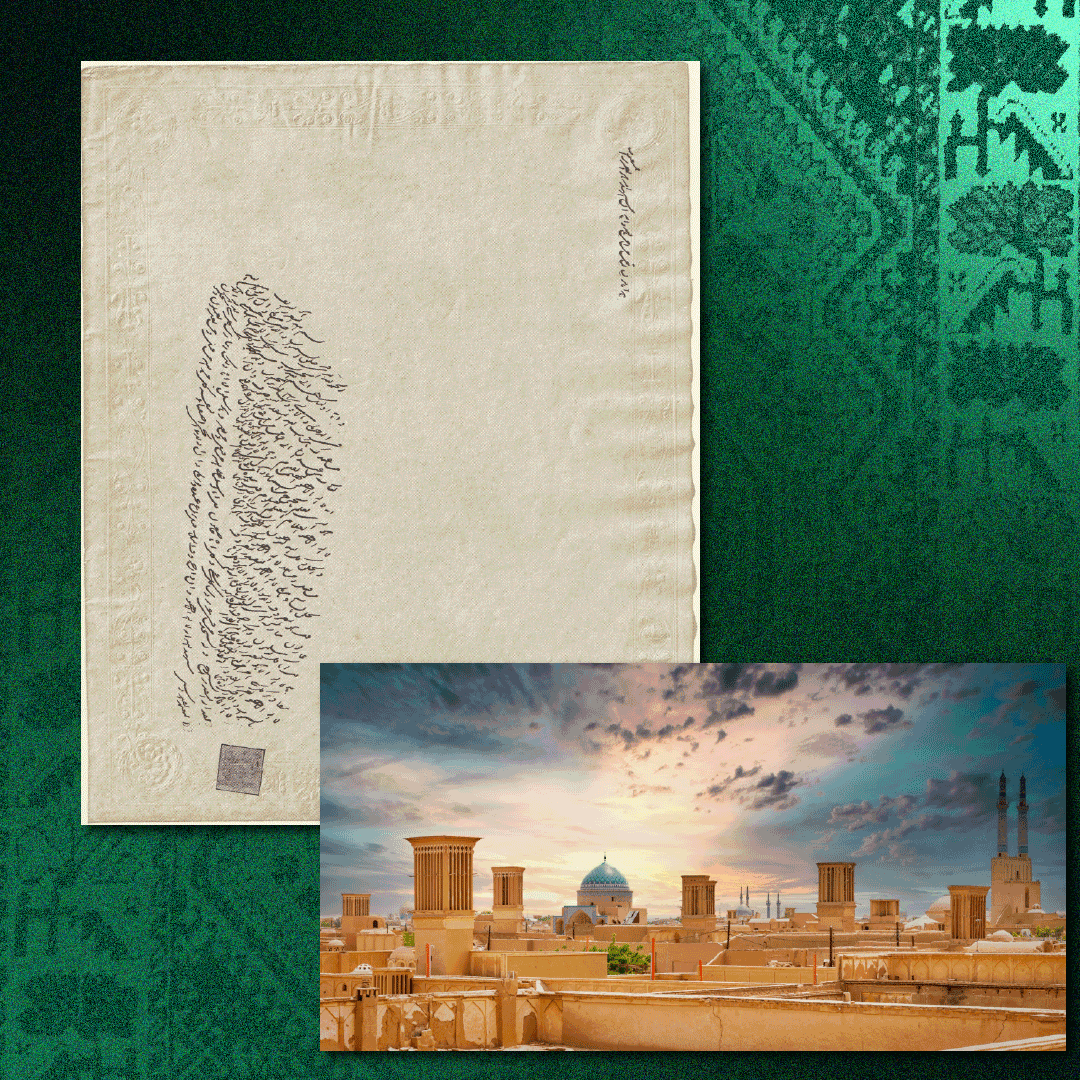
Tablet from the Báb to the Eighth Letter of the Living (Partial Inventory ID: BB00442) Source: Facsimile of the Báb's autograph Tablets addressed to the Letters of the Living and to Bahá'u'lláh, Nabil, The Dawn-Breakers, page XXI. A modern photograph of Yazd, where Mírzá Muḥammad Rawḍih-Khán-i-Yazdí was from and where he returned after recognizing the Báb.
Mírzá Muḥammad Rawḍih-Khán-i-Yazdí (or Dhákir-i-Masá’ib) was a Shaykhí and he recited Shí’ah tragedies professionally. He returned to his home town of Yazd when the Báb dispersed all the Letters of the Living in July 1844. When he arrived, he tried to teach the Bábí faith but he met hostility and eventually recanted his faith.
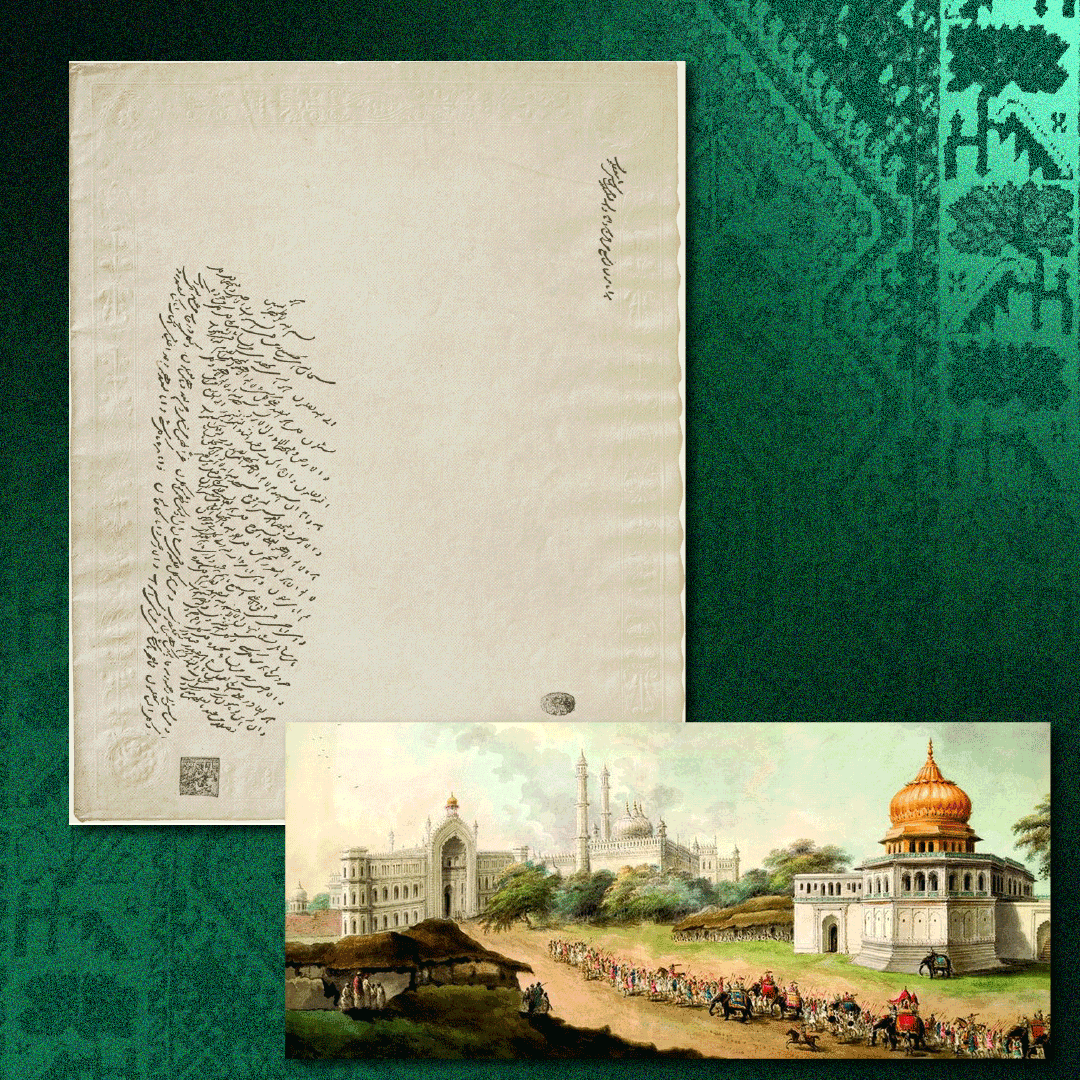
Tablet from the Báb to the Ninth Letter of the Living (Partial Inventory ID: BB00437) Source: Facsimile of the Báb's autograph Tablets addressed to the Letters of the Living and to Bahá'u'lláh, Nabil, The Dawn-Breakers, page XXI. A 19th century painting of India by Sita Ram, in honor of Sa’íd Hindí’s homeland.
It is believed that Sa’íd Hindí was born in Lucknow, the capital and largest city of the state of Uttar Pradesh, in India.
At the time, there was a small Shaykhí community in Lucknow. From India, Sa’íd Hindí made his way to Karbilá.
After he became a Letter of the Living, and quite possibly the first Indian Bábí, he returned to India and actively taught the Bábí Faith.
Eventually, Sa’íd Hindí lost contact with the Bábís and we have no information about his whereabouts in later life.
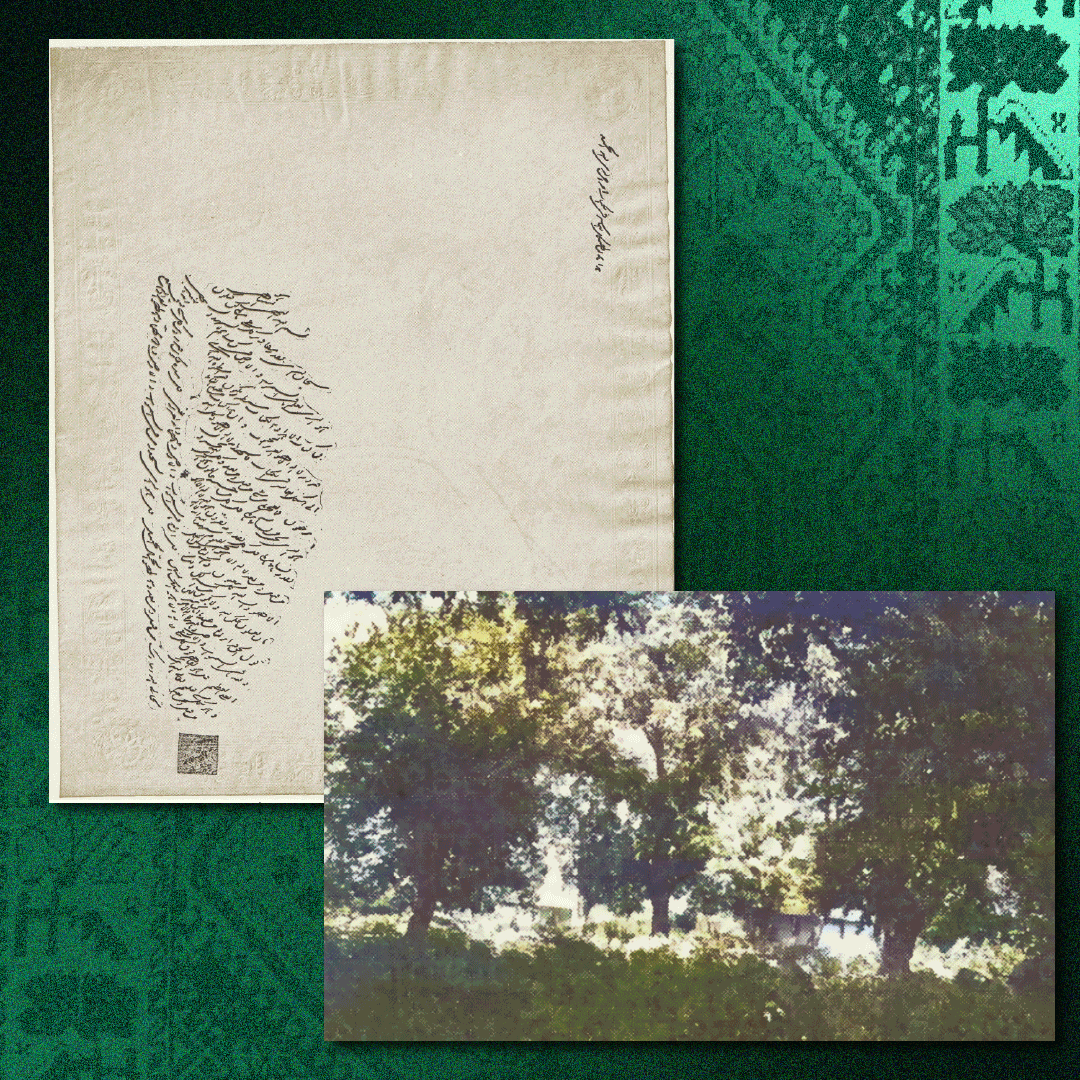
Tablet from the Báb to the Tenth Letter of the Living (Partial Inventory ID: BB00474) Source: Facsimile of the Báb's autograph Tablets addressed to the Letters of the Living and to Bahá'u'lláh, Nabil, The Dawn-Breakers, page XXI; A photograph of the site of the fort that enclosed Shaykh Ṭabarsí, where Mullá Maḥmúd-i-Khú’í was martyred, from Nabil, The Dawn-Breakers, page 345. colorized for this chronology by Violetta Zein.
Mullá Maḥmúd-i-Khú’í was born in a modest family in Qazvín. He became a Shaykhí and found the Báb in July 1844. Along with the other future Letters of the Living, he traveled to Karbilá.
Mullá Maḥmúd-i-Khú’í remained a dedicated Bábí but he did not play an active role in the Faith throughout the 1840s.
In 1848 Mullá Maḥmúd-i-Khú’í joined Mullá Ḥusayn when he raised the Black Standard and was part of the band of more than 200 Bábís who marched from Mashhád to Mázindarán.
He fought in the siege of the fort of Shaykh Ṭabarsí and surrendered, along with the surviving Bábís in May 1849. The terms of the surrender were violated and the majority of the Bábís were executed.
He died as a martyr in 1849.
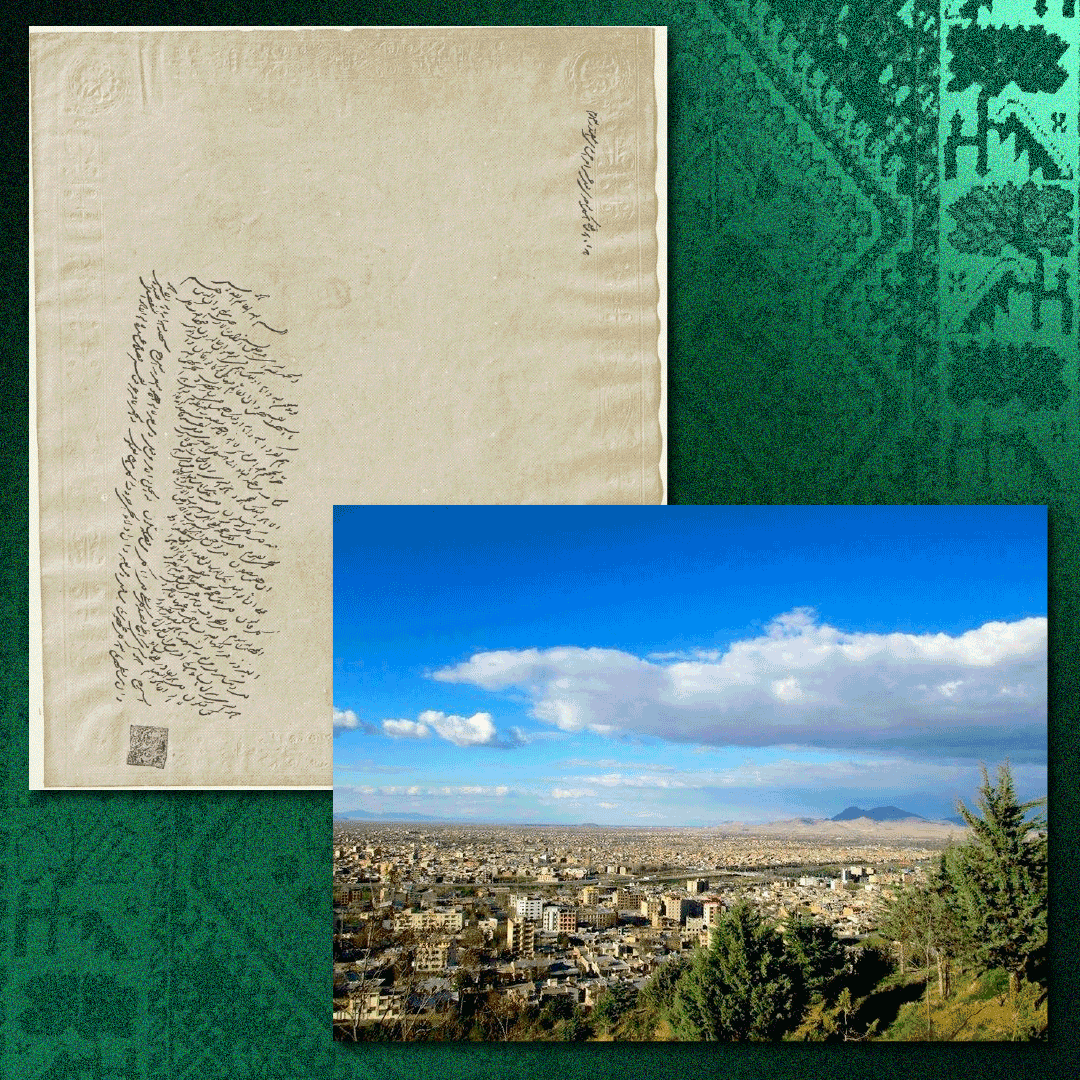
Tablet from the Báb to the Eleventh Letter of the Living (Partial Inventory ID: BB00446) Source: Facsimile of the Báb's autograph Tablets addressed to the Letters of the Living and to Bahá'u'lláh, Nabil, The Dawn-Breakers, page XXI; A modern photograph of Urúmíyyih, Ádhirbáyján, where Mullá Jalíl-i-Urúmí was from, source: Alchetron.
Mullá Jalíl-i-Urúmí was born in Urúmíyyih, Ádhirbáyján. He was originally the follower of a minority mystical religion called Yarsanism which follows the teachings of 14th century Sulṭán Sahak.
Later, Mullá Jalíl-i-Urúmí became a Muslim, then a Shaykhí, and he developed such an intense interest in the prophecies of the Qá’im that Siyyid Káẓim wrote an essay answering several of his questions on the subject.
When the Letters of the Living were dispersed, Mullá Jalíl-i-Urúmí traveled to 'Iráq and taught the Bábí Faith in the ‘Atabát—the holy cities of Shí’ah Islám. He was the one who converted the Báb’s former secretary, Siyyid ‘Alí Kirmaní, sometime in December 1844.
When Ṭáhirih was extradited back to Persia in the Spring of 1847, Mullá Jalíl-i-Urúmí was one of the many Bábís that guarded her howdah during the three-month journey. During these travels, Mullá Jalíl-i-Urúmí’s teaching efforts were very successful and he enrolled large numbers of people into the Faith. His teaching efforts sometimes were met with persecution, and he was once attacked by a mob that locked him in an Islámic school before torturing him by bastinado. Luckily for him, he was released by Bábís before the mob could get to him.
Mullá Jalíl-i-Urúmí joined Mullá Ḥusayn and marched under the Black Standard sometime around July 1848. He underwent the entire siege of the Fort of Shaykh Ṭabarsí until their surrender and was martyred on the same day as Mullá Ḥusayn, 2 February 1849.
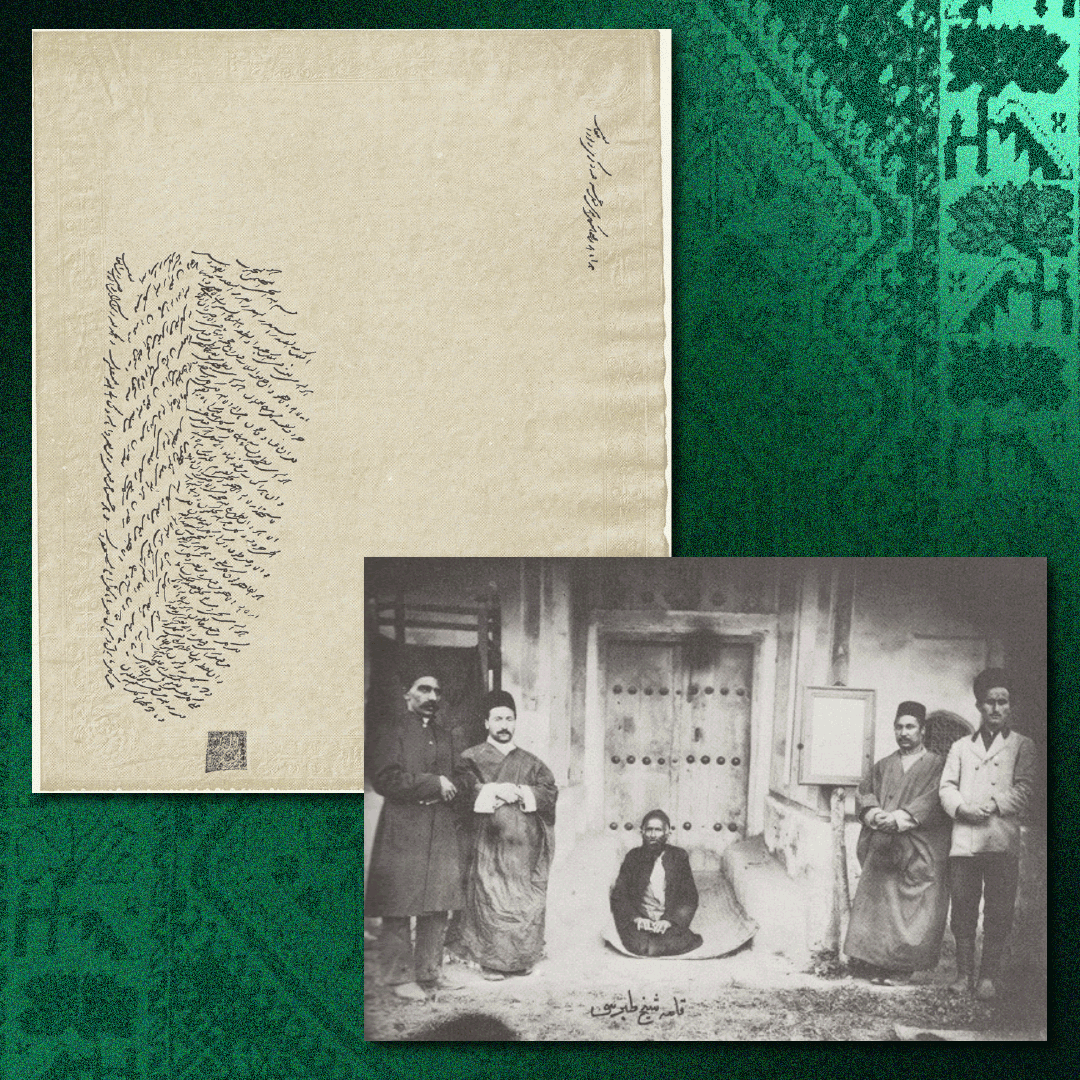
Tablet from the Báb to the Twelfth Letter of the Living (Partial Inventory ID: BB00392) Source: Facsimile of the Báb's autograph Tablets addressed to the Letters of the Living and to Bahá'u'lláh, Nabil, The Dawn-Breakers, page XXI; Photograph of the entrance of Shaykh Ṭabarsí, where Mullá Aḥmad-i-Ibdal-i-Marághi’í was martyred. Source: Nabil, The Dawn-Breakers, page 346.
Mullá Aḥmad-i-Ibdal-i-Marághi’í was born in Marághih, Ádhirbáyján. He became a Shaykhí and studied under Siyyid Káẓim, but later returned to Marághih. It was from his home town that he left for Shíráz and joined the 12 companions of Mullá ‘Alíy-i-Bastamí.
Mullá Aḥmad returned to Marághih in July 1844 after his appointment as a Letter of the Living and actively promoted the Bábí Faith. Mullá Aḥmad never played a leadership role in the Bábí community but was a successful teacher of the Cause and managed to establish a small Bábí community in Marághih.
In June – July 1848, Mullá Aḥmad attended the conference of Badasht, and joined Mullá Ḥusayn under the Black Standard shortly after. He was also martyred on the same day as Mullá Ḥusayn, on 2 February 1849.
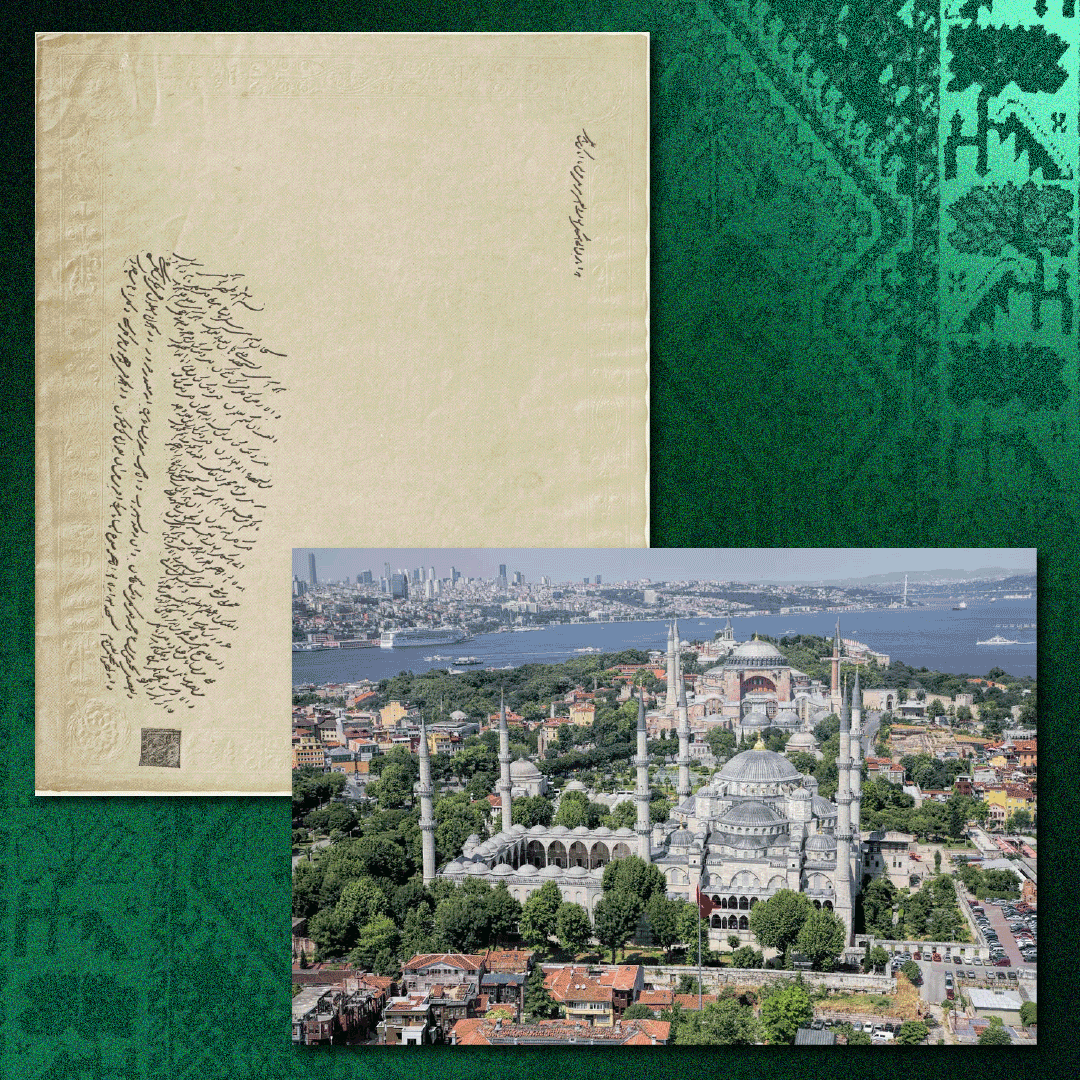
Tablet from the Báb to the Thirteenth Letter of the Living (Partial Inventory ID: BB00466) Source: Facsimile of the Báb's autograph Tablets addressed to the Letters of the Living and to Bahá'u'lláh, Nabil, The Dawn-Breakers, page XXI; A modern view of Istanbul, where Mullá Báqir-i-Tabrízí lived and passed away, with Bahá'u'lláh’s blessing, source: Encyclopedia Britannica.
WITH ṬÁHIRIH IN 'IRÁQ
Mullá Báqir-i-Tabrízí was born in Tabríz and later moved to 'Iráq and studied under Siyyid Káẓim. After the Letters of the Living dispersed, Mullá Báqir returned to Karbilá and supported Ṭáhirih.
He was part of the large band of Bábís that protected Ṭáhirih during her three-month journey back to Qazvín when she was extradited back to Persia in the Spring of 1847. He was present at the Conference of Badasht in June – July 1848.
WITH THE BÁB IN ÁDHIRBÁYJÁN
When the Báb was imprisoned in Chihríq between 1848 and 1850, close to his home town, Mullá Báqir visited Him and began acting as His intermediary for correspondences and items the Báb needed delivered to Bábís, including Bahá'u'lláh, and the Báb provided funds to support Mullá Báqir in his travels.
Mullá Báqir was the recipient of one of the Báb’s most important Tablet, known simply as “Tablet to Mullá Báqir,” but which held weighty pronouncements by the Báb, was extolled by Him as a singularly important Tablet and is regarded as the Báb’s spiritual will and testament. In this Tablet, the Báb indicates to Mullá Báqir that he would meet “Him Whom God shall make manifest.”
You can read about this Tablet in Part XI: Chihríq: The Grievous Mountain (1848-1850), Section 2: The conversion of Anís and the death of Muḥammad Sháh.
In the late Spring of 1850, when the Báb was settling His affairs shortly before His Martyrdom, it was Mullá Báqir whom He entrusted with the coffer containing important documents, a scroll addressed to “Him Whom God shall make manifest,” His seals and rings. The Báb instructed Mullá Báqir to deliver the coffer to Mírzá Aḥmad-i-Kátib, who had instructions to give it to Bahá'u'lláh.
WITH BAHÁ'U'LLÁH IN ṬIHRÁN, BAGHDÁD, AND 'AKKÁ
Immediately after the Martyrdom of the Báb, Mullá Báqir traveled throughout Persia and settled in Tabríz. In late 1852, Mullá Báqir met with Bahá'u'lláh after He had been released from the Siyáh-Chál, then traveled to Baghdád to visit Him there. For Mullá Báqir, Bahá'u'lláh was now the leader of the Bábí community.
After the Declaration of Bahá'u'lláh, Mullá Báqir became an ardent Bahá'í, a staunch supporter of Bahá'u'lláh, and His firm defender against Mírzá Yaḥyá and the Covenant-breakers. During this time, Mullá Báqir had settled in Ádhirbáyján, where he taught the Bahá'í Faith.
ISTANBUL: IN THE CITY OF CONSTANTINE
Bahá'u'lláh was exiled from Baghdád to Istanbul, Edirne, and finally to 'Akká. Mullá Báqir made two pilgrimages to visit Bahá'u'lláh in the Holy Land, and on his second pilgrimage, Bahá'u'lláh gave him permission to live out the rest of his days in Istanbul.
When Mullá Báqir died of old age in Istanbul in 1881, he was the last remaining Letter of the Living.
Mullá Báqir was the only Letter of the Living to become a Bahá'í.
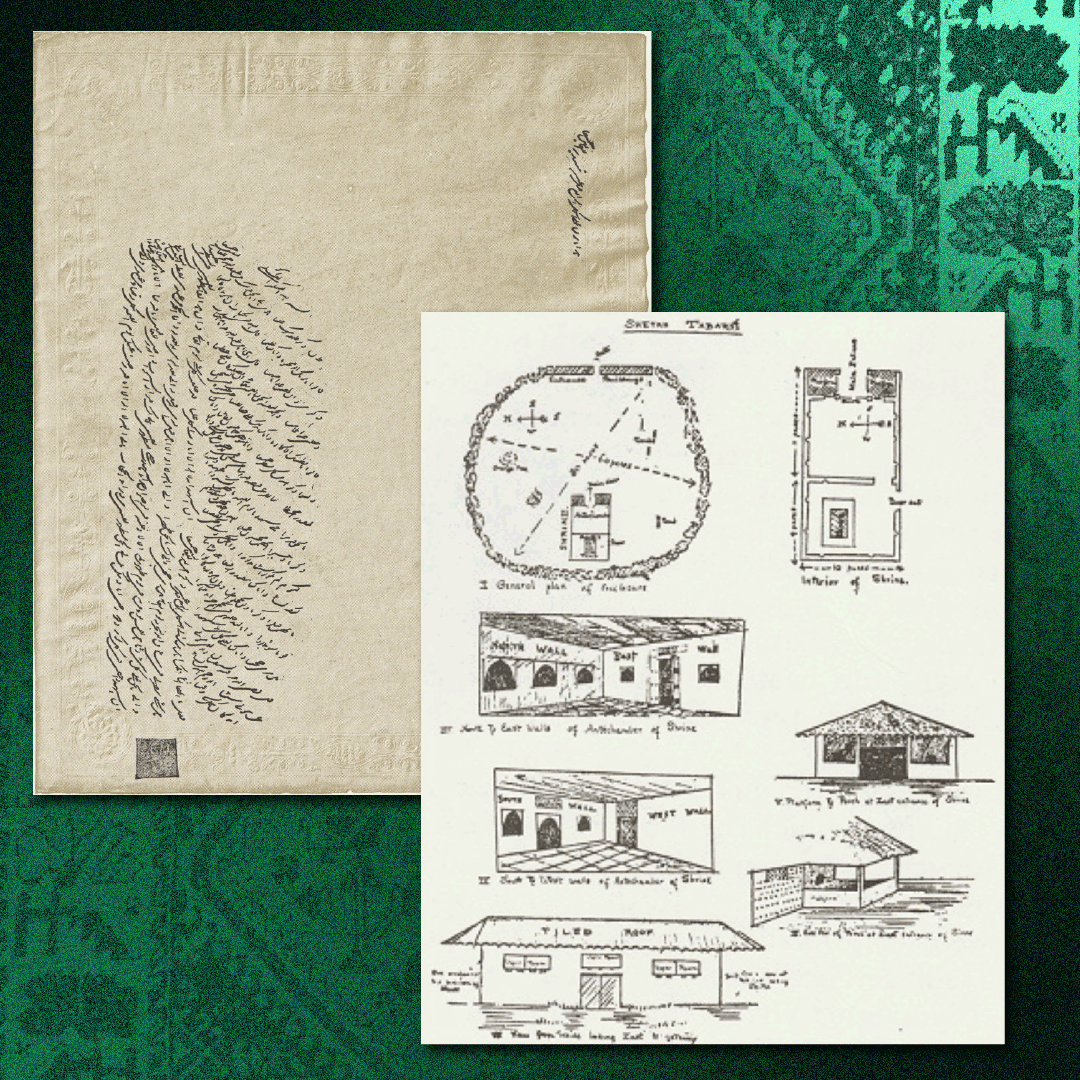
Tablet from the Báb to the Fourteenth Letter of the Living (Partial Inventory ID: BB00396) Source: Facsimile of the Báb's autograph Tablets addressed to the Letters of the Living and to Bahá'u'lláh, Nabil, The Dawn-Breakers, page XXI; Facsimile of plans and sketches of the fort o f Shaykh Ṭabarsí where Mullá Yúsuf-i-Ardibílí was martyred, source: Nabil, The Dawn-Breakers, page 348.
IN KARBILÁ WITH SIYYID KÁẒIM
Mullá Yúsuf-i-Ardibílí was a Shaykhí, originally from Ádhirbáyján. He was renowned for his learning and eloquence and was one of Siyyid Káẓim’s senior students. One of the subjects Mullá Yúsuf was passionate about were prophecies regarding the Qá’im, and he became convinced that Siyyid Káẓim was the Promised One, earning himself a reputation as an extremist Shaykhí.
Siyyid Káẓim discouraged Mullá Yúsuf’s train of thought and warned him not to speak publicly about his views that the Advent of the Qá’im was imminent.
TEACHING IN ÁDHIRBÁYJÁN
Mullá Yúsuf was part of the group of Shaykhís that accompanied Mullá ‘Alíy-i-Bastamí from Karbilá to Shíráz in late May 1844 where he became a Letter of the Living. In late July 1844, the Báb dispersed His first disciples and instructed Mullá Yúsuf to return to his home province of Ádhirbáyján. Once there, he made many intense teaching trips, less than a week long, and enrolled large numbers of new converts to the Bábí Faith in Milán, Usku, Salmas, and Saysán.
PROCLAMATION ACTIVIES IN YAZD, KIRMÁN AND QAZVÍN
Mullá Yúsuf later went travel teaching to other provinces, most notably Yazd, Kirmán and Qazvín. In 1845, Mullá Yúsuf was teaching the Faith in Yazd when he encountered opposition and was violently expelled. In Kirmán, Mullá Yúsuf and Mullá Ṣádiq Muqaddas were trying to teach Shaykhís who had become followers of Ḥájí Mírzá Karím Khán, when they were attacked by Khán’s followers and had to flee the city.
MILÁN AND TABRÍZ
By 1847, Mullá Yúsuf settled in Milán, where he had managed to establish a large Bábí community. It was largely due to his teaching efforts that a sizeable Bábí community was established in Tabríz by 1847, when the Báb spent 40 days in the city before being taken to Máh-Kú.
IN SHAYKH ṬABARSÍ
As the Mázindarán upheaval was slowly taking shape the Báb instructed Mullá Yúsuf to go to Quddús’ aid, and asked him to visit villages on the way but to ensure he arrived in Mázindarán by November 1848. Mullá Yúsuf arrived when Shaykh Ṭabarsí had already been besieged and he was captured upon arrival and held prisoner in the enemy camp. It was Quddús who freed him when he led an assault on the government encampment.
DECEPTION AND MARTYRDOM
At the end of the siege, in early May 1849, Quddús delegated Mullá Yúsuf as one of his representatives to meet with the commander of the besieging forces and discuss peace terms. The government lied about the terms of surrender they offered, and when the Bábís agreed, they were captured and imprisoned.
Mullá Yúsuf was placed in chains with other survivors of the siege of Shaykh Ṭabarsí, they were publicly beaten and paraded in the streets, and he was martyred a short time after the end of the siege.
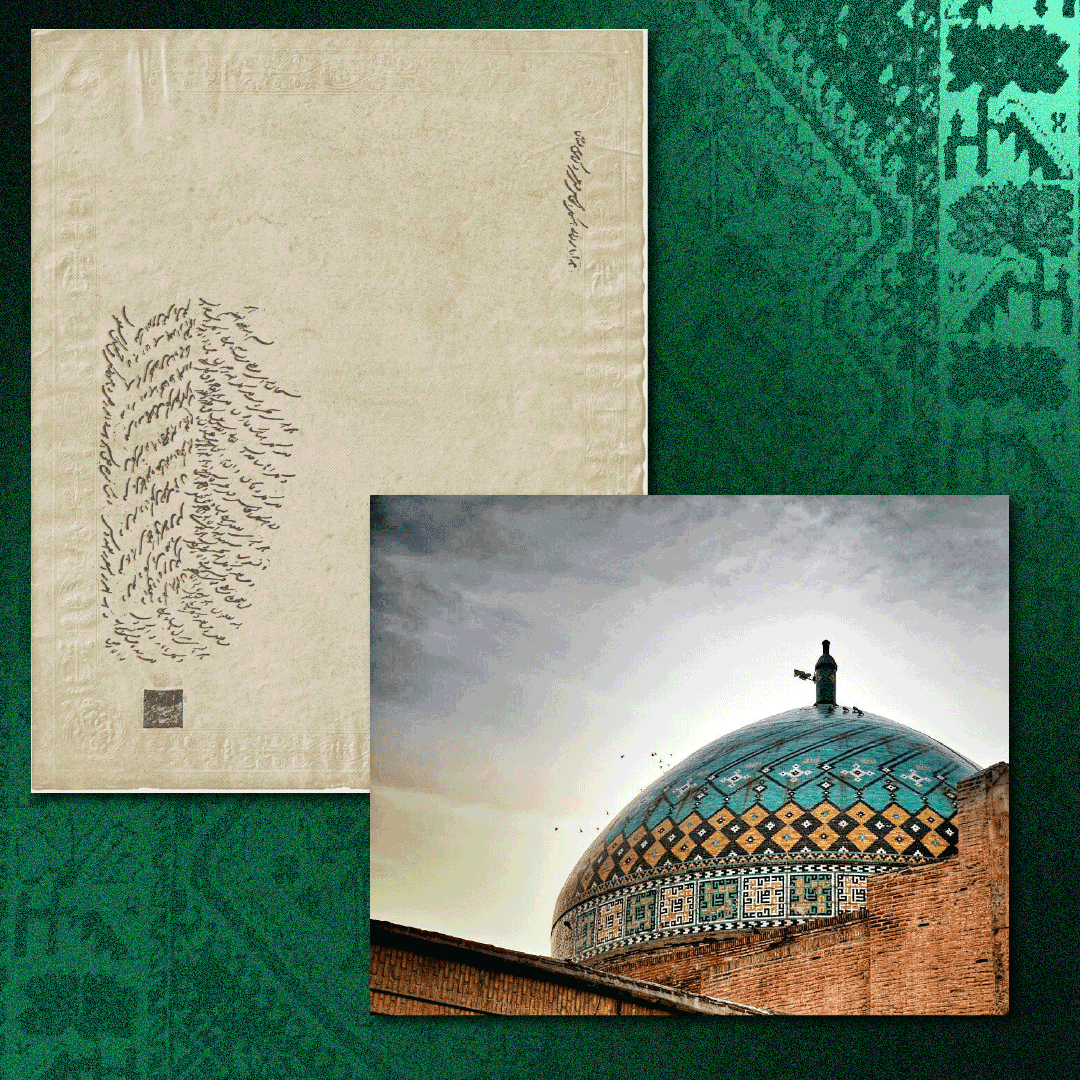
Tablet from the Báb to the Fifteenth Letter of the Living (Partial Inventory ID: BB00480) Source: Facsimile of the Báb's autograph Tablets addressed to the Letters of the Living and to Bahá'u'lláh, Nabil, The Dawn-Breakers, page XXI; The dome of the Jameh mosque in Qazvín, where Mírzá Hádí-i-Qazvíní was from. It is the oldest structure in the city dating to the 11th century. Source: Wikimedia Commons.
Mírzá Hádí-i-Qazvíní was born in Qazvín into a family of high-ranking mujtahids and his father was a well-known cleric named Mullá ‘Abd al-Wahháb. He was Ṭáhirih’s cousin and the brother of the Sixteenth Letter of the Living Mírzá Muhammad-‘Alí Qazvíní, Ṭáhirih’s brother-in-law.
He became a Shaykhí and studied under Siyyid Káẓim in Karbilá, then traveled to Shíráz with his brother and Mullá ‘Alíy-i-Bastamí and became a Letter of the Living. By the 1840s, as persecution increased against the Bábís, Mírzá Hádí avoided involvement with the community and practiced Taqiyyah, a formal denouncement of beliefs to avoid persecution. That was how Mírzá Hádí survived the period between 1848 and 1852 when thousands of Bábís lost their lives and nearly all the Letters of the Living were martyred.
After Ṭáhirih’s martyrdom in 1852, Mírzá Hádí tried to establish himself as the leader of the Bábí community in Qazvín, and gained some support among the believers. In 1866, when Bahá'u'lláh called on Mírzá Yaḥyá to renounce any claim to authority over the Bábí community.
Mírzá Hádí chose to side with Mírzá Yaḥyá and Bahá'u'lláh named him a Covenant-breake. He eventually distanced himself from the Bábí community and faded into obscurity, though he received several Tablets from Bahá'u'lláh.
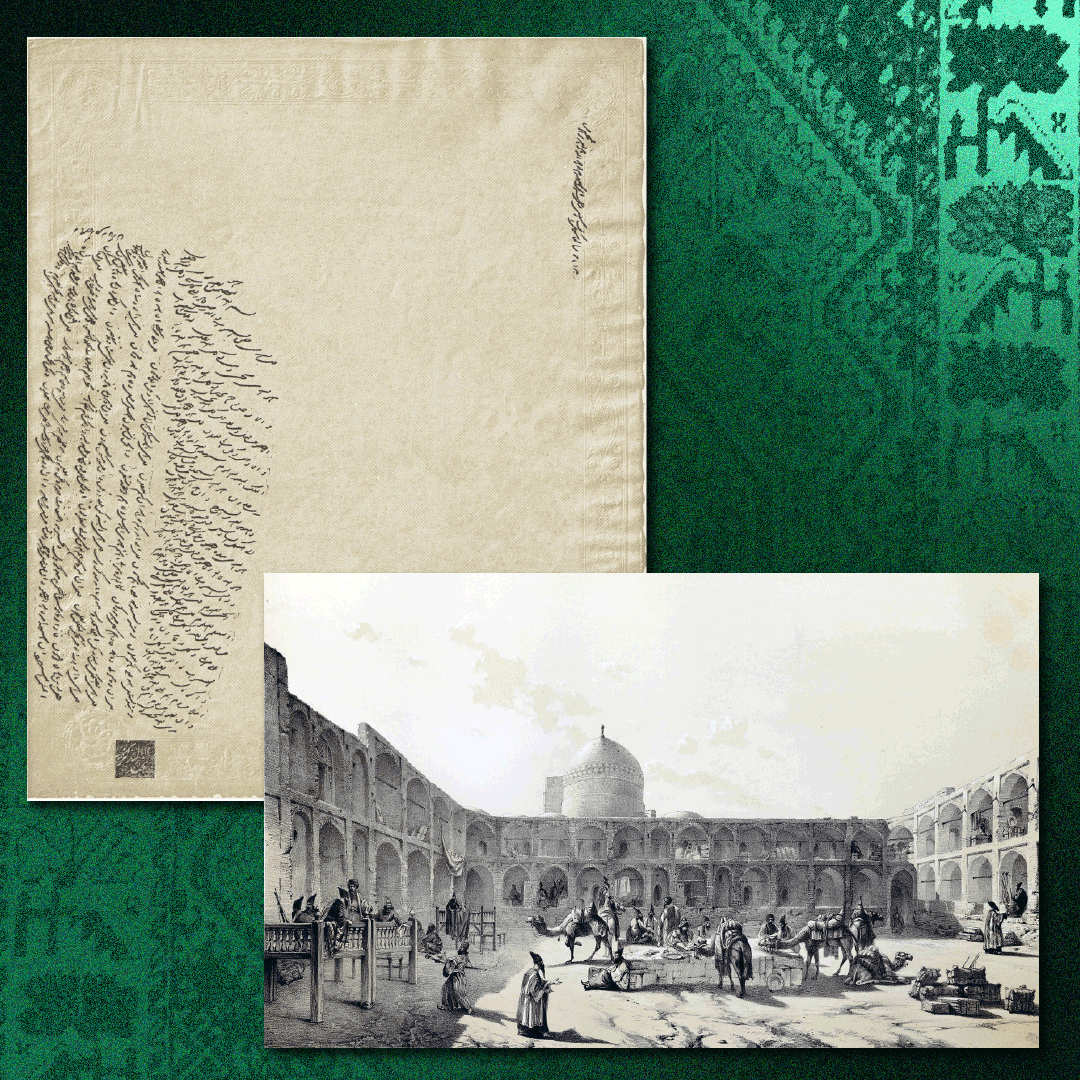
Tablet from the Báb to the Sixteenth Letter of the Living (Partial Inventory ID: BB00339) Source: Facsimile of the Báb's autograph Tablets addressed to the Letters of the Living and to Bahá'u'lláh, Nabil, The Dawn-Breakers, page XXI, a 19th century engraving by Eugène Flandin of a caravanserai in Qazvín, where Mírzá Muḥammad-‘Alíy-i-Qazvíní was from. Source: Wikimedia Commons.
Mírzá Muḥammad-‘Alíy-i-Qazvíní was the son of Mullá ‘Abdu’l-Vahháb, a mujtahid of Qazvín. Unlike many of the other sons of high-ranking clerics, Mírzá Muḥammad-‘Alíy-i-Qazvíní did not engage in clerical politics, to secure the inheritance of his father’s position.
Mírzá Muḥammad-‘Alíy-i-Qazvíní was also both the cousin and brother-in-law of Ṭáhirih, as he was the husband of her sister Marḍíyyih. He was supportive of Ṭáhirih when she became a Shaykhí, and accompanied her with Marḍíyyih in late 1843/early 1844, when she traveled to Karbilá to study with Siyyid Káẓim.
In Karbilá, he had associated closely with Ṭáhirih, and when he was about to leave and search for the Promised One, Ṭáhirih entrusted him with a sealed letter and a verbal message to be delivered to the Qá’im they were both searching for.
He delivered both to the Báb in Shíráz, and was appointed, along with Ṭáhirih, as a Letter of the Living. When the Báb dispersed His disciples from Shíráz in late July 1844, Mírzá Muḥammad-‘Alíy-i-Qazvíní returned to Karbilá with the Báb’s Tablet to Ṭáhirih.
In 1848, Mírzá Muḥammad-‘Alíy-i-Qazvíní attended the conference of Badasht, and enrolled under the Black Standard when Mullá Ḥusayn began his march towards Mázindarán at the ‘Báb’s request. He was at the fort of Shaykh Ṭabarsí during the entire Mázindarán upheaval and was martyred when the terms of the surrender were violated in the spring of 1849.
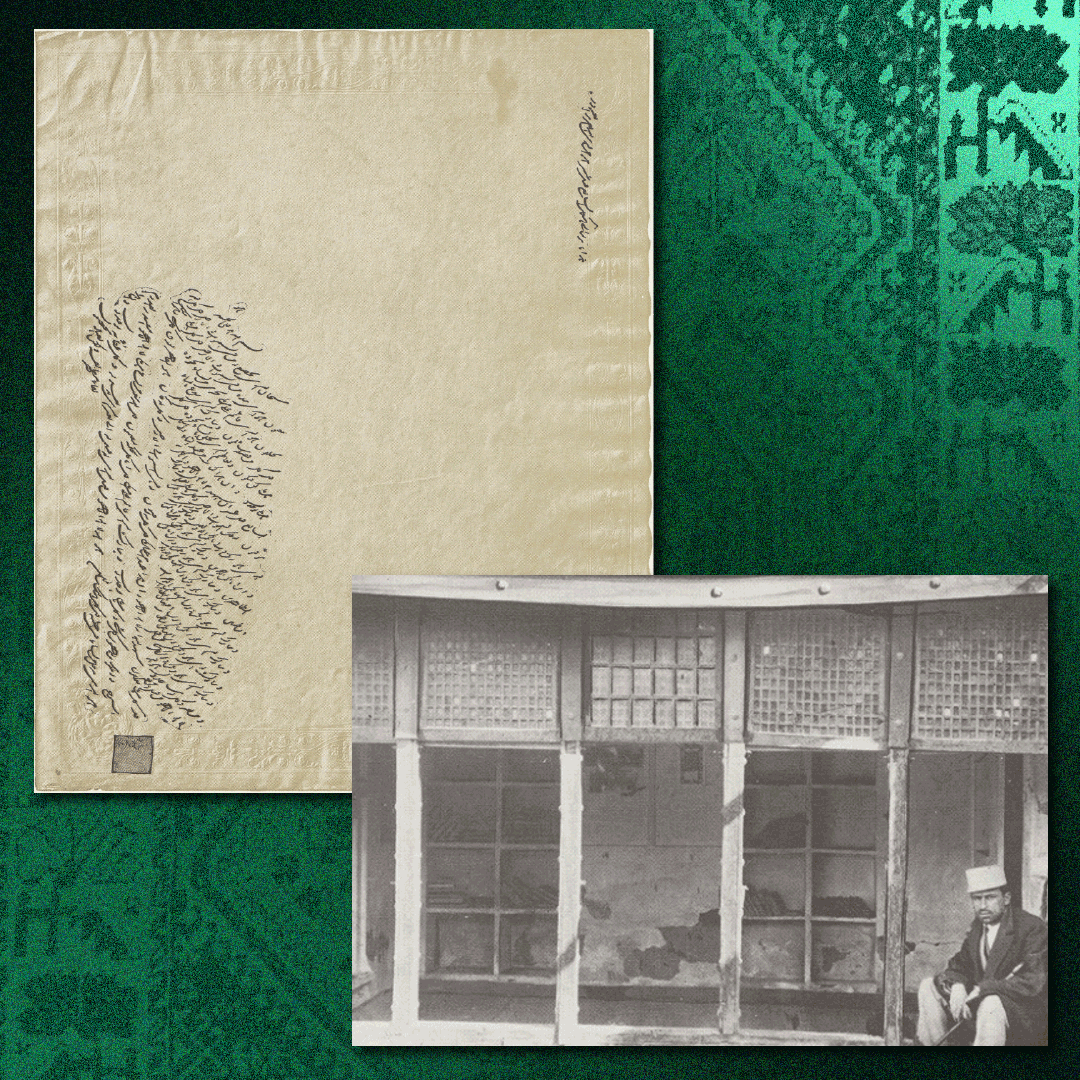
Tablet from the Báb to the Seventeenth Letter of the Living (Partial Inventory ID: BB00433) Source: Facsimile of the Báb's autograph Tablets addressed to the Letters of the Living and to Bahá'u'lláh, Nabil, The Dawn-Breakers, page XXI; Ṭáhirih’s library in her father’s home in Qazvín showing one of her relatives, source: Nabil, The Dawn-Breakers, page 274.
BIRTH AND LINEAGE
Fátimih Baraghání was born in Qazvín in 1814, the daughter of a powerful and influential cleric in Persia. Her father, Ḥájí Mullá Sálih Baragháni, emigrated from the small town of Baraghán near Qazvín and made his fortune in the city. The Baraghání family were known in Persia for their great influence and her uncle Ḥájí Mullá Taqí Baragháni was an adviser to the Sháh.
Fáṭimih Baragháni was also known by the name Umm Salmá, after the Prophet Muḥammad’s most outspoken, brilliant and quick-witted wife. In her childhood, she was given the names of Zarrín-Táj, meaning “Crown of Gold,” Zakíyyih, “the Virtuous,” and Qurratu’l-‘Ayn (“Solace of the eyes”). Ṭáhirih was an extraordinary scholar, an accomplished poet, and a woman of uncommon intuition. It was the Báb who gave her the title Ṭáhirih, which was later formalized by Bahá'u'lláh at the conference of Badasht. Ṭáhirih was a descendant of the Prophet Muḥammad through His daughter Fáṭimih and her son, the Imám ‘Alí.
EDUCATION
At a time when the majority of Persian women were illiterate, Ṭáhirih received an exemplary education. She was trained in theology, jurisprudence, literature, the Qur’án and the Ḥadíths, and was even allowed to participate in advanced theological classes with her father’s male students, from behind a curtain. She was brilliant and fearless, unbeatable in debate, and exceedingly beautiful.
13 YEARS IN 'IRÁQ
When she was around 13 years old, she married her cousin Mullá Muḥammad Baragháni, the son of Mullá Taqí Baragháni, and they left for Karbilá in order for her husband to continue his theological education. Ṭáhirih lived in Karbilá for 13 years, and her three children were born there. It was in Karbilá that she became a Shaykhí and began corresponding with Siyyid Káẓim.
SHAYKHÍ
When the young family returned to Qazvín in 1841, Ṭáhirih’s new beliefs became a source of conflict for the family. By 1843, the situation had become so unbearable, she asked for permission to go to 'Iráq and perform the ‘Atabát, the pilgrimage to the Shí’ah Holy Shrines, and she was accompanied by her sister Marḍíyyih and her husband Mírzá Muḥammad-‘Alíy-i-Qazvíní, who would later be appointed as the Sixteenth Letter of the Living. Ṭáhirih’s real aim was to meet Siyyid Káẓim, but she arrived ten days after his passing in early January 1844.
IN KARBILÁ WITH THE WIDOW OF SIYYID KÁẒIM
Ṭáhirih developed a strong bond with Siyyid Káẓim’s widow and she was allowed to take up her teacher’s classes in his home, with access to his unpublished works.
About 12 days after she arrived in Karbilá, Mullá Ḥusayn returned from Persia to find that Siyyid Káẓim had died. He retired for 40 days of prayers and fasting, and left for Shíráz.
Shortly after, Mullá ‘Alíy-i-Bastamí left from Karbilá with several Shaykhís, including Ṭáhirih’s cousin and brother-in-law, Mírzá Muḥammad-‘Alíy-i-Qazvíní. They were all headed to Shíráz, where they would eventually become Letters of the Living.
ṬÁHIRIH’S DREAM OF THE BÁB
While Mullá Ḥusayn and his companions were on a retreat of fasting and prayers at a nearby mosque, Ṭáhirih was privately immersed in the same discipline, in the house of Siyyid Káẓim. One night, after a night of vigils, she lay her head on the pillow and had a powerful spiritual dream in which she saw a young Siyyid in a black cloak and a green turban floating in the air and reciting verses. She woke up and wrote down the verses.
A MESSAGE FOR THE PROMISED ONE
Before her cousin left for Shíráz with Mullá ‘Alíy-i-Bastamí, she gave him a sealed letter to the Promised One, declaring her Faith, and asked him to convey a message to the Báb:
“Say to Him, from me, ‘The effulgence of Thy face flashed forth, and the rays of Thy visage arose on high.’ Then speak the word, ‘Am I not your Lord?’ and ‘Thou art, Thou art!’ we will all reply.’”
LETTER OF THE LIVING
Mullá ‘Alíy-i-Bastamí arrived in Karbilá around September 1844, and brought a copy of the Qayyúmu'l-Asmá'. When Ṭáhirih read the commentary, she found the verse she had heard in her dream and written down. She immediately began translating the Qayyúmu'l-Asmá' from Arabic into Persian and threw herself into teaching the Bábí Faith.
Ṭáhirih was unstoppable. She gave lectures, public statements, challenged the clerics in Karbilá, Káẓimayn, and Baghdád to public debates against her. She caused so much controversy, she had to leave Karbilá for six months and settle in Káẓimayn. She returned to Karbilá, was placed under house arrest, then left for Baghdád where she was placed under house arrest again.
THREE-MONTH PROCLAMATION JOURNEY
By 1847, Ṭáhirih was extradited to Persia and taken to the border by an Ottoman escort of ten horse-mounted men. Ṭáhirih traveled by howdah, protected by 30 armed Bábís on horses, including two Letters of the Living, Mullá Jalíl-i-Urúmí and Mullá Báqir-i-Tabrízí. The caravan took three months to arrive in Qazvín. On the way, Ṭáhirih stopped to teach in as many villages as she could.
In Karand, Ṭáhirih converted 1,200 inhabitants. In Kirmánsháh, she stayed for 40 days and set up a teaching center before being attacked with her escort. When she arrived in Sahnih, she converted the entire village to the Bábí Faith. In Hamadán, Ṭáhirih taught the Faith to two Jewish rabbis who converted.
A MARRIAGE DISSOLVED
Once she arrived in Qazvín in July 1847, Ṭáhirih dissolved her marriage with her husband:
“Say to my presumptuous and arrogant kinsman, if your desire had really been to be a faithful mate and companion to me, you would have hastened to meet me in Karbilá and would on foot have guided my howdah all the way to Qazvín. I would, while journeying with you, have roused you from your sleep of heedlessness and would have shown you the way of truth. But this was not to be. Three years have elapsed since our separation. Neither in this world nor in the next can I ever be associated with you. I have cast you out of my life forever.”
THE MURDER
Three months later, in October 1847, Ṭáhirih’s uncle Mullá Taqí, who had been mocking and slandering Ṭáhirih, the Báb, the Bábí Faith and Shaykh Aḥmad, was murdered by a Shaykhí who took offense to the obscenities he had hurled against his master.
Because Ṭáhirih had been a Shaykhí, she was held responsible for the murder and placed under house arrest for the third time in her life. There was an attempt to poison her, which failed, but she was in constant danger, her every move was watched, and she could eat nothing for fear of being poisoned.
RESCUED BY BAHÁ'U'LLÁH
When a plan was announced to kill her, Ṭáhirih prophesied:
"If my Cause be the Cause of Truth, if the Lord whom I worship be none other than the one true God, He will, ere nine days have elapsed, deliver me from the yoke of your tyranny.”
Nine days later she was free. Bahá'u'lláh had planned an elaborate rescue mission to free Ṭáhirih from her jail in Qazvín and bring her to Ṭihrán, an ingenious plan perfectly executed by two hand-picked Bábís, a husband wife team. The wife approached Ṭáhirih and delivered messages back and forth. The couple followed Bahá'u'lláh’s very detailed instructions to the letter. They found the horses exactly where Bahá'u'lláh had arranged for them to find them, traveled a deserted road indicated by Bahá'u'lláh, reached Ṭihrán at dawn, and headed to Bahá'u'lláh’s house as soon as the gates to the city opened, using extreme caution throughout.
IN ṬIHRÁN WITH BAHÁ'U'LLÁH, ÁSÍYIH KHÁNUM, AND 'ABDU'L-BAHÁ
Ṭáhirih was taken to the home of Bahá'u'lláh, and was housed in His wife, Ásíyih Khánum’s private parlor. Ásíyih Khánum personally looked after Ṭáhirih while she was their guest. Ṭáhirih’s stay in the home of Bahá'u'lláh and Ásíyih Khánum was short but powerful. She recognized the station of Bahá'u'lláh, about Whom she had been writing poetry since 1844, praising the beauty and the glory of Bahá.
She also recognized the future station of 'Abdu'l-Bahá, then a five-year-old boy. Ṭáhirih’s spiritual gift of intuition, unparalleled in the recorded history of the heroic age of the Bábí Faith, had allowed her to recognize intuitively the stations of all three Central Figures of the Bahá'í Dispensation: the Báb, Bahá'u'lláh, and 'Abdu'l-Bahá.
During Ṭáhirih’s stay in the home of Bahá'u'lláh, Vaḥíd arrived, and Ṭáhirih was busy with 'Abdu'l-Bahá. When Bábís came to fetch her, asking her to leave the child, Ṭáhirih turned to 'Abdu'l-Bahá:
"Shall I leave thee, Protector of the Cause, and go to see one of the followers of the Cause?"
THE CONFERENCE OF BADASHT
Soon after her arrival, Bahá'u'lláh sent Ṭáhirih to Khurásán, as instructed by the Báb who was then in Máh-Kú. While preparations were being made for the long journey to Badasht, Ṭáhirih spent a week in a delightful orchard 12 kilometers (8 miles) outside of Ṭihrán, which Bahá'u'lláh called the “Garden of Paradise,” telling Ṭáhirih:
"That house has been providentially prepared for your reception, that you may entertain in it the loved ones of God."
The conference of Badasht lasted 22 days, from 26 June to 17 July 1848, and the full story is told in Part X: The Examination of the Báb in Tabríz. Section 4: The Conference of Badasht, so we will greatly summarize the proceedings here to focus on the rest of Ṭáhirih’s life.
The purpose of the conference of Badasht was to sound the advent of the Bábí Dispensation in a memorable, unforgettable way, and to wake complacent Bábís to the groundbreaking teachings of the Báb, effecting a final break with any cultural ties to or traditions of Islám. There were three leaders at the conference of Badasht, and they had pre-arranged their respective roles in order to effect a maximum impact: Quddús was the conservative voice, Ṭáhirih was the revolutionary, and Bahá'u'lláh was the voice of moderation.
THE CLIMAX OF BADASHT: ṬÁHIRIH REMOVES HER VEIL
During the entire conference, Quddús and Ṭáhirih played off each other until the final confrontation, when Ṭáhirih asked Quddús to meet her, he refused, she insisted, and she arrived, unveiled and unadorned, and sounded the bugle of the advent of the new Dispensation, at the exact time that the Báb was publicly proclaiming His message during His examination at Tabríz. Ṭáhirih proclaimed to her companions:
“I am the Word which the Qá’im is to utter, the World which shall put to flight the chiefs and nobles of the earth!...This is the day of festivity and universal rejoicing, the day on which the fetters of the past are burst asunder. Let those who have shared in this great achievement arise and embrace each other.”
Ṭáhirih had not simply removed her veil. She had single-handedly proclaimed the inauguration of the new Dispensation, breaking the last tie with Islám by freeing women from the veil, Islám’s most visible symbol.
TWO YEARS IN MÁZINDARÁN
For two years after the conference of Badasht, Ṭáhirih wandered around the province of Núr, Bahá'u'lláh’s ancestral home. From 1848 to 1849, she spent a year traveling from village to village. First, she went to Bárfurúsh, and spoke publicly at a mosque.
The enthusiasm and devotion she caused incited the jealousy and anger of the mujtahid and she had to leave. She then stayed in Amúl, nearby, and stopped in several villages until she reached Tákur, where she met Bahá'u'lláh in His ancestral home. She also travelled to Babol, the native town of Quddús, sometime in September 1848, where she stayed with a friendly Mullá.
From 1849 to 1850, Ṭáhirih lived on a farm in the village of Vaz. By this point, 10 of the 18 Letters of the Living had been martyred, and Ṭáhirih was one of the few left alive.
UNDER HOUSE ARREST IN ṬIHRÁN
Someone in the surrounding area reported Ṭáhirih to the authorities, and she was arrested in January 1850, taken to Ṭihrán, and charged with accessory to the murder of her father-in-law in Qazvín. She had been separately summoned by the two most powerful men in Persia: Naṣiri'd-Dín Sháh, and his prime minister Mírzá Taqí Khán, a man so powerful the Sháh called him his Regent.
Ṭáhirih was under house arrest for the fourth time in her life. Her two years of imprisonment in Ṭihrán, in the home of the Mayor of the capital saw her unbroken, unbent, unbowed. She became more popular than ever. The high society of Ṭihrán asked to meet her, women flocked to her little room in the mayor’s house, she converted a Princess to the Bábí Faith, she continued to write poems. She was once summoned to a wedding and Ṭáhirih stole the show. She effortlessly attracted everyone’s attention with her radiance, told funny stories that made the women laugh, recounted her sufferings, which made them cry, she chanted her poetry, and, as a result, a large number of those present became Bábís.
THE MARTYRDOM OF ṬÁHIRIH
On 15 August 1852, Naṣiri'd-Dín Sháh was attacked by three crazed, misguided Bábís who tried to assassinate him with a dull knife and a pellet pistol. The repercussions on the Bábí community were immediate. Bahá'u'lláh was arrested and thrown into the Siyáh-Chál, and Bábís were arrested throughout Persia. That summer, the entire country would be bathed in the blood of innocent Bábís as they murdered thousands in retribution for the assassination attempt.
Shortly after the attempt, two clerics who had held seven lengthy interviews with Ṭáhirih, issued a final fatwá against her branding her as a heretic to be executed.
On the night of her martyrdom, she left her room and climbed down to the courtyard where she bathed. She returned to her room and wore her most costly dress of snow-white silk, and while singing, perfumed herself with the choicest attar of roses, content and happy, She said her goodbyes to the women of the household, asked them to forgive her for the inconvenience of her presence in the house, behaving at the same time like a woman preparing herself for her wedding night, and someone going on a long journey.
Once Ṭáhirih had said her goodbyes, she wrapped herself up in a shawl, and filled with joy, smiled at the weeping women around her, and spoke:
“Tonight I am going to undertake a great, a very great voyage.”
When the guards arrived for Ṭáhirih, she had been ready, fasting, praying, and waiting for them. She told the mayor:
“You can kill me as soon as you like, but you cannot stop the emancipation of women.”
They covered her over with a coat to make her look like a man, and took her to a garden where ‘Azíz Khán Sardár, the Minister of War was waiting for her. The first man he ordered to strangle Ṭáhirih with a silk handkerchief ran off, and the second man simply strangled her.
When Ṭáhirih lost consciousness, her still living body was thrown into a well and covered over with stones and earth. They snuffed her life out like they were trying to extinguish a light.
We do not know the exact date of Ṭáhirih’s martyrdom but it was shortly after 15 August 1852.
THE STATION OF ṬÁHIRIH
Ṭáhirih’s legacy has been an enduring pull on our collective imagination. The first woman to publicly unveil, the only female leader of the Bábí community, the only woman Letter of the Living, an extraordinary poet, a brilliant scholar, a deeply intuitive mystic.
To end this biography of Ṭáhirih, here are several excerpts from the Báb, Bahá'u'lláh, and 'Abdu'l-Bahá on her station:
The Báb revealed several Tablets specifically about Ṭáhirih. In one of them He states:
“She verily, in Mine estimation, is a noble leaf who hath purified her heart from the defilement of limitations for the sake of her Lord. May God bless all those who appreciate her station and refrain from harming her even to the slightest degree. For verily she is in this day the pride of her kin and the honor of all those who follow her in the command of God.”
In yet another letter the Báb writes about Ṭáhirih:
“She is the one who believed in her Lord and opposed her selfish desires; and feared the justice of her Lord and awaited the Day of meeting Her Creator… Verily it would be contrary to My pleasure for anyone to deny her; and if they hear a pronouncement from her that their minds are unable to grasp and their souls unable to understand, leave it in His path until God will pass judgement through the power of truth.”
And, in yet another tablet the Báb states:
“It is not for any of the dwellers in the abode of justice to refute Ṭáhirih in her knowledge, for she verily is aware of the realities of the divine Revelation by the grace of God, and she is in this day a source of honor for this host. Whoso causeth any injury to her person in the Cause has committed a grievous sin.”
Bahá’u’lláh wrote in later years that she was one of His most fiery followers, calling her “the Point of Ecstasy Jináb-i-Ṭá” and saying,
“[There was] the Point of Ecstasy Jináb-i-Tá, upon her be the Glory of God the Most Glorious. For a long time, she was with this Servant and would not have bartered a moment of her visit with this Servant for the kingdom of this world or the next. Indeed, she did not wish to be separated from me for even a moment, but what happened was destined to occur. And so many were the verses and poems she uttered regarding this wonderous Faith. And among them that mention the Abhá Countenance was an ode, one verse of which reads: “If Bahá were to cast away the veil from His face, A hundred thousand like Azal would appear.”
In a lengthy Tablet of Visitation to be recited for Ṭáhirih, Bahá'u'lláh affirms:
How can I make mention of the calamities thou endured, O Crimson Leaf? By God, the leaves of the Sadratu’l-Muntahá [The Tree beyond which there is no passing] were shed after thou fell from the Tree of the Cause, and the boughs of the Tree of Immortality broke off, and the branches of the Lote-Tree of Paradise were dried up, and the hearts of the holy ones bled, and the faces of the chosen ones turned pale, and the hearts of the pious were lacerated in the Garden of Repose, and the Faithful Spirit cried out in the presence of thy Lord, and lamented all that dwell on Earth and in Heaven…Thou art the one who, as soon as thou heard the call of God, did not tarry even for a moment, and rushed toward Him detached from all else save Him and believed in Him and His supreme verses, and recognized His Manifestation in His days… Thou art the one who wast a stranger in thy homeland and a prisoner in thy house and held far from the Court of Holiness despite thy yearning, and wast prohibited from the Habitation of Nearness despite thy longing…Thou art the one who was moved at all times by the breezes of the Will of thy Lord, the All-Merciful, as He wished and desired, and there was no movement or stillness for thee unless it was by His command and leave. Well it is with thee for having dissolved thy will in the Will of thy Creator and thy wish in whatsoever thy Lord hath desired…Thou art the one who bore in the path of her Lord that which no handmaiden among those who worship God hath endured . . . O thou pride of men!
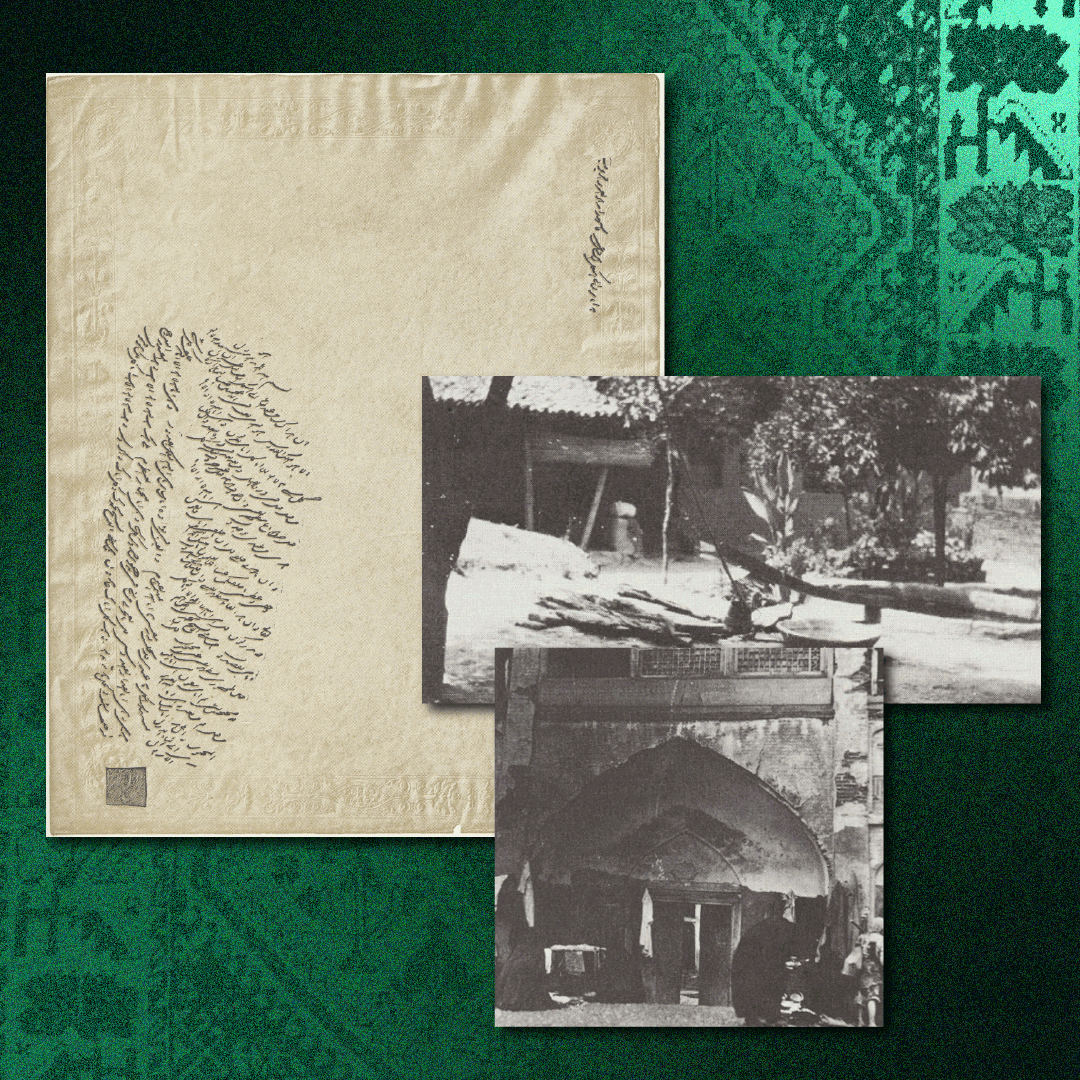
Tablet from the Báb to the Eighteenth Letter of the Living (Partial Inventory ID: BB00443) Source: Facsimile of the Báb's autograph Tablets addressed to the Letters of the Living and to Bahá'u'lláh, Nabil, The Dawn-Breakers, page XXI. Top photograph: the home of Quddús’ father in Barfurúsh; Bottom: The resting place of Quddús in the Madrisih of Mírzá Zakí, In Barfurúsh Source: Nabil, The Dawn-Breakers, pages 182 and 413.
CHILDHOOD AND EDUCATION
Mullá Muḥammad-‘Alí Bárfurúshí, better known by his title Quddús (“the Most Holy”), was the last Letter of the Living after Ṭáhirih.
Quddús was born around 1819/1820 in Bárfurúsh, Mázindarán in a family of rice farmers. Quddús spent part of his childhood as a house servant for a local Shaykhí leader, Mullá Muḥammad-Hamza Sharí’at-Madár and was later sent to Sárí, a nearby town, for Qur’anic education in a madrassa.
When he was a teenager in the mid-1830s, he traveled to Mashhád and met Mullá Ḥusayn and a small group of future Bábís.
He was sent to the town of Sárí for a madrassa education. Sometime in the mid-1830s he met Mullá Ḥusayn (the first Letter of the Living) and other future Bábís after he joined a small group of students in Mashhad. A few years later, when he was 18, Quddús traveled to Karbilá and spent four years studying under Siyyid Káẓim, then returned to Bárfurúsh in 1843.
LETTER OF THE LIVING
Quddús became a mullá, a Shí’ah religious leader, and he was charismatic, affable, dignified. He became a notable person in Bárfurúsh, until he was irresistibly pulled towards Shíráz, where he found the ‘Báb, accompanied by Mullá Ḥusayn when he arrived from his long journey.
Quddús instantly recognized the Báb by His gait:
“…none besides Him, whether in the East or in the West, can claim to be the Truth. None other can manifest the power and majesty that radiate from His holy person.”
WITH THE BÁB ON PILGRIMAGE
The Báb confirmed to Mullá Ḥusayn that He had been communicating with Quddús in the world of the spirit, and that He had been awaiting his arrival. It was Quddús that the Báb chose, among all the Letters of the Living, to accompany Him on His pilgrimage to Mecca and Medina.
Three months after the remaining Letters of the Living had left Shíráz, the Báb left for Búshihr, then Mecca and Medina for His pilgrimage accompanied only by Quddús and Ḥájí Mubárak. Quddús served as the Báb’s amanuensis, constantly taking down the Báb’s Revelation, and he was the one who delivered the Báb’s Tablet to the Sherif of Mecca, along with a volume of the Báb’s Writings. We will be looking at the Báb’s pilgrimage in detail in the next part, Part VI, so we will continue the story of Quddús after their return from Saudi Arabia.
PERSECUTIONS AND TEACHING
When the Báb returned to Búshihr with Quddús and Ḥájí Mubárak in the Spring of 1845, He informed Quddús that they were to part ways, and that they would never see each other again:
"Yours will be the ineffable joy of quaffing the cup of martyrdom for His sake. I, too, shall tread the path of sacrifice, and will join you in the realm of eternity."
The Báb’s prophecy was almost immediately accomplished. Shortly after His pronouncement, Quddús was persecuted in Shíráz, the city was in an uproar, hearing that he Báb had returned from pilgrimage, and they took it out on two Bábís: Quddús and Mullá Ṣádiq.
Persians in the 19th century had barbaric methods of torturing people and Quddús and Mullá Mullá Ṣádiq received a monstrous treatment. Their beards were burned, their noses pierced, and a string was pulled through their nose, on which weights were hung. The two men were paraded in the streets in that state, then expelled from Shíráz.
After this, Quddús traveled the length and breadth of Persia teaching the Bábí Faith, and attended the conference of Badasht. We looked at the conference of Badasht in detail in the story of Ṭáhirih, so we will resume the story of Quddús after the conference.
THE SIEGE OF THE FORT OF SHAYKH ṬABARSÍ
During the siege of the Fort of Shaykh Ṭabarsí from 10 October 1848 to 10 May 1849, Quddús was the commander of the Bábí forces upon his arrival at the fort. Over the next several months, miraculous victories were won by the untrained, outnumbered Bábís. During the last month of the siege, the Bábís had no food or water, and survived by eating shoe leather and ground bones.
The Mázindarán upheaval at Shaykh Ṭabarsí was an embarrassment to the Persian government and if they could not win honorably, they would do whatever it took to end it. Prince Mihdí Qulí Mírzá, sent Quddús a copy of the Qur'an and wrote on the opening Súrih:
"I swear by this most holy Book, by the righteousness of God who has revealed it, and the Mission of Him who was inspired with its verses, that I cherish no other purpose than to promote peace and friendliness between us. Come forth from your stronghold and rest assured that no hand will be stretched forth against you…”
The Prince assurances of peaceful intentions went on, and on, in the name of Naṣiri'd-Dín Sháh, in the name of honor, swearing they would never assail the Bábís if they surrendered, and begging to be cursed by God if they lied, assuring Quddús over and over again that he was being truthful.
He wasn’t.
THE MARTYRDOM OF QUDDÚS
When the Bábís agreed to surrender, they left the fort and were all gathered under a tent, disarmed, and taken prisoner. The army destroyed the fort and opened fire on the rest of the Bábís, and killed everyone, nearly 600 people.
Prince Mihdí Qulí Mírzá escorted Quddús to Bárfurúsh where the locals were celebrating their great victory, on their way to Ṭihrán, to hand him over to Naṣiri'd-Dín Sháh. But the evil Sa’ídu’l-‘Ulamá of Bárfurúsh, the one who had sent the Bábís running for refuge to Shaykh Ṭabarsí at the start of the upheaval, wanted to keep Quddús close and deny him food and water until he could kill him with his own hands.
On 16 May 1849 Quddús was handed over to an angry mob. Bahá'u'lláh recounted his martyrdom to Nabíl:
“By the testimony of Bahá’u’lláh, that heroic youth, who was still on the threshold of his life, was subjected to such tortures and suffered such a death as even Jesus had not faced in the hour of His greatest agony.”
Quddús’ body was torn apart and its pieces thrown into a fire. A friend gathered some of his remains in order to bury them in a nearby grave.
The Báb was in Chihríq when he heard what happened to Quddús, Mullá Ḥusayn, and the 600 Bábís at the fort of Shaykh Ṭabarsí and he stopped Revelation for five months in a state of grief. For the full story, read Part XI: Chihríq: The Grievous Mountain (1848 – 1850) Section 5: The Báb grieves the massacre at Shaykh Ṭabarsí.
THE STATION OF QUDDÚS
Two excerpts below from Shoghi Effendi and the Universal House of Justice clarify the station of Quddús. In the first excerpt, Shoghi Effendi clarifies that Quddús does not have the station of a prophet but that his station is far above all the other 17 Letters of the Living:
"Regarding the station of Quddús, he should by no means be considered having had the station of a Prophet. His station was no doubt a very exalted one, and far above that of any of the Letters of the Living, including the first Letter, Mullá Ḥusayn. Quddús reflected more than any of the disciples of the Báb the light of His teaching."
Letter from Shoghi Effendi to an individual believer dated 11 November 1936
In this excerpt of a letter from the Universal House of Justice, the station of Quddús is described in terms or prophecy:
"It may be helpful to consider that in the Dispensation of the Báb, Quddús is referred to as the "Last Point", and the "Last Name of God", is identified, as pointed out in God Passes By, with one of the "Messengers charged with imposture" mentioned in the Qur’án, and is one of the "two witnesses" into whom "the spirit of life from God" must enter, as attested by Abdu'l-Baha in Some Answered Questions, yet, despite these sublime stations, he is not regarded as an independent Manifestation of God."
Letter from the Universal House of Justice to an individual believer dated 24 August 1975.
REFERENCES FOR PART V
Late June 1844: Mullá ‘Alíy-i-Bastamí and his 12 companions
Shoghi Effendi, God Passes By.
The Bahá’í Encyclopedia Project: Letters of the Living (Ḥurúf-i-Ḥayy).
Nabil, The Dawn-Breakers, pages 65-70.
DATE
Moojan Momen, The Trial of Mullá ‘Alí Bastámí: A Combined Sunní-Shí’í Fatwá against The Báb, published in Iran: Journal of the British Institute for Persian Studies, 20, pages 113-143 (1982).
July 1844: Mullá ‘Alíy-i-Bastamí’s first encounter with the Báb
Shoghi Effendi, God Passes By.
The Bahá’í Encyclopedia Project: Letters of the Living (Ḥurúf-i-Ḥayy).
Nabil, The Dawn-Breakers, pages 65-70.
Fereydun Vahman (Editor),The Bab and the Babi Community of Iran (2020), Chapter 1: The Báb: A Sun in a Night Not Followed by Dawn by Fereydun Vahman.
Starting July 1844: The remaining Letters of the Living
Nabil, The Dawn-Breakers, page 82.
Quddús: Last Letter of the Living
Nabil, The Dawn-Breakers, pages 69-70.
The Báb entrusts Mullá Ḥusayn with a Tablet for Bahá’u’lláh
Shoghi Effendi, God Passes By.
Nabíl, The Dawn-Breakers, pages 66-87, page 96, and page 123.
The Báb sends Mullá ‘Alíy-i-Bastamí on a mission
Nabíl, The Dawn-Breakers, pages 87-91.
The Báb gives special tasks to each of the remaining Letters of the Living
Nabíl, The Dawn-Breakers, pages 92-94 and page 123.
The address of the Báb to the Letters of the Living
Nabíl, The Dawn-Breakers, pages 92-94 and page 123.
The Báb’s last instructions to Mullá Ḥusayn
Shoghi Effendi, God Passes By.
Nabíl, The Dawn-Breakers, pages 66-87, page 96, and page 123.
A period of intense activity in the house of the Báb
Baharieh Rouhieh Ma’ani, Leaves of the Twin Divine Trees, pages 35-36.
A.L.M. Nicolas’s translation of the Persian Bayán, pages 24-25, quoted in Nabil, The Dawn-Breakers, note 47 in Chapter III: The Báb, The Persian Bayán (Vahíd I, Báb 2).
Introduction: The Letters of the Living
Shoghi Effendi, God Passes By.
The Bahá’í Encyclopedia Project: Letters of the Living (Ḥurúf-i-Ḥayy).
Letters of the Living: Title and theological statement
The Bahá’í Encyclopedia Project: Letters of the Living (Ḥurúf-i-Ḥayy).
Prophecies about the Letter of the Living
Shoghi Effendi, God Passes By.
The First Letter of the Living: Mullá Ḥusayn-i-Bushrú’í
Read the authorized translation of the Báb’s letter to the First Letter of the Living in Selections from the Writings of the Báb.
Bahaipedia: Mullá Ḥusayn.
The Bahá’í Encyclopedia Project: Letters of the Living (Ḥurúf-i-Ḥayy).
Bahá’u’lláh, The Kitáb-i-Íqán.
The Second Letter of the Living: Muḥammad-Ḥasan
ncyclopedia Project: Letters of the Living (Ḥurúf-i-Ḥayy).
The Third Letter of the Living: Muḥammad-Báqir
ncyclopedia Project: Letters of the Living (Ḥurúf-i-Ḥayy).
The Fourth Letter of the Living: Mullá ‘Alíy-i-Basṭamí
Bahaipedia: Mullá ‘Alíy-i-Bastámí.
The Bahá’í Encyclopedia Project: Letters of the Living (Ḥurúf-i-Ḥayy).
Fereydun Vahman (Editor),The Bab and the Babi Community of Iran (2020), Chapter 1: The Báb: A Sun in a Night Not Followed by Dawn by Fereydun Vahman.
The Fifth Letter of the Living: Mullá Khudá-Bakhsh-i-Quchání
Bahaipedia: Mullá Khudá-Bakhsh-i-Quchání.
The Bahá’í Encyclopedia Project: Letters of the Living (Ḥurúf-i-Ḥayy).
The Sixth Letter of the Living: Mullá Ḥasan-i-Bajistání
Bahaipedia: Mullá Ḥasan-i-Bajistání.
The Bahá’í Encyclopedia Project: Letters of the Living (Ḥurúf-i-Ḥayy).
The Seventh Letter of the Living: Siyyid Ḥusayn-i-Yazdí
Bahaipedia: Siyyid Ḥusayn-i-Yazdí.
The Bahá’í Encyclopedia Project: Letters of the Living (Ḥurúf-i-Ḥayy).
The Eighth Letter of the Living: Mírzá Muḥammad Rawḍih-Khán-i-Yazdí
Bahaipedia: Mullá Muḥammad Rawḍih-Khán Yazdí.
The Bahá’í Encyclopedia Project: Letters of the Living (Ḥurúf-i-Ḥayy).
The Ninth Letter of the Living: Sa’íd-i-Hindí
Bahaipedia: Sa‘íd Hindí.
The Tenth Letter of the Living: Mullá Maḥmúd-i-Khú’í
Bahaipedia: Mullá Maḥmud Khu’í.
The Eleventh Letter of the Living: Mullá Jalíl-i-Urúmí
Bahaipedia: Mullá Jalíl-i-Urúmí.
The Twelfth Letter of the Living: Mullá Aḥmad-i-Ibdal-i-Marághi’í
Bahaipedia: Mullá Aḥmad-i-Ibdál Marághi’í.
The Thirteenth Letter of the Living: Mullá Báqir-i-Tabrízí
Bahaipedia: Mullá Báqir Tabrízí.
The Fourteenth Letter of the Living: Mullá Yusif-i-Ardibílí
Bahaipedia: Mullá Yúsúf-i-Ardibílí.
The Fifteenth Letter of the Living: Mírzá Hádí-i-Qazvíní
Bahaipedia: Mullá Hádí-i-Qazvini.
The Sixteenth Letter of the Living: Mírzá Muḥammad-‘Alíy-i-Qazvíní
Bahaipedia: Mullá Muḥammad-`Alí Qazvíní.
The Seventeenth Letter of the Living: Ṭáhirih
The full provisional translation of the Báb’s Tablet to the Seventeenth Letter of the Living is available on Adib Masumian’s website.
Nabíl, The Dawn-Breakers, pages 66-84.
‘Abdu’l-Bahá, Memorials of the Faithful, Chapter 69: Ṭáhirih.
‘Abdu’l-Bahá, Twelve Table Talks Given by ‘Abdu’l-Bahá in ‘Akká, Number 9: Ṭáhirih and the Conference of Badasht.
Janet Ruhe-Schoen, Rejoice in my gladness : the life of Táhirih.
Martha Root, Ṭáhirih The Pure.
Paul Smith, Tahirih: Life and Poems of the Great Female Persian Bahá’í Poet & Martyr.
Roya Akhavan Ph.D., The Trumpet Blast: Removing the Veil from the Advent of the Promised One.
REFERENCES FOR THE WRITINGS OF THE BÁB AND BAHÁ’U’LLÁH
EXCERPT 1 BY THE BÁB: “She verily, in Mine estimation, is a noble leaf who hath purified her heart …”
English translation: Translated by Roya Akhavan Ph.D., for inclusion in The Trumpet Blast: Removing the Veil from the Advent of the Promised One.
Original Tablet: Tablet of the Báb quoted in Mohammad Hoseini, Hazrat-i-Ṭáhirih, page 212.
EXCERPT 2 BY THE BÁB: “She is the one who believed in her Lord and opposed her selfish desires…”
English translation: Translated by Roya Akhavan Ph.D., for inclusion in The Trumpet Blast: Removing the Veil from the Advent of the Promised One.
Original Tablet: Tablet of the Báb quoted in Mohammad Hoseini, Hazrat-i-Ṭáhirih, page 212.
EXCERPT 3 BY THE BÁB: “It is not for any of the dwellers in the abode of justice to refute Ṭáhirih…”
English translation: Translated by Roya Akhavan Ph.D., for inclusion in The Trumpet Blast: Removing the Veil from the Advent of the Promised One.
Original Tablet: Tablet of the Báb quoted in Mohammad Hoseini, Hazrat-i-Ṭáhirih, page 212.
EXCERPT 4 BY BAHÁ’U’LLÁH: “[There was] the Point of Ecstasy Jináb-i-Tá, upon her be the Glory of God the Most Glorious…”
English translation: Bahá’u’lláh, Lawḥ-i-Qarn, provisional translation quoted in Hatcher and Hemmat: The Poetry of Ṭáhirih, page 2.
EXCERPT 5 BY BAHÁ’U’LLÁH: “How can I make mention of the calamities thou endured, O Crimson Leaf?…”
English translation: Excerpt from the Tablet of Visitation revealed by Bahá’u’lláh for Ṭáhirih, translated by Roya Akhavan Ph.D., for inclusion in The Trumpet Blast: Removing the Veil from the Advent of the Promised One.
Original Arabic: Mohammad Hoseini, Hazrat-i-Ṭáhirih, pages 336-339.
The Eighteenth Letter of the Living: Quddús
The Báb’s Tablet to the Eighteenth Letter of the Living has been provisionally translated by Joshua Hall and can be read in full at his website.
Nabíl, The Dawn-Breakers, pages 66-84, 143, and 399.
Bahaipedia: Quddús.
 July 1844: Mullá ‘Alíy-i-Bastamí’s first encounter with the Báb
July 1844: Mullá ‘Alíy-i-Bastamí’s first encounter with the Báb
